To God, With Gratitude 200 YEARS OF SLUH


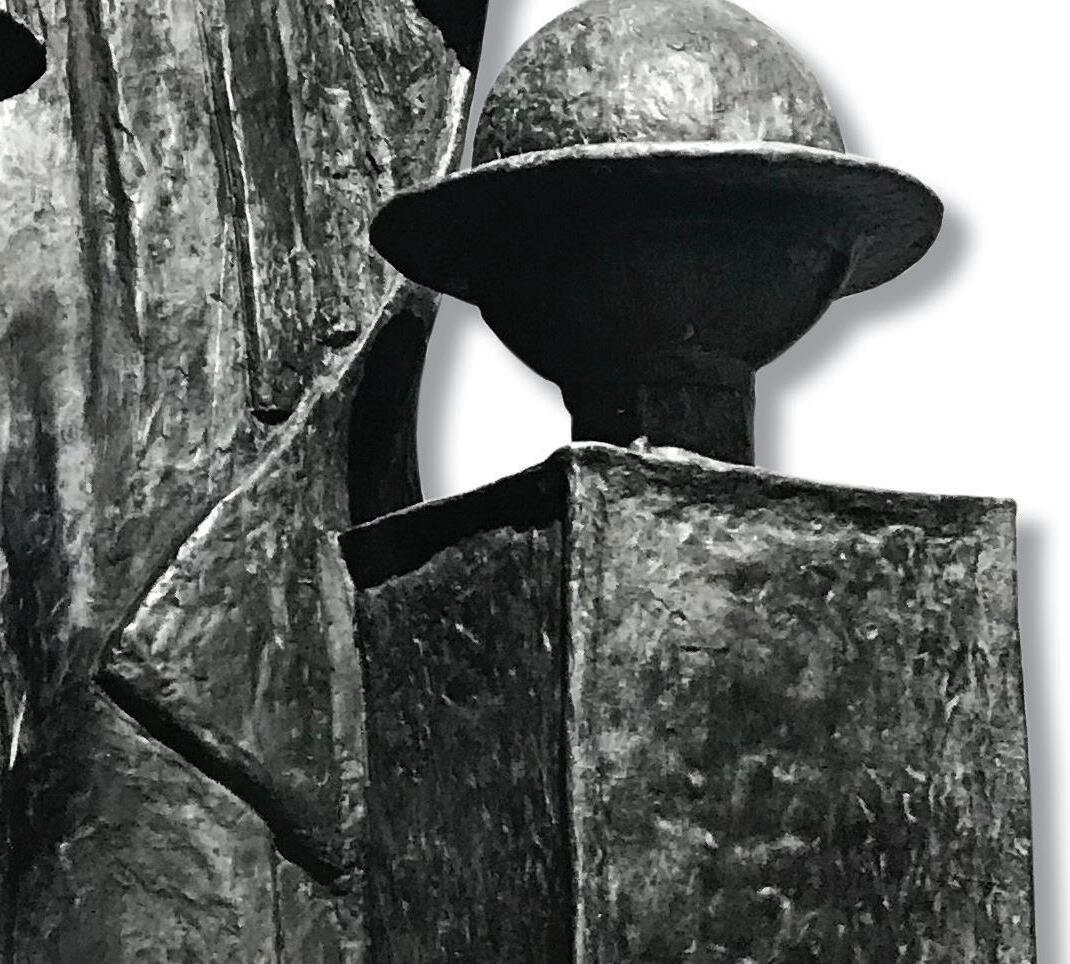





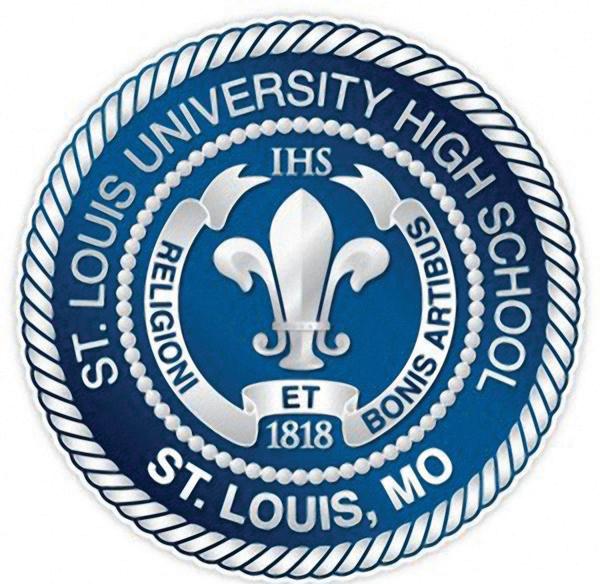 BY FRANK KOVARIK ’94
BY FRANK KOVARIK ’94

Copyright © 2018, St. Louis University High and Reedy Press. All rights reserved.
St. Louis University High 4970 Oakland Avenue
St. Louis, MO 63110
Published in cooperation with: Reedy Press
PO Box 5131
St. Louis, MO 63139
No part of this publication may be reproduced or transmitted in any form or by any means, electronic or mechanical, including photocopy, recording, or any information storage and retrieval system, without permission in writing from the publisher.
Permissions may be sought directly from Reedy Press at the above mailing address or via our website at www.reedypress.com
Library of Congress Control Number: 2018960820
ISBN: 9781681061931
Printed in the United States of America 18
19 20 21 22 5 4 3 2 1
Foreword
by David J. Laughlin
For nearly two thousand years, the Catholic Church has shared the eternal message of Jesus Christ with the world—and, for more than fi ve hundred years, the Jesuits have been worldwide servants and leaders of the Church in this eff ort. Although members of the Society of Jesus are involved in a number of ministries, they are perhaps best known for their work in educational excellence.
The United States, like every country, has benefi ted from the missionary and intellectual spirit of the Jesuits, carried out in their ministries and schools. St. Louis University High School (SLUH), the second-oldest Jesuit school in the United States, is proud to celebrate two hundred years of service as a part of the Jesuits’ ongoing educational mission. This book is one way of remembering and commemorating such remarkable longevity.

III
(continued)

HOW DID THIS LONGEVITY HAPPEN?
Faith, a pioneering spirit, a willingness to take risks, a flexibility to adapt to the relevance of the times, and a commitment to top intellectual, character, and ethical formation have combined to see our school exist on five different campuses. There has been tremendous growth in our metropolitan area and much change in the landscape of education over those years. Through it all, SLUH has been known as a leadership school for our city, our region, and, indeed, for our nation and our world.
As we have formed young people, our school’s tradition asks them to take great intellectual formation, their many talents, and a well-formed conscience into our world to serve their fellow human beings and their world with excellence. All of this has been dedicated with the Society of Jesus motto, a script heading many papers submitted to teachers over the centuries: Ad Majorem Dei gloriam, a Latin term meaning “For the greater glory of God.”
In celebrating two hundred years, we continue to look to a bright future and our shared eternal horizon, which is the foundation of our purpose in Jesus Christ.
We reflect with great gratitude on the many Jesuits, teachers, administrators, coaches, moderators, directors, and staff who have influenced the lives of our Jr. Bills. As well, we celebrate with fondness the many parents who selected SLUH for their sons’ education and, of course, our many alumni and current students, for whom the school exists. Together, we remember our growth as individuals as well as the lifelong connections in friendship and family that have centered on SLUH.
I would like to add my special thanks to Frank Kovarik ’94 for his contributions as author, and to our Fr. John J. Divine, S.J. Award–winning Archive Committee (Terry Donohue ’63, Ron Horst ’63, Marty O’Brien ’63, Tim O’Connell ’63, Lee Schilligo ’63, Bob St. Vrain ’63, and Norm Thomas ’63) for their efforts in preserving such a rich history.
God bless you and may God continue to bless SLUH for many generations to come.
In
Christ, David J. Laughlin President (2005–18)
FOREWORD v
TABLE OF CONTENTS Introduction xi Part One xii 1803 From Napoleon to Du Bourg 3 1818 Born in Modest Circumstances 4 1819 Moving On Up 5 1821 SOS, S.J. 6 1823 Negotiating with the New Arrivals 7 1829 A Solid Jesuit Foundation 8 1831 The Passing of St. Regis 10 1833 Slavery 12 1833 Tuition 14 1836 The Challenges of Diversity 14 1844 & 1854 Riots 16 1849 Fire and Contagion 17 1861 A Divided University 21 1888 A Strong High School and a Grand Location 22 1901 Proto-SLUH 24 1916 When the Bills Went Marching In 25 Part Two 26 1924 Anna Backer’s Generous Vision 30 Becomes a Reality 1927 Tornado 35 1927 Jesuit Legacy: Fr. Francis Benoit, S.J. 36 1930 SLUH Separates from SLU 37 1936 The Death of Anna Backer 38 1936 Future Pope Visits SLUH 40 1938 Jesuit Legacy: Fr. John J. Divine, S.J. 42 1939 Smoke Commissioner 43 1941-1945 World War II and SLUH 44 1944 Claude Heithaus, S.J., ’16, Denounces 47 Racial Segregation 1945 “Easy Ed” Macauley, No. 22 48 1945 Rec Room Excavated 49 1947 Jesuit Legacy: Brother Thomas Thornton, S.J. 50 1949 Joseph Schulte and the The Dauphin Players 52 1950 Trailblazers for Inclusion 54 1950 Jesuit Legacy: Fr. Marty Hagan, S.J. 56




1950s A New Era: Legendary Lay Teachers 58 1953 Jesuit Legacy: Phil Kellett, S.J. 62 1954 Jesuit Legacy: Fr. Paul Distler, S.J. 63 1955 Jesuit Legacy: Gerald Sheahan, S.J. 64 Mid-Century Men for Others 66 1958 Jesuit Legacy: Fr. William Doyle, S.J. 68 1961 The Hoodlum Priest 70 Jesuit Legacy: Transformative Presidents 72 Teachers in Time: Charlie Conway and Richard Keefe 74 Female Students 76 Women at SLUH 77 1971 The Vietnam War 79 Innovations of the ’70s: Senior Project and 80 Weekly Newspaper 1972 The Robinson Library 84 1979 Sisyphus 86 1983 First Lay Principal 87 African American Teachers 88 Global Education 90 1998 The Unknown Soldier 92 Legendary Teacher-Coaches 93 Bridging the Divide 96 Behind the Scenes at SLUH 101 Technology 102 The Becvar Legacy 104 2005 First Lay President 105 Initiations 106 2013 Imagining 18 108 2018 A Papal Audience 109 2018 Looking Back on 200 Years 111 Sources 114 Acknowledgments 122 About the Author 123 Presidents 124 Principals 125 Backer Award 126 John J. Divine, S.J., Aluni Service Award 127 Board of Trustees 128 Athletics 129 SLUH Sports: An Overview 135 Index 145

To God, With Gratitude 200 YEARS



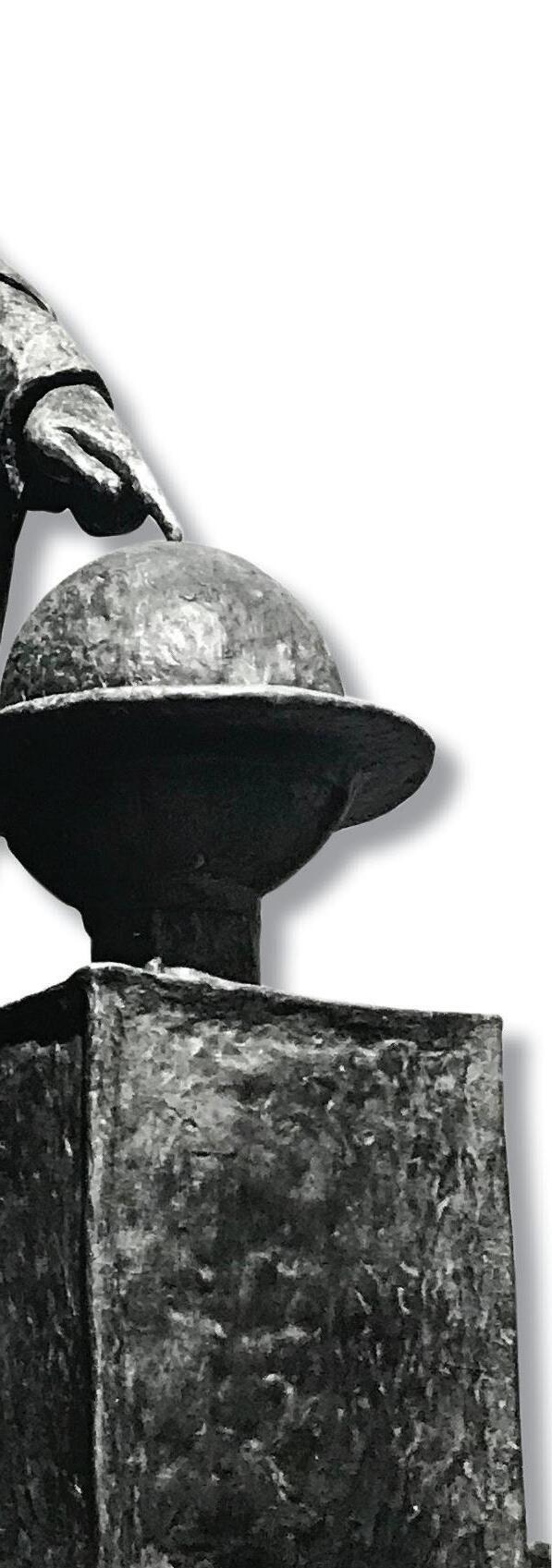



OF SLUH


 Introduction
by Ian Gibbons, SJ
Introduction
by Ian Gibbons, SJ
The pedagogical vision of St. Ignatius of Loyola created one of the most radical and transformative models of education and continues to inspire SLUH today. The genesis of such a vision is located in the foundational documents of the Society of Jesus, starting with the Formula of the Institute. This 1540 mission statement for St. Ignatius’s proposed religious order was presented to Pope Paul III, and the document provided the impetus for a complete reimaging of sixteenthcentury education. The Formula begins:
In our society, which we wish to be called by the name Jesus, let whoever desires to fight under the sacred banner of the Cross, and to serve only God and the Roman pontiff, His vicar on earth, after a solemn vow of perpetual chastity, let him keep in mind that he is part of a society, instituted for the purpose of perfecting souls in life and in Christian doctrine, for the propagation of the faith through public preaching, ministering the word of God, spiritual macerations, works of charity, and especially through the teaching of the young and uninstructed in the Christian precepts; and lastly for giving consolation to believers in hearing their confessions. Let him think first of God, then of the rule of this order, which is the way to Him; and let him follow after the end proposed by God with all his strength.
Consider this mission statement in the context of what we have done as our core work at SLUH since 1818:
✞ Perfecting souls in life
✞ Forming men for others
✞ Propagating the faith through public preaching
✞ Completing works of charity
✞ Teaching the young
✞ Giving consolation to believers
In pondering this list, we quickly realize that the Formula is indeed our SLUH mission.
St. Ignatius of Loyola was both a soldier and a person of fierce imagination. His rare combination of precision and creativity spawned the Spiritual Exercises and inspired some of the greatest Christian art and architecture throughout the world. Ignatius’s vision also institutionalized liberal arts education as an apostolic form of sociopolitical transformation. When Jesuits educate the children of the powerful, Gospel virtues imbue the aspirations of our graduates, thus creating an impactful force for social justice. In also educating the children of the least powerful, the Society of Jesus paves a path out of economic despair for many more. Jesuit education is transformative. The formation of our young men at SLUH is tied closely to the training of young Jesuit scholastics for the priesthood. Junior Billikens are taught the comprehensive rigors of science, math, history, logic, and rhetoric, creating lifetimes of professional capacity. Our students also are inspired by music, art, theater, language, and theology to help them recognize the eternal themes of truth, beauty, goodness, and justice as they exist (or are missing) in the world. All of this formation prepares our Jesuit graduates to be holy heroes in a world that desperately needs them. Their mission is nothing less than to serve under the banner of the cross.
TO
x
GOD, WITH GRATITUDE | 200 YEARS OF SLUH
While each Jesuit school is uniquely situated in a particular geographic region and foundational story, that school is part of a marvelous project outlined in the Formula of the Institute. As we celebrate our two-hundred-year story and look toward our third century, SLUH will continue to live out the Jesuit vision of the Formula. St. Ignatius surely gazes down upon our work at SLUH with both familiarity and pride.
 Ian Gibbons, SJ Principal
AMDG
Ian Gibbons, SJ Principal
AMDG
Part One
The school that would eventually come to be known as St. Louis University High School (SLUH)—the first high school west of the Mississippi, even before the concept of a “high school” existed—faced a fearsome array of challenges in its first century of existence. The school struggled mightily during its first decade, and it would have closed were it not for the disobedience of an early administrator. Fire and pestilence, hatred and war—each of these would also threaten the nascent institution.

Competition in the marketplace of education pushed the school to innovate and adapt. Throughout these challenges, members of the school community—Jesuits, teachers, students, parents, and alumni—kept alive the dream of a school dedicated to academic excellence, service to the community, and, most important, the greater glory of God.


Schools like SLUH are anchors for the Church. Amid the swirling currents of history that swept through St. Louis, the school remained a constant. Founded before Missouri was even a state, it helped stabilize the region and offered a gathering point for some of the region’s leaders. Nativist riots threatened the school from without, the Civil War threatened to tear it apart from within, and in the postwar years history threatened to leave it behind. Yet even in its lowest moments, faith kept its spirit alive, and the gratitude of alumni and benefactors maintained its solvency.




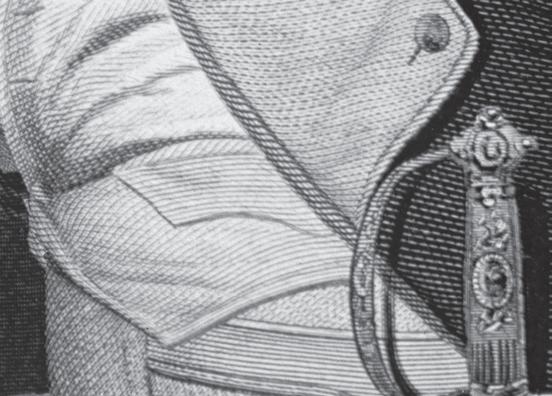






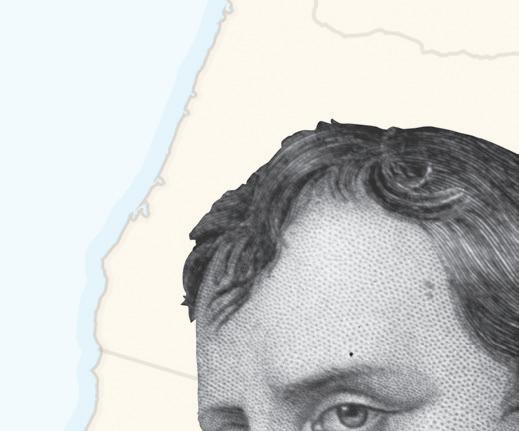


As the school began its second century, one such benefactor would express that gratitude with a gift that gave SLUH an independent life of its own. Anna Backer, whose husband George Backer had attended both the academic (high school) and collegiate divisions of Saint Louis University, funded the construction of a school building on Oakland Avenue. It has cradled this precious institution to the present day. Generations of boys have been formed into men in these halls and classrooms. With gratitude for the Backers’ generosity and for the sacrifices of all who have shepherded the school through its long and challenging history, we begin this bicentennial chronicle.



| 200
OF
2
TO GOD, WITH GRATITUDE
YEARS
SLUH
1803
Napoleon sold France’s claim to the Louisiana territory to the American president Thomas Jefferson. The river town of St. Louis was at the eastern edge of this territory.
From Napoleon to Du Bourg


The genesis of the school that would come to mean so much to so many for so long had its roots in events of world-historical importance and sheer accident.
It was an accident, for example, that French fur traders set up shop in Spanish territory in 1764, founding a city that they named after their nation’s thirteenth-century king, canonized as Saint Louis nearly five hundred years before.





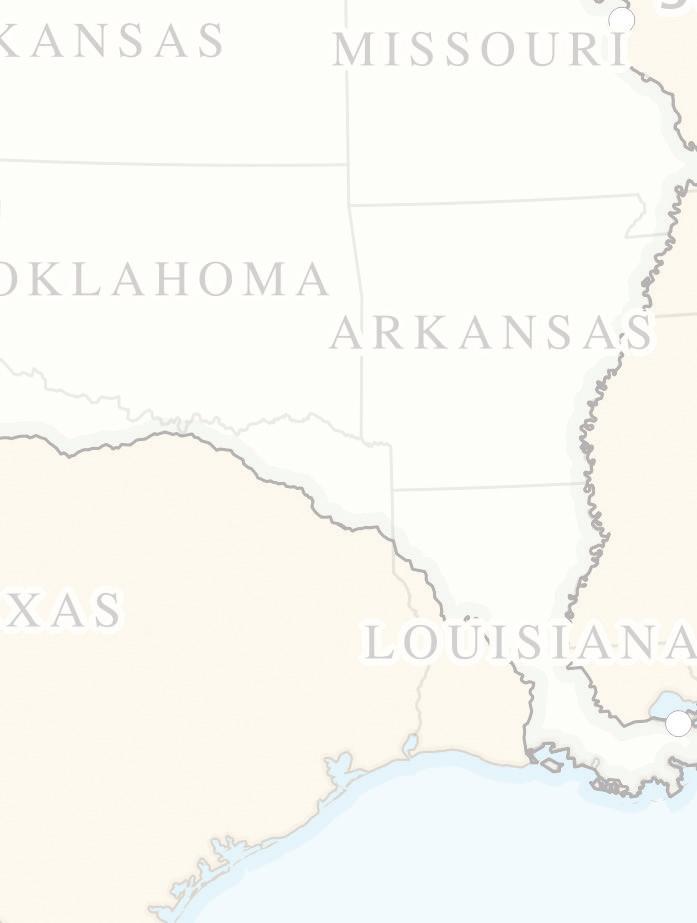




Napoleon reclaimed the spot for France during the 1790s through a secret treaty. The unprecedented success of the slave rebellion in SaintDomingue, however, led not only to the creation of Haiti but also to Napoleon’s abandonment of his dream of a North American empire. He sold France’s claim to the Louisiana territory, including the tiny river settlement known as St. Louis, to U.S. President Thomas Jefferson in 1803.
These events echoed through the worldwide Catholic Church. In Rome in 1815, Louis W. V. DuBourg, a French priest who, coincidentally, had been born in Saint-Domingue, was made Bishop of Louisiana and the Floridas, a diocese created in 1793.

Before being named Bishop, DuBourg had served for three years as an apostolic administrator in New Orleans, where he clashed with both the clergy and the laity. Consequently, he chose to begin his new role in St. Louis, a town of just 2,500.
On January 5, 1818, near the beginning of what would be a fateful year, Bishop DuBourg arrived to an enthusiastic welcome. Among his goals: to build a school for boys.
Bishop Louis William Valentine
Du Bourg arrived in St. Louis in January, 1818. Before that year ended, he had established the school that would ultimately become St. Louis University High. (Courtesy of Jesuit Archives and Research Center, St. Louis, Missouri.)

The defeat of French forces by the revolutionaries in Haiti quashed Napoleon’s dream of establishing a French empire in the Americas. The Louisiana Territory. (background image)
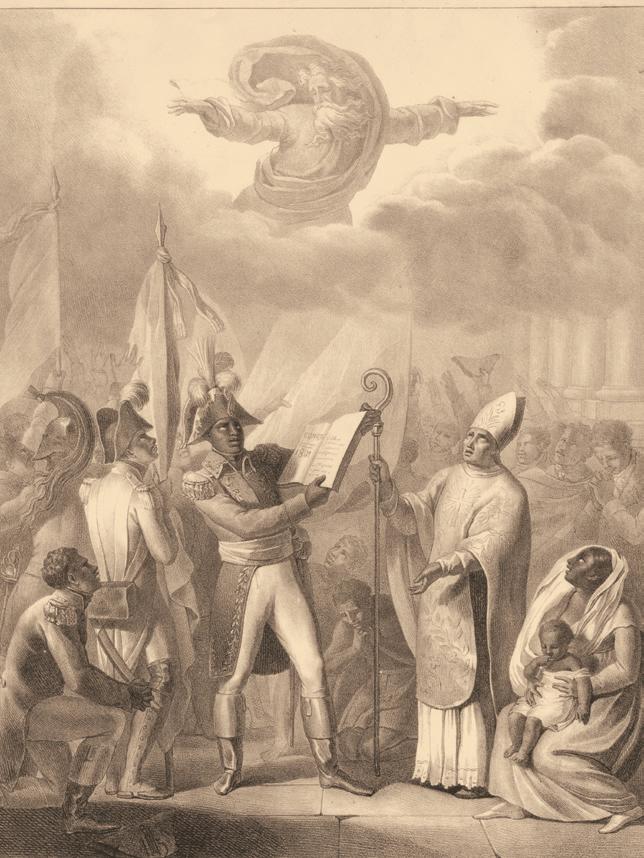
PART ONE 3
SLUH’s longevity is all the more remarkable given the modest, if not adverse, circumstances in which it was born.
In 1818, the United States of America itself was a mere thirty-two years old. In the fall of that year, when the school solicited its first students through an advertisement in the Missouri Gazette, the logwalled cathedral in St. Louis looked “like a poor stable,” according to Bishop DuBourg. The school itself would hold classes in the home of a private citizen, Eugenie Alvarez, whose family roots in the area extended back into the Spanish period.
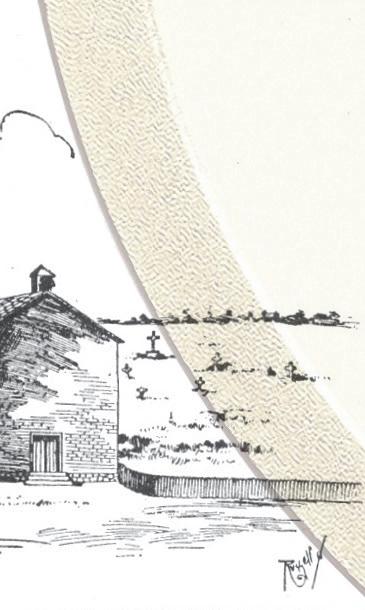

Tuition was set at $12 per quarter, not including books and stationery or bags in which to carry them. The Gazette advertisement hinted at the financial straits of the new St. Louis Academy when it emphasized that its teachers would not “hold themselves answerable” for lost books. The advertisement’s typos—including a misspelling of Alvarez—also suggested a certain haphazard aspect to the new endeavor.
Born in Modest Circumstances 1818
For all its limitations, this school was ahead of its time. It would be another thirty-five years before a public high school opened in St. Louis.
The institution was essentially an academy, or high school, but it would soon claim the more prestigious name St. Louis College because of five or six seminarians who moved next door to pursue their studies. Fr. Felix de Andreis, a Vincentian priest who was vicar general to Bishop DuBourg, directed their studies.
Perhaps the most notable student from these first years was Jean Baptiste Charbonneau, son of Sacagawea and Toussaint Charbonneau, who provided important assistance to the Lewis and Clark Expedition.
Charbonneau, nicknamed “Pomp,” lived in St. Louis with William Clark, who paid for his education at the school. The infant Jean Baptiste Charbonneau is depicted on the dollar coin featuring Sacagawea. In a one-story home on the north side of Market Street, across from the cathedral square, classes began in the little school with a misleadingly grand name. Could the teachers and students of that time have imagined that they were beginning an epic story that would last two hundred years—and more?
After starting out in the home of a private citizen, the new school soon moved into its own building, located next to the city’s new brick cathedral.

TO GOD, WITH GRATITUDE | 200 YEARS OF SLUH 4
Jean Baptiste Charbonneau, pictured as an infant on this dollar coin along with his mother, Sacagawea, attended St. Louis College. The October 21, 1818, notice in the Missouri Gazette announcing the opening of “an Academy for young gentlemen.” More than one hundred years later, that academy would eventually become St. Louis University High School. (Courtesy of Saint Louis University Libraries Digital Collections.)




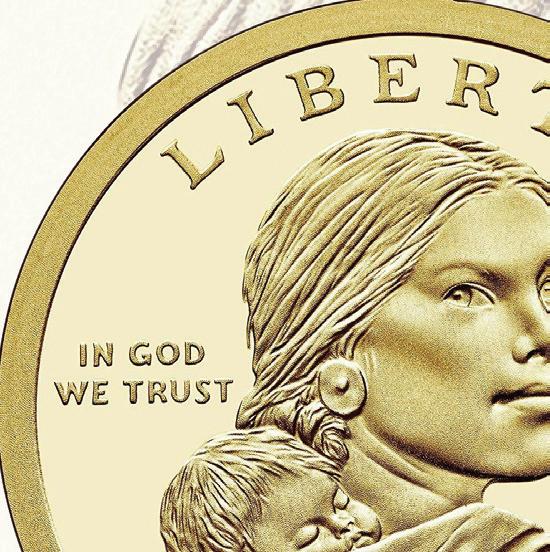

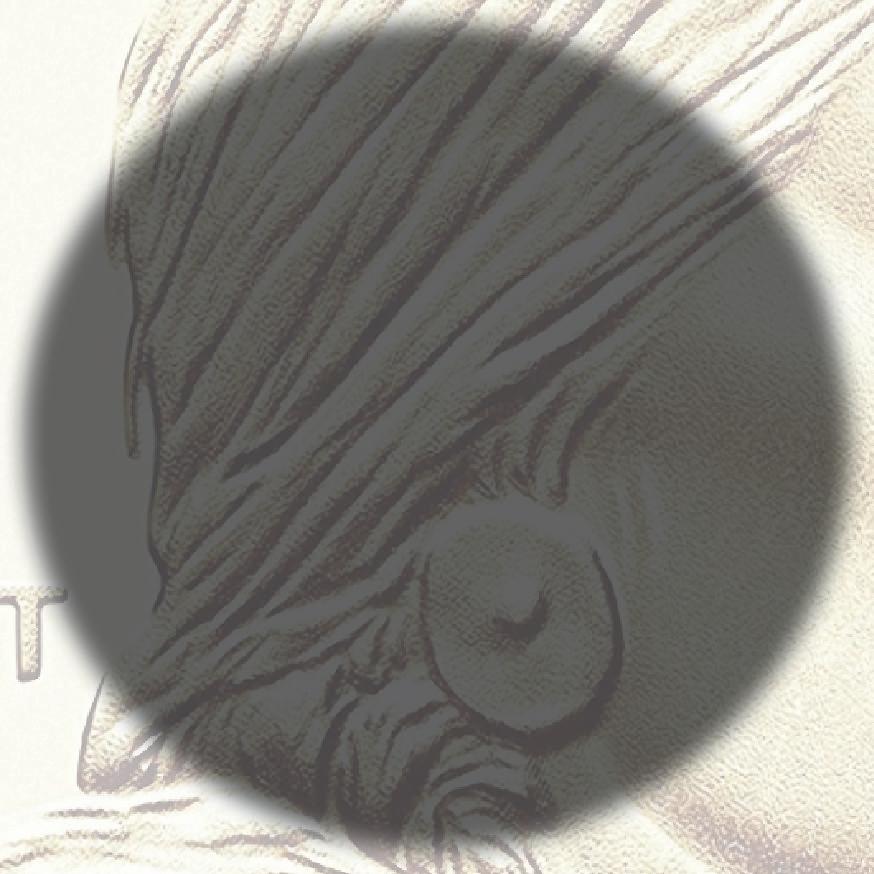




Moving On Up 1819

In fulfillment of Bishop DuBourg’s vision, the new school and the Catholic Church supported each other in the growing river town, and both quickly reached exciting new levels of development.
With professors, both priests and laymen, teaching courses in languages ancient and modern, as well as mathematics, writing, and drawing, the new school outgrew the Alvarez home within a year.
As a new brick building neared completion, one seminarian wrote in eager anticipation of spreading out: “We desire it above all else, because, for the moment, we have not too much space.”

The two-story structure—the first in a long line of expansions over the school’s history—was completed in December 1819. It was located on 2nd Street. Among its most impressive assets was Bishop DuBourg’s personal library. Comprising more than eight thousand volumes, the library was one of the finest collections in the United States.
Within a month of the school building’s completion, Bishop DuBourg preached for the first time in a new brick cathedral located next door.
Bishop DuBourg’s plans seemed to be coming together beautifully—yet the school’s foundation was not as solid as it may have appeared.


PART ONE 5
SOS, S.J.
Despite a strong start, St. Louis College soon faced difficulties that would threaten its very existence, causing Bishop DuBourg to look for help from a kind of spiritual turnaround company, also known as the Society of Jesus.



The struggling economy of the new state of Missouri—which entered the Union in 1821—sapped the ability of students’ families to pay tuition, leading to a 25 percent reduction in tuition. A government program that provided funding for the education of poor boys helped for about eighteen months, but then it, too, fell victim to a budget shortfall. Meanwhile, the seminarians were decamping for a newly finished school near Perryville, threatening the school’s claim to being a college.








In the meantime, DuBourg was pursuing another missionary objective. Writing to a superior in language that reveals the cultural insensitivities of the time, DuBourg asked permission to recruit Jesuits to help with “the conversion of the savages, who are in great numbers in the upper part of my diocese.” This project dovetailed with the United States government’s desires to ease tensions with Native Americans

as settlers gradually pushed them from their lands. DuBourg assured Secretary of War John C. Calhoun that the “unremitting charity” of missionaries such as the Jesuits would “easily subdue the ferocity of their hearts and by degrees assimilate their inclinations to those of their fellow-Christians.” Thus assured, Calhoun approved an annual appropriation for a school that would train Native American boys and provide a foundation for missionary efforts.


Bishop DuBourg successfully negotiated to bring Jesuits from Maryland to St. Louis. As enticement he offered a tract of land in Florissant. This site would later become the Jesuit seminary St. Stanislaus. DuBourg also hoped that some of these Jesuits might bring new life to the struggling St. Louis College. It was an idea that would take a few years to pan out but would eventually succeed in ways that DuBourg could not have foreseen.
As the young school struggled to stay open, Bishop DuBourg looked to bring priests from the Society of Jesus to St. Louis.
TO GOD, WITH GRATITUDE | 200 YEARS OF SLUH 6
1821
Bishop Du Bourg collaborated with Secretary of War John C. Calhoun to bring Jesuits to St. Louis to start a missionary school for Native Americans.
Negotiating with the New Arrivals
The Jesuits made the trek to St. Louis in 1823, but their presence in the area did not bring immediate relief to the floundering St. Louis College.
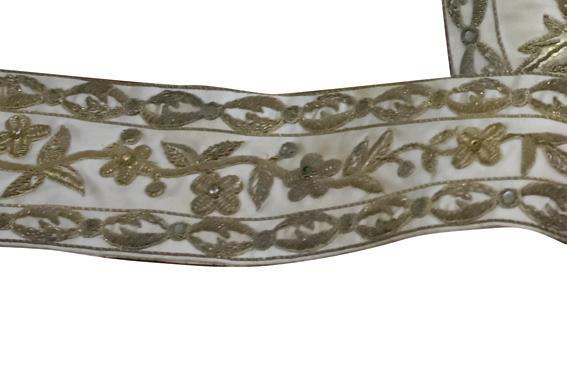
Twelve Jesuits and three enslaved married couples made the journey from White Marsh, Maryland, to St. Louis, Missouri. They traveled by foot, wagon, and flat-boat a distance of approximately 750 miles. Led by Fr. Charles Felix Van Quickenborne, the group included another priest, seven Belgian novices (among them Fr. Peter J. De Smet, S.J.), and three Jesuit brothers. The enslaved couples, who had also worked on the Jesuit plantation in White Marsh, were Tom and Polly (aka Molly) Brown, Moses and Nancy Queen, and Isaac and Succy Queen. (Their last names were verified in 2017 by Kelly Schmidt and other researchers for the Working Group on Slavery, History, Memory, and Reconciliation, a project co-sponsored by the U.S. Central and Southern Province and Saint Louis University.) The group left on April 11 and arrived on May 31.



Though Bishop DuBourg and officials at the college welcomed the Jesuit party with high ceremony, the Jesuits had priorities other than


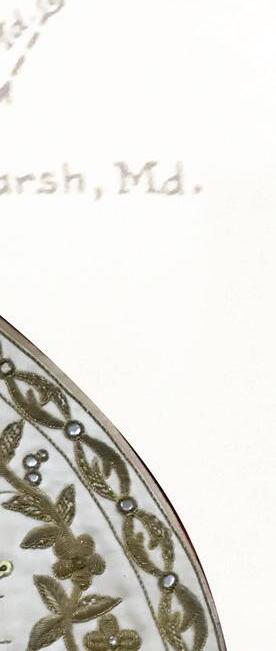
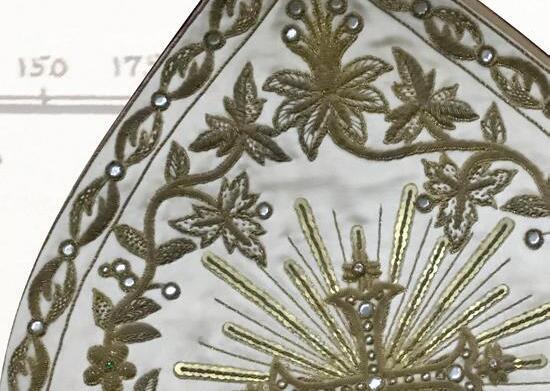

staffing the school. While one of the novices did begin teaching at St. Louis College in the fall, the other Jesuits spent most of their initial energies establishing their own novitiate in Florissant and educating Native American boys.
By















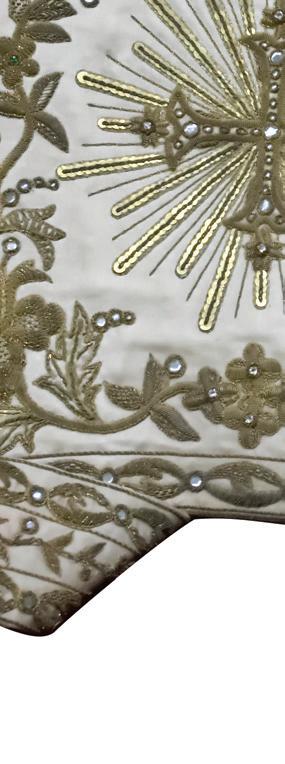





1826 DuBourg had given up on the college, and he recommended that it be closed. The school’s administrator, Fr. Edmund Saulnier, ignored this directive and kept the school going just a little bit longer. It is a wonderful irony that SLUH students and alumni must be forever grateful to this priest for his disobedience. His stalling gave Bishop Joseph Rosati, a Vincentian who in 1827 had been named bishop of the newly created St. Louis Diocese, time to continue negotiating with the Jesuits—and eventually secure their commitment to the school, a commitment that continues to this day.
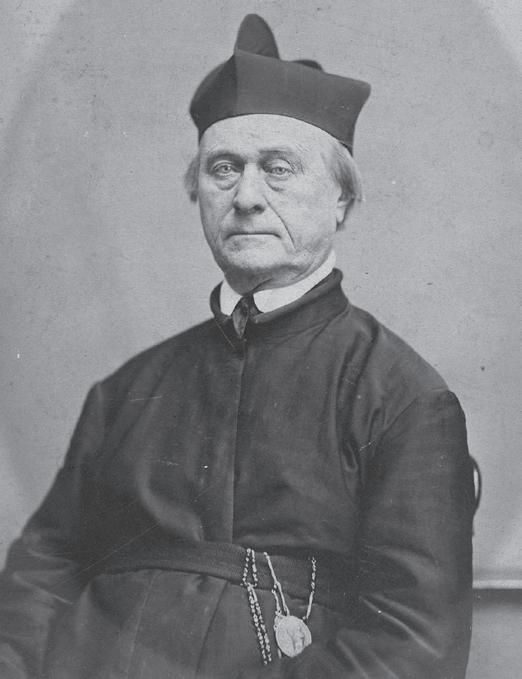
This is the route taken from Maryland to Missouri by the Jesuits who rescued St. Louis College. Drawn by John P. Markoe and included in Gilbert Garraghan’s Jesuits of the Middle United States. (background image)






PART ONE 7 1823
Peter J. De Smet, S.J., was among the Jesuits who traveled from White Marsh, Maryland, to St. Louis, Missouri, in 1823. These Jesuits would later assume responsibility for Saint Louis University. (Courtesy of Jesuit Archives and Research Center, St. Louis, Missouri.)
Joseph Rosati, the first bishop of the St. Louis diocese, secured the Jesuits’ commitment to run St. Louis College.
Getty image.
A Solid Jesuit Foundation
From the standpoint of the school’s 200th anniversary, it is obvious that Bishop Rosati made a good choice in looking to the Society of Jesus to establish a more stable and permanent school in his diocese. In 1828, when the Jesuits first agreed to take the reins of the new St. Louis College, Rosati must have felt encouraged by their strong start.
For one thing, location: leaving behind the congested riverfront, the Jesuits chose as the location for their new school “a secluded position in the western suburb of the city, airy and salubrious,” as an early sketch put it. This was clearly a forward-looking institution. Of course, from our perspective today, the site of the school hardly seems to be in the hinterlands. It was at 9th Street and Washington Avenue.
As construction got under way, the Jesuits cemented their ties with some of the most respected and influential families in St. Louis, further strengthening the school’s position. Even before the new building was completed, the Jesuits began educating students at their seminary in Florissant. Those students had some of the most famous last names in St. Louis: Cabanne, Forsyth, Mullanphy, and Chouteau. At a dinner at Major Thomas Biddle’s house, Fr. Van Quickenborne secured donations from these students’ fathers as well as other prominent St. Louisans.
The new St. Louis College opened on November 2, 1829. The impressive brick building was three stories high, with dormer windows and a high stone foundation. Within weeks of the first day of classes, thirty boarders had enrolled, along with 120 day students. After a tenuous first decade, the school had at last found a sustainable niche in the social and educational landscape of the city— and even the nation. Just three years later, the school’s Jesuit administration and board of trustees applied for and received a university charter, making Saint Louis University the first university west of the Mississippi.
1829
Now under Jesuit leadership, the new St. Louis College building opened in November 1829. It was located at 9th and Washington, at that time considered the suburbs of the city.
TO GOD, WITH GRATITUDE | 200 YEARS OF SLUH 8 | 200 YEARS OF SLUH
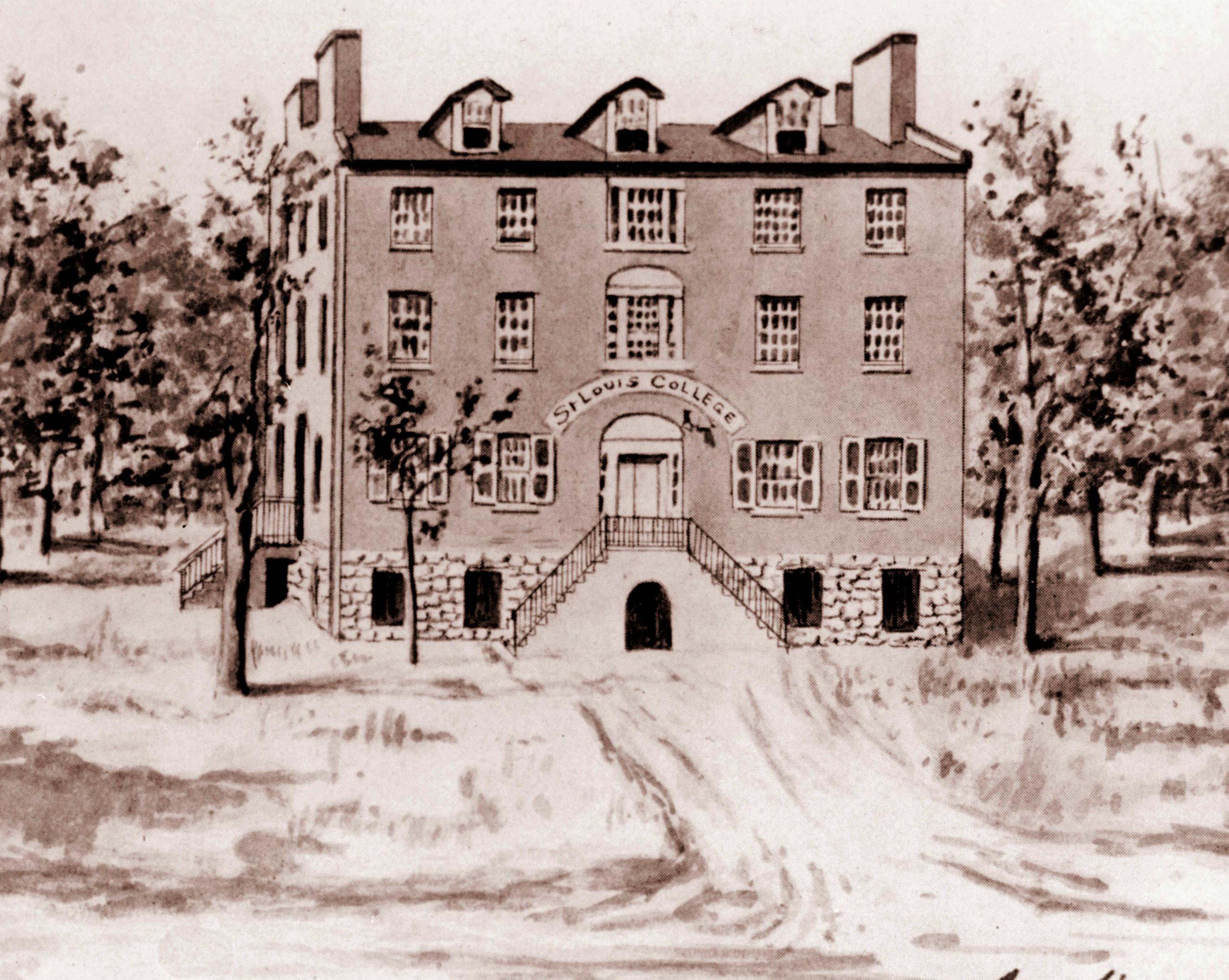
As St. Louis College began to come back to life, another Jesuit educational institution breathed its last. St. Regis Seminary, the school established in Florissant for Native American boys, never achieved its aim of converting a significant number of students to Christianity or preparing them to assist in the evangelization of other tribes in the region.
The students who did attend were drawn from the Iowa, Osage, Sauk, and Shawnee tribes, among others, some of whose chiefs negotiated their participation with Superintendent of Indian Affairs William Clark. Fr. Van Quickenborne recruited students as well. Taken from their homes and instructed in an unfamiliar religious tradition by priests who did not look like them, the boys often viewed their condition as a kind of enslavement.

1831
An 1830 sketch of St. Regis Seminary in Florissant, where the Jesuits taught Native American boys. (Courtesy of Jesuit Archives and Research Center, St. Louis, Missouri.)
The Passing of St. Regis
Given that four hours of field work were required each day, perhaps that interpretation is understandable. Fr. Van Quickenborne, however, believed that the school’s rigors were building discipline and character. He wrote to his superior, “The boys are entirely changed. They observe order like a well-regulated college boy or like a novice.. . They all wept when the hoe was put into their hands for the first time.” The boys did not share Fr. Van Quickenborne’s enthusiasm. Some of them tried to run away. One prefect at the school noted that he often slept during the day so he could watch over his charges at night.
The Jesuits partnered with Mother Rose Philippine Duchesne (later canonized) to establish a school for Native American girls as well. This school, located in nearby St. Ferdinand, was operated by the Ladies of the Sacred Heart. Yet both institutions struggled with funding. The


girls school operated without government assistance of any kind, and St. Regis often struggled to provide adequate clothing for its students. This experiment in educational evangelization was unsuccessful by nearly any measure. The last Native American student left St. Regis on June 30, 1831, and the school closed its doors forever. Open for only seven years, St. Regis was a relatively early example of schools for Native Americans that attempted to inculcate Euro-American values and practices. St. Regis’s shortcomings, sadly, would be matched and surpassed by government boarding schools for Native Americans in later decades, many of which abused students and attempted to stamp out their cultural heritage.
Mother Rose Philippine Duchesne founded a school for Native American girls, a counterpart to the Jesuit’s St. Regis Seminary, which taught Native American boys. (Courtesy of the Missouri Historical Society, St. Louis.)

After leading the famous Corps of Discovery expedition with Meriwether Lewis, William Clark settled in St. Louis and became Superintendent of Indian Affairs. In that role, he helped bring students to the St. Regis Seminary, the Jesuits’ school for Native American boys. (Courtesy of the Missouri Historical Society, St. Louis.)

PART ONE 11
Slavery


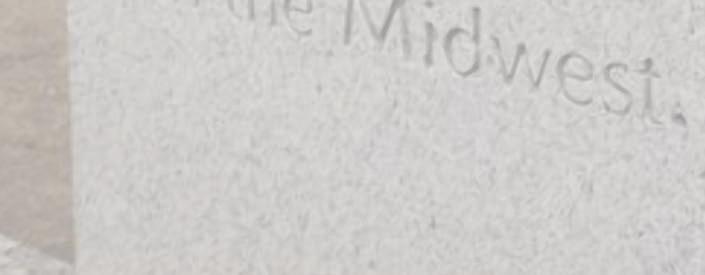

Thanks to the vision and industriousness of the Jesuits, Saint Louis University was now deeply rooted in the community. Tragically, however, that rootedness also involved Jesuit participation in one of the community’s, and America’s, most troubling sins: slavery. As Jesuit historians have acknowledged, most of the Jesuit houses in Missouri before the Civil War used slave labor.

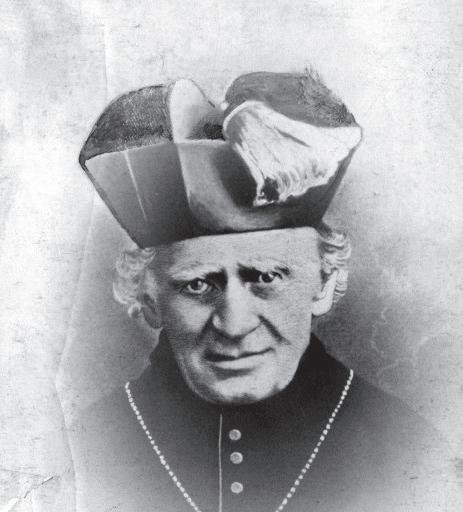
Indeed, slaves were part of the Jesuits’ original agreement in coming to St. Louis. The concordat entered into by Bishop DuBourg and Fr. Charles Neale, Jesuit Superior for the United States, called for Fr. Neale to send to St. Louis, as part of the Jesuit party, “at least four or five negroes to be employed in preparing and providing the additional buildings that may be found necessary, and in cultivating the land.” DuBourg himself owned slaves and had provided enslaved workers to the Vincentians who taught at the seminary.

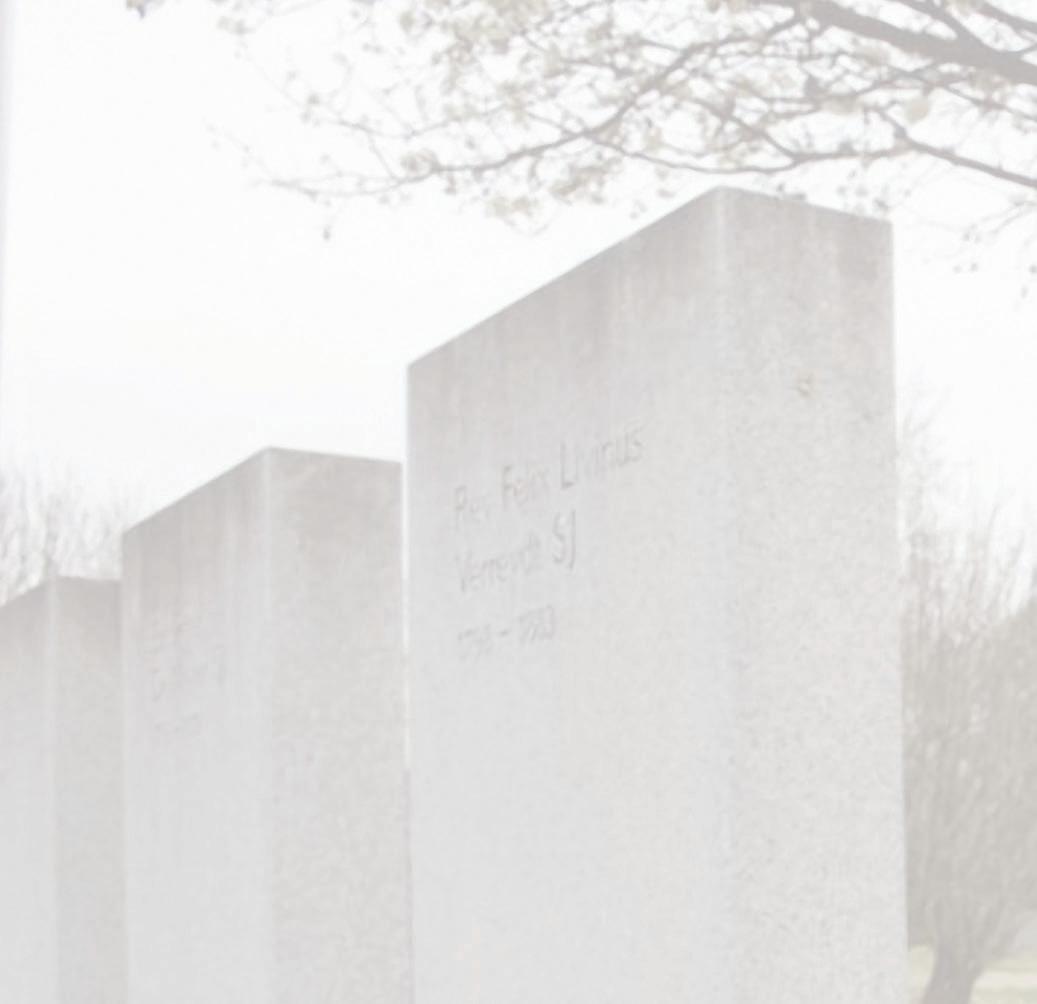


One historical document in particular gives a glimpse into the sad realities of slavery at Saint Louis University. Thomas Brown wrote in 1833 to Jesuit provincial William McSherry, S.J., to request permission to buy his freedom and that of his wife for $100. Brown said that he had been “very poorly treated by Rev. Father [Peter J.] Verheagen [sic], President of the University of St. Louis who is my present master.”
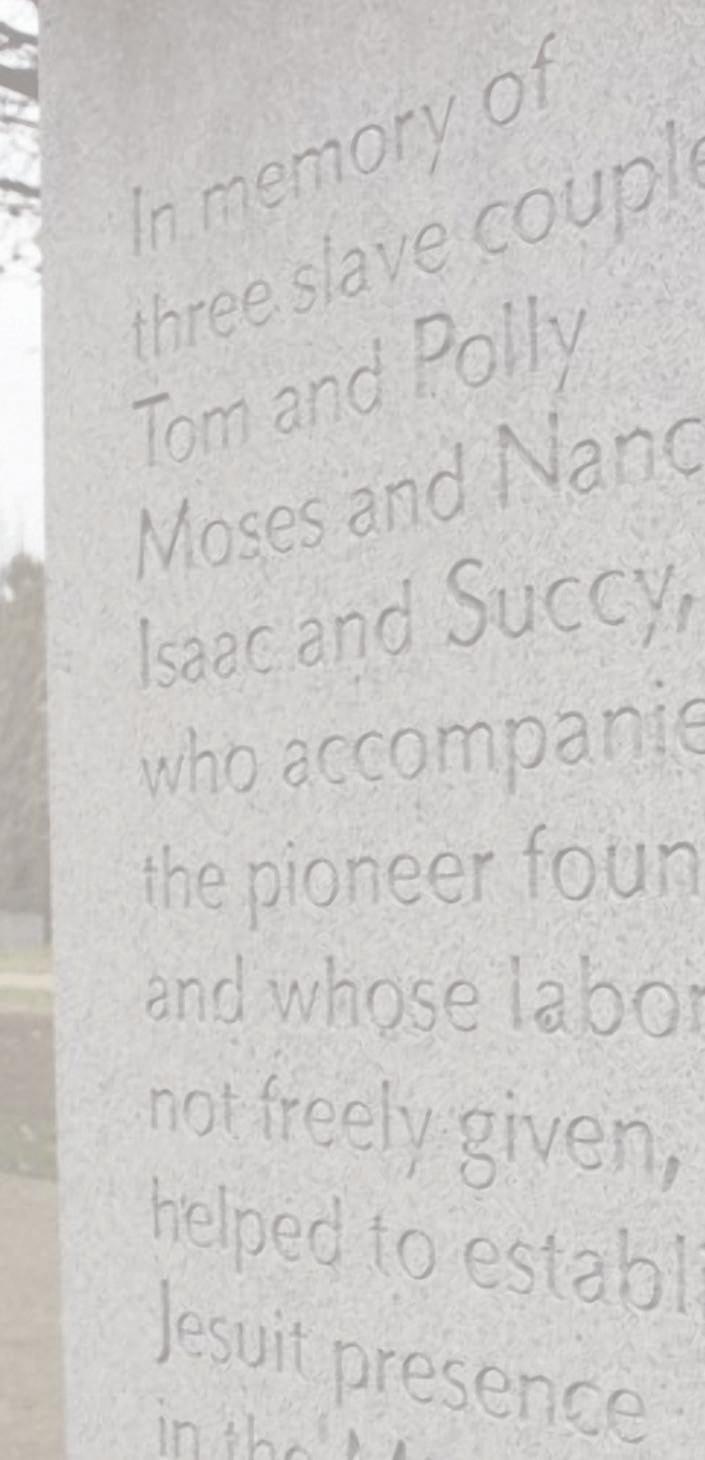
1833
Archbishop Peter Richard Kenrick, who led the St. Louis Archdiocese for nearly fifty years.
Thomas Brown wrote to the Jesuit provincial to complain about Peter J. Verhaegen, S.J., president of the university. Brown asked to be allowed to purchase his freedom. (Courtesy of the Jesuit Archives and Research Center, St. Louis, Missouri.)
TO GOD, WITH GRATITUDE | 200 YEARS OF SLUH 12
In Calvary Cemetery, a memorial to the six people who originally traveled to St. Louis with their Jesuit enslavers. Photo by Galen Bacharier, Prep News. (background image)
“We live at present in a rotten log house so old and decayed that at every blast of wind we are afraid of our lives,” Brown wrote. “Father Verhaegen wants me and my wife to live in the loft of one of the outhouses where there is no fireplace.. . Cold will kill both me and my wife here.”
Brown continued, “I have been a faithful servant in the Society going on thirty-eight years, and my wife Molly has been born and raised in the Society, she is now about fifty-three years of age.” The $100 he offered for their freedom, he noted, “is as much as I can raise and as much as our old bones are worth.” Brown concluded by promising McSherry, “I
will pray for you while I live.”
History does not record the fate of Thomas Brown, but the Jesuits enslaved Molly Brown until her death.
Pope Gregory XVI condemned the slave trade in an 1839 Apostolic Letter, but American prelates like Philadelphia’s Archbishop Francis Patrick Kenrick defended slaveholding. Although the original kidnapping and enslavement was wrong, Kenrick argued, “it does not seem unjust to hold the descendants of these slaves in slavery, namely, a condition in which they were born and which they are not able to leave.” His brother Peter Richard Kenrick, who served as archbishop in St. Louis for nearly fifty years (1847–95), owned a small household of slaves.
Researchers for the Working Group on Slavery, History, Memory, and Reconciliation have counted more than 150 slaves who were owned, borrowed, or rented by the province, which at that time ranged from Missouri to Kentucky to Louisiana to Kansas.
The stories of the people enslaved by the Jesuits of Saint Louis University strike a somber, discordant note in SLUH’s anniversary celebration. Details like these remind us of a history with which our school, our Church, and our nation have not yet fully reckoned.

PART ONE 13
Peter Quinn (alternatively Hawkins), enslaved by the Jesuits, was born at the St. Stanislaus Seminary in Florissant. (Courtesy of the Jesuit Archives and Research Center, St. Louis, Missouri.)
Tuition 1836
The fledgling Jesuit school in a growing river town in the middle of North America quickly became the topic of conversation in Rome. The issue was not slavery but one that continues to be a source of anxiety and debate in Jesuit schools today: tuition.
St. Ignatius of Loyola, the founder of the Society of Jesus, had forbidden the order from demanding or accepting payment for any of its ministries. Accordingly, in Europe and elsewhere, the Jesuits had traditionally run schools that were fully endowed by princes or other wealthy individuals.
Fr. Van Quickenborne supported this principle but found it difficult to practice given the realities of St. Louis in the early nineteenth century. Boarding students paid fees because they lived at the school, but day students did not pay for the education they received at St. Louis College. Fr. Van Quickenborne, however, had taken to charging for firewood and desk rental as a way of defraying costs. Some criticized this as a surreptitious form of tuition. On the other hand, some parents insisted on paying, seeming not to value education that was provided for free.
The conflict produced debate in Rome. Fr. Verhaegen sent a letter to the Jesuit General, and Bishop Rosati got involved as well. As a result, Pope Gregory XVI granted a dispensation allowing the Jesuits to charge tuition.

Since that time, Jesuit schools generally have relied on tuition to maintain their schools, though the endowed institution remains the ideal. The modernday SLUH is committed to need-blind admission so that any qualified young man may attend regardless of his family’s ability to pay the tuition.

Many Jesuit schools today have programs and staff positions dedicated to diversity, equity, and inclusion, demonstrating their commitment to being institutions that welcome students from a variety of backgrounds. Although such efforts may seem a contemporary innovation, the issues they address go back to the earliest days of Jesuit education.
At Saint Louis University, for instance, the student body in the school’s first decade was surprisingly diverse. Broadly speaking, the students could be divided into three groups. Each came from a different region of the world, and each spoke a different language. Some students hailed from the St. Louis area, naturally, and spoke English. Thanks to recruitment efforts in the bayou areas of Louisiana, some French-speaking students came from that region. The university also had many Spanish-speaking Mexican students at that time.
Tensions between the United States and Mexico were reflected at the school, beginning with the battle for the independence of Texas (1836) and culminating in the MexicanAmerican War (1846–48).
A remarkable 1836 letter from Fr. John Elet, S.J., the president of the school, to a Chicago bishop narrates one moment in which these tensions became overt:
A very singular occurrence took place at the University on Friday last. A prodigious quantity of snow had fallen on the day previous. Our Missourians
TO GOD, WITH GRATITUDE | 200 YEARS OF SLUH 14
Pope Gregory XVI granted the Jesuits in St. Louis a dispensation that allowed them to charge tuition at Saint Louis University.
The Challenges of Diversity












































and acclimated Louisianians to the number of about twenty were inspired, no doubt by the black spirit, to roll in the snow all those who had arrived in Missouri from the South since last winter. Some good-natured boys as O’Connell, the two Commageres and some others after some debate, cheerfully submitted to this strange ceremony; and seemed to enjoy the joke like the rest. But our Spaniards were not so easily wrought into compliance. They made serious objections, but our Missourians insisted on their submission, alledging [sic] that it was a custom of long standing and as such demanded respect and obedience on their part. But nought would do. The Spaniards remained obstinate; they declared that they would never consent to take the baptism of snow. In vain was it urged that it was a kind of naturalisation act by which they would become true Missourians; they persisted in their refusal. Our baptists finding that the means which they considered fair took no effect, had
Fr. John Elet, S.J., president of Saint Louis University, wrote a letter to a fellow clergyman describing a cross-cultural student interaction that turned violent. (Courtesy of Jesuit Archives and Research Center, St. Louis, Missouri.)
recourse to violence. Peter Corlis boldly stepped up and attacked Argornedo. Upon which the latter drew his knife and slightly wounded his aggressor in the arm. One of our ceremonious fellows interfered and endeavored to wrest the knife from Argornedo. Then Lopez and Medina with drawn knives came to the assistance of Argornedo, but were stopped by the prefect, who by this time had recovered from a kind of illusion which had made him believe all the time that it was mere fun. At night I gave both parties a severe lecture in presence of all the students, required mutual pardon and ordered all dirk-knives to be given up within twenty-four hours under pain of dismission.




In bringing together students from diverse backgrounds, the Jesuits had undertaken a complicated educational project. That project continues to be relevant in a St. Louis region that is increasingly diverse. In 1836 as today, students bring their own perspectives and assumptions with them, and conflicts may be inevitable. One challenge, as the prefect in this instance found out, is to recognize the difference between “mere fun” and those times when the literal or metaphorical dirk knives come out. Most broadly, the challenge of diversity is to create a school community that, though made of many different parts, remains one body in Christ.
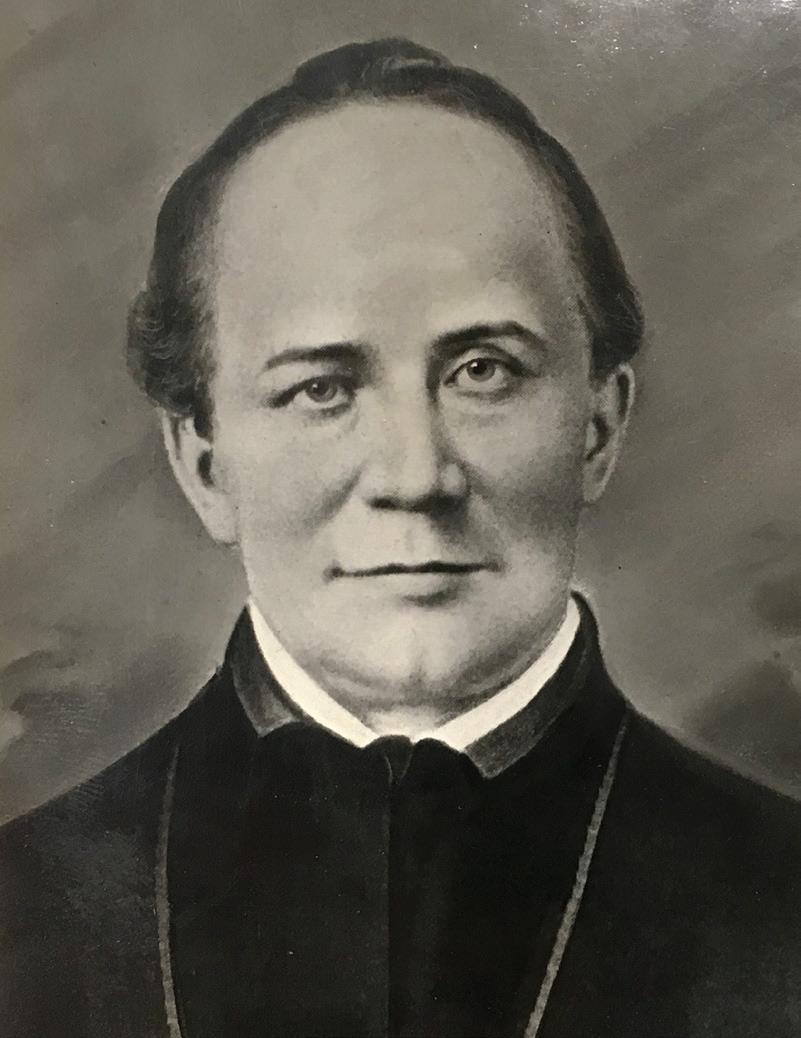
Getty image.
Riots
The tensions between people from different cultures that simmered within Saint Louis University came to a boiling point in the city at large, threatening the school directly.
Anti-Catholic feeling began to rise in St. Louis in the 1820s and 1830s. Conspiracy theorists believed that the Jesuits were behind sinister papal plots. Resentment of Catholic immigrants raised tensions further. These tensions ignited in 1844 with wild rumors sparked by the sight of human remains outside the dissecting laboratory at Saint Louis University School of Medicine. Whipped into a frenzy, a mob attacked the medical school and destroyed all of its equipment. In the wake of this attack, the medical school, fearing that it would again be targeted, voted to separate and function under its own charter.
Large waves of immigrants from Germany and Ireland came to St. Louis and other American cities in subsequent years. Many of the German immigrants had been staunchly anti-Catholic in their native land, associating Catholicism with their Austrian rulers. The poverty-stricken Irish, fleeing British oppression and famine, faced the wrath of nativist demagoguery. The nativists were called the Know-Nothings.
A riot rooted in nativist sentiments occurred in 1854, beginning when several Irish-Americans were refused the vote. In an ensuing disagreement, one of the disenfranchised Irishmen stabbed a boy. Mobs attacked Irish homes and threatened Catholic churches.
The mob twice approached the university, where President Fr. John Baptist Druyts, S.J., calmly walked back and forth reading the psalms. His calam demeanor prevailed. This time the university emerged from the violence unscathed.

1844 & 1854
TO GOD, WITH GRATITUDE | 200 YEARS OF SLUH 16
This illustration depicts an 1844 nativist riot in Philadelphia. A similar riot occurred in St. Louis that same year and led to an attack on the Saint Louis University medical school. (Courtesy of the Library of Congress.)

Fire and Contagion 1849
The middle of the nineteenth century was a treacherous time for Saint Louis University. In addition to the riots of 1844 and 1854, two other calamities struck St. Louis in 1849: a disastrous fire and a cholera epidemic.
On May 17, some steamboats on the riverfront caught fire. Spreading into the city itself, the blaze damaged several blocks and destroyed about five hundred houses. The university was spared, however, as the fire never reached its location in the “suburbs” at 9th and Washington.



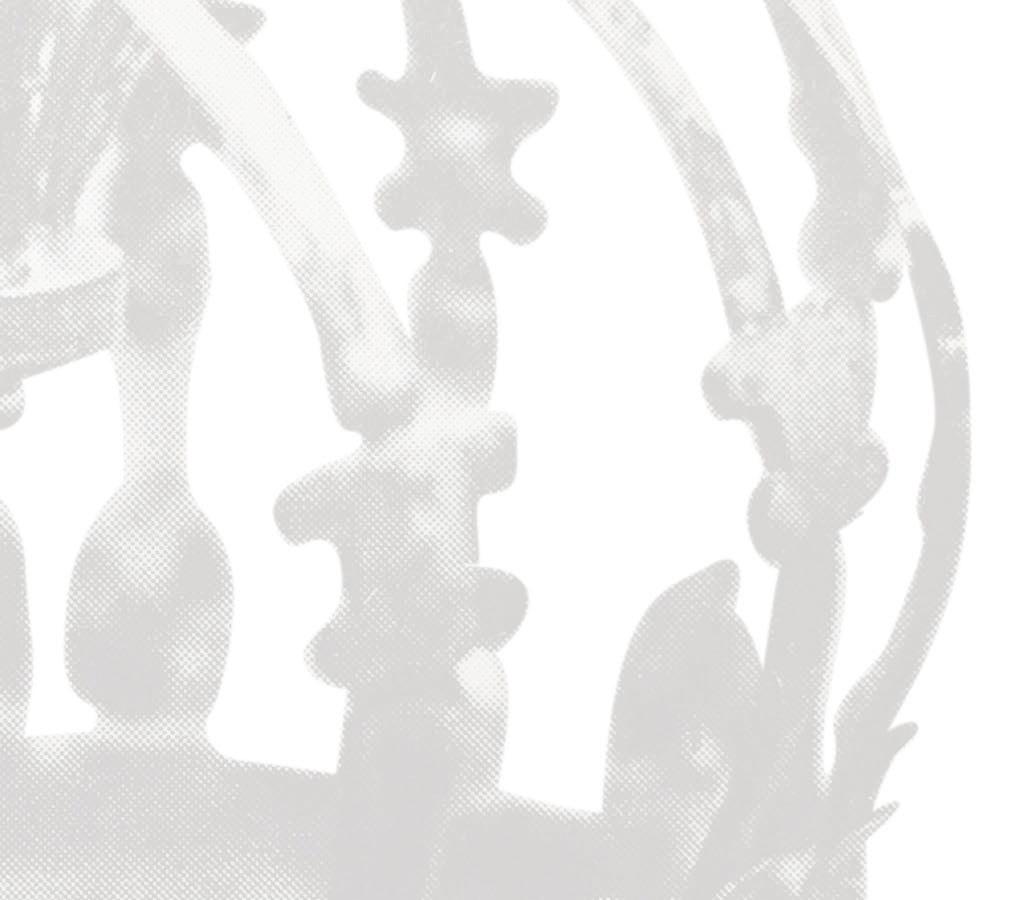
At the same time, the fast-growing but crowded and unsanitary city was also reeling under a cholera epidemic, which ultimately reduced its population by at least 6 percent. Seven of the Jesuits worked with the dead and dying around the clock for months. The student body, praying that the disease would spare the university, vowed on June 28 to place a silver crown on a statue of the Blessed Virgin Mary. Their prayer was answered: no students or faculty members died. On October 8, the statue received its promised crown. (The crown is still held in a museum at SLU.)
In a letter to a friend, Fr. Peter J. De Smet, S.J., wrote, “Truly the scourge of God is over this people.” He later reflected, “The Lord, in His infinite goodness, has spared our University.”



A little more than a decade later, however, an even greater scourge—a bloody civil war—would make its mark on the university.
no one

TO GOD, WITH GRATITUDE | 200 YEARS OF SLUH 18
A fire in St. Louis in 1849 started on the riverfront and eventually destroyed about five hundred homes. (Courtesy of Missouri Historical Society, St. Louis, Missouri.)
Saint Louis University students placed this crown on a statue of the Blessed Virgin Mary in gratitude that
associated with the school died in the cholera outbreak.
Photo by Emsie Belt, University News. (background image)
Chouteau’s Pond, a downtown pond suspected to be the source of the cholera outbreak of 1849. (Courtesy of Missouri Historical Society, St. Louis, Missouri.)


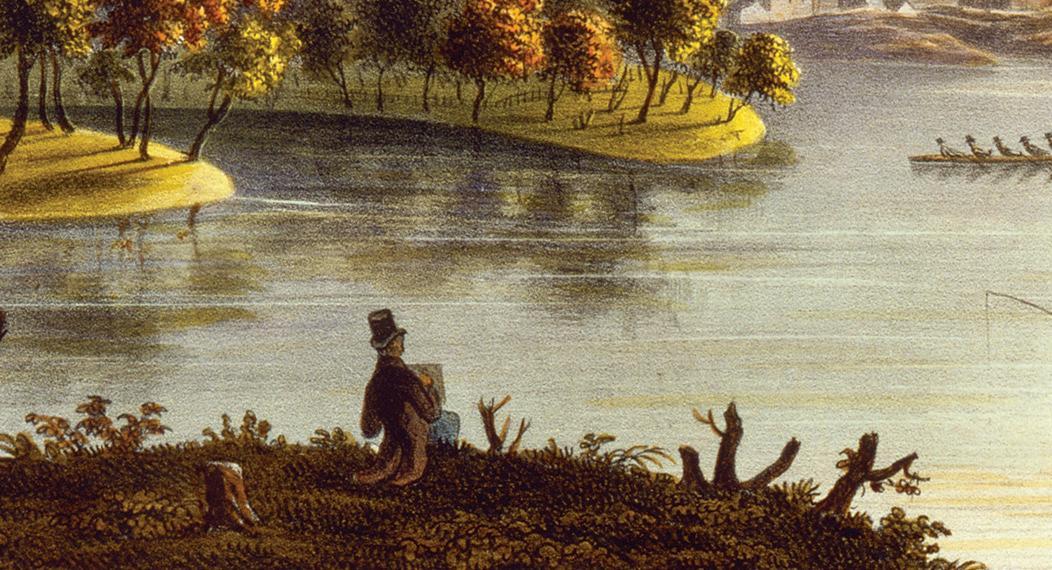


Given how divided both the state of Missouri and the city of St. Louis were by the Civil War, it is not surprising that division also characterized Saint Louis University’s experience of the war years. Yet steady Jesuit leadership kept the institution intact while the nation tore itself apart.






Fr. De Smet supported the Union and displayed in his letters a shrewd understanding of the root cause of the war: the desire of Southern states to preserve and expand slavery. Yet at home he mostly held his tongue. Many alumni and friends of the college were active or sympathetic Confederates—as were some of the Jesuits themselves. Keeping a private college operating during the Civil War was incredibly difficult and delicate, yet Fr. Thomas O’Neil, S.J., managed to accomplish this task. Fr. O’Neil walked a fine line between secessionist and Unionist members of the school community. He extricated from the draft some of the university’s students as well as some of its Jesuit faculty. During his tenure, enrollment remained steady.

Emblematic of the university’s uncomfortable position in the Civil War is the man for whom the university’s main campus is named: General Daniel Morgan Frost. Long a friend of the school, Frost was a leading state senator and was linked politically with the state’s secessionist governor, Claiborne Jackson. In the place where SLU’s campus on Grand is today, Frost was commanding a training encampment of the Missouri State Guard shortly after the fall of Fort Sumter. The camp, named for Governor Jackson, was seen as a breeding ground for secessionist treachery by a pro-Union general at the nearby St. Louis Arsenal. The Unionists, led by Captain Nathaniel Lyon, marched on Camp Jackson and placed the soldiers there under arrest.

1861
TO GOD, WITH GRATITUDE | 200 YEARS OF SLUH 20
Nathaniel Lyon led the Union forces that marched on Camp Jackson, located near the current campus of Saint Louis University on North Grand. (Courtesy of the Missouri Historical Society, St. Louis.)
A Divided University


While the arrested soldiers were being marched to the arsenal, prosecession observers shouted taunts and threw objects. Gunfire rang out, hitting one of the Union soldiers. In the return fire, dozens of civilians were shot. Among the bystanders was William Tecumseh Sherman, not yet a general, who had recently moved to St. Louis to head a streetcar company.
Frost was made a prisoner of war. After his release, he eventually joined the Confederate Army but later became disenchanted with it and went to Canada. In 1865 he took an oath of loyalty to the Union and was pardoned by President Andrew Johnson. His daughter Harriet Frost Fordyce would go on to become a notable benefactor of the university, and it was at her request that the main campus on Grand
was named for her father in 1962. In recent years the university has minimized the use of this name.
Fordyce also successfully arranged for the relocation of a statue of Nathaniel Lyon, the commander whose forces arrested her father. At her request, the statue was moved from the corner of Grand and West Pine to a park named for Lyon near the Anheuser-Busch brewery.
Though perhaps unknown to most SLUH alumni, the Frost name is a fossil in the history of the school, a subtle reminder of the delicate, awkward position the school occupied during the bloodiest war in our nation’s history.
During the Civil War Peter De Smet, S.J., supported the Union in letters but in public walked a more neutral line. (Courtesy of the Jesuit Archives and Research Center, St. Louis, Missouri.)
President Thomas O’Neil, S.J., led the university through the tumultuous years of the Civil War. (Courtesy of Jesuit Archives and Research Center, St. Louis, Missouri.)


21
PART ONE
A Strong High School and a Grand Location
In the decades following the Civil War, the high school, or academic, division of Saint Louis University began to overshadow the collegiate division, which languished, relatively speaking, until a new facility and location revived the institution.



As other institutions of higher learning opened in the region, the student population of the first university west of the Mississippi came increasingly from the region’s Catholic population. The number of boarding students remained at wartime levels. Yet the high school division’s appeal to the local community remained strong—as it would for the next hundred years and beyond, nurturing SLUH’s cherished tradition of excellence.
In 1874, the trustees of the university discussed a plan to breathe new life into the collegiate division by moving its campus to Grand Avenue, which was on the verge of becoming a commercial and cultural center. Negotiations with Archbishop Kenrick delayed the move until 1888, however.
Saint Louis University held its final commencement from its downtown location in the fall of that year. President Fr. Henry Moeller, S.J., bid farewell to the old halls, saying to the graduates, “And now gently and reverently let us lower the lid of the coffin of old Saint Louis University. Let us give ourselves a short time for the burial, and then let us gather around the new University, bright and young like a bride on the morning of her nuptials, to wish her blessings and a new life.”
The new brick building on Grand Avenue, four stories high, looked toward the city center. Shaped like a reversed L , it included a Jesuit residence,
chapel, library, and laboratory. Attracted by this brand-new facility as well as by a scholarship offer for the best boy in each St. Louis parish, students signed up in record numbers—doubling the previous year’s enrollment. Blessings and a new life, indeed.
Soon, too, the successful high school that had been developing within the sixyear academic program of the university would at last begin to emerge into the world as a distinct institution of its own.

TO GOD, WITH GRATITUDE | 200 YEARS OF SLUH 22
Faculty members from the academic division of the university from the 1882–83 school year. (Courtesy of the Jesuit Archives and Research Center, St. Louis, Missouri.)








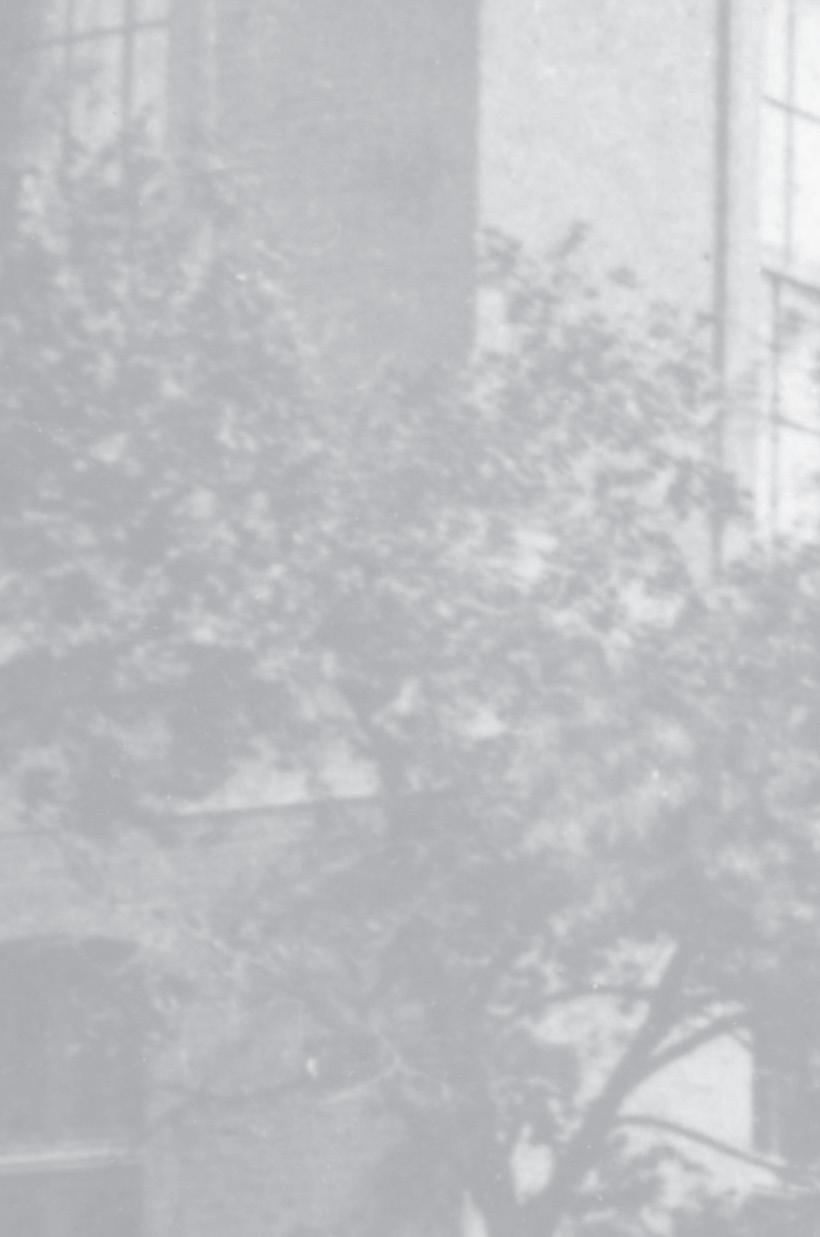












23 PART ONE
1888
The campus on Grand, pictured here in the 1940s, first opened in 1888. (Courtesy of the Missouri Historical Society, St. Louis.)
A view of the downtown campus at 9th and Washington. In 1888 the university moved to its present location on North Grand. (background image)
At the new Grand campus in 1901, President Fr. William Banks Rogers, S.J., drew the line clearly between the school’s high school and collegiate departments, creating a modern American secondary school that in two decades would evolve into SLUH.






As a result of Fr. Rogers’s restructuring, the high school now had its own administration, and it would soon publish its own descriptive brochure apart from the university catalog. Students had to complete eighth grade before they could enter. The school adopted the terminology of “first, second, third, and fourth year high.”
In 1908, the high school actually became three separate schools: St. Louis Academy, located in the main SLU building on Grand; Loyola Hall, in the Eads mansion just west of Lafayette Square; and Gonzaga Hall, on North 11th Street. The creation of three high schools out of one was overambitious, however: Gonzaga closed in less than a decade, and the other two consolidated in 1924 into St. Louis University High School, which opened in the fall of that year.
President William Banks Rogers, S.J., restructured the university, creating a more distinct secondary school, which would eventually become St. Louis U. High. (Courtesy of



TO GOD, WITH GRATITUDE | 200 YEARS OF SLUH 24
Proto-SLUH
Loyola Academy students pictured in front of the Eads mansion, the site of their school.
1901
Jesuit Archives and Research Center, St. Louis, Missouri.)
When the Bills Went Marching In
Before it broke away from the university with which it had grown up and to which it had been tethered for so long, the high school acquired its mascot.

Beginning as the main character in a series of illustrated Canadian children’s stories, the Billiken became a nationwide craze in the first decade of the twentieth century. The image of this “god of things as they ought to be” was used for a wide variety of trinkets and household items. The Kansas City illustrator who originally drew the Billiken, Florence Pretz, received a patent for the design on October 6, 1908. The connection with SLUH arose, it seems, from a SLU law student named John Bender, who began coaching the university’s football squad in 1910. Bender resembled the popular figure, leading to a new moniker for the team: “Bender’s Billikens.” Though Bender eventually moved on, the name stuck.
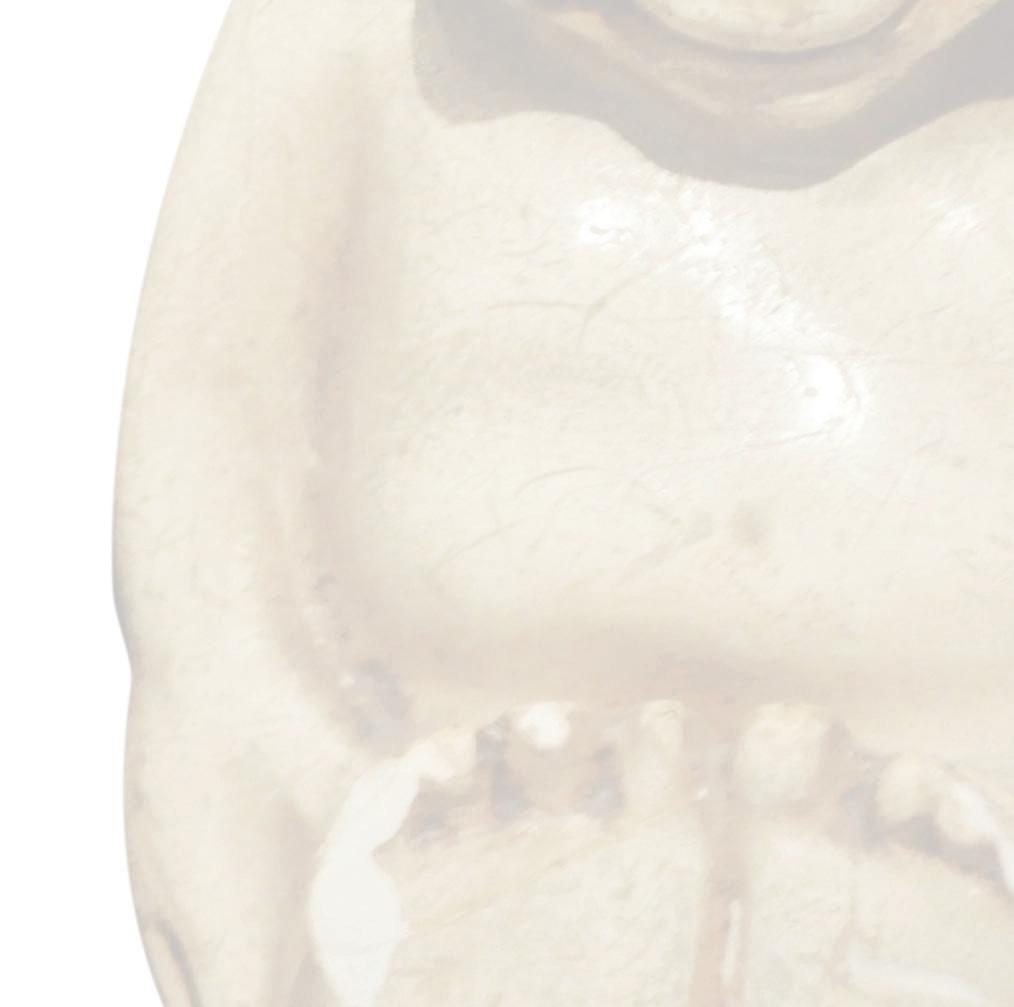
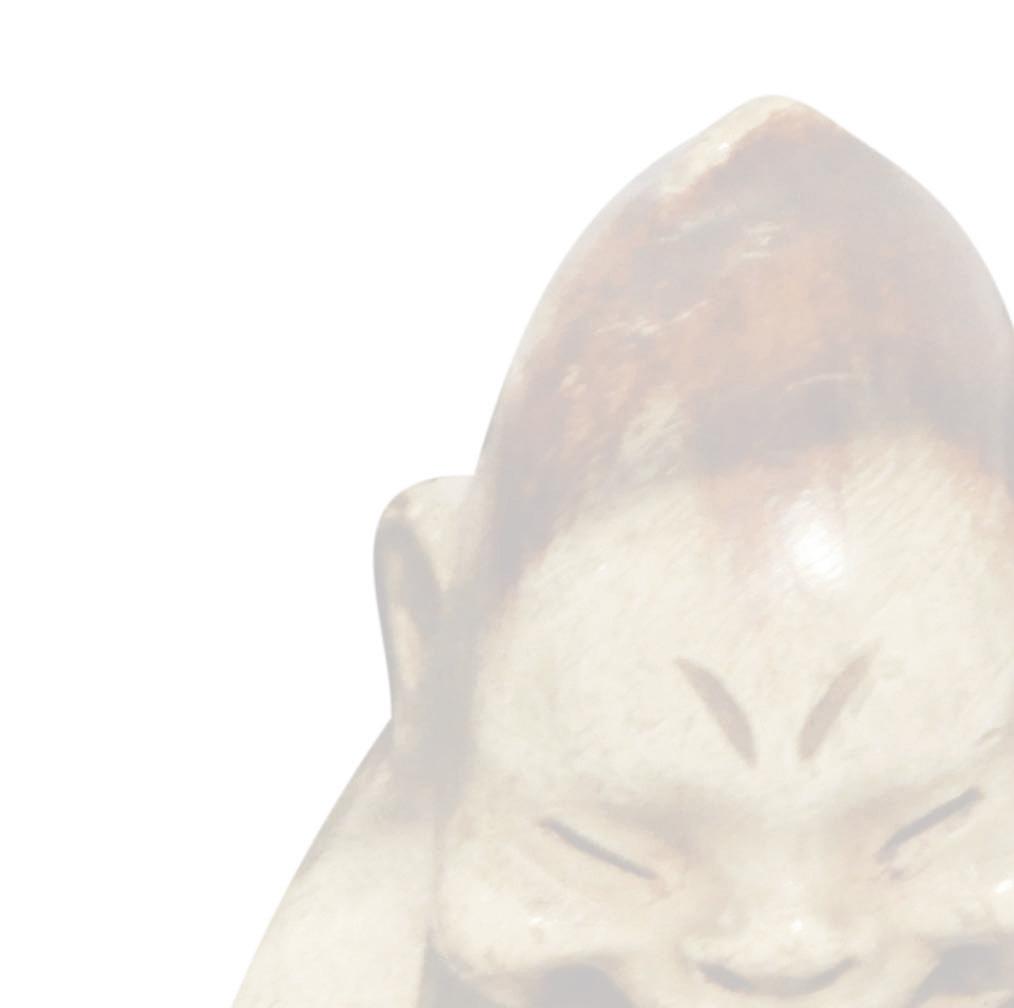
Students in the high schools associated with SLU, soon to become a separate institution in its own right, were naturally considered Junior Billikens, as they still are today. The Jr. Bills began competing in interscholastic athletic competition as such during the 1916–17 school year, with teams in football and basketball. The football team failed to win any of its games. The basketball team was 5–7. Nevertheless, players had taken the field, beginning a tradition of sportsmanship that recently celebrated its hundredth anniversary.

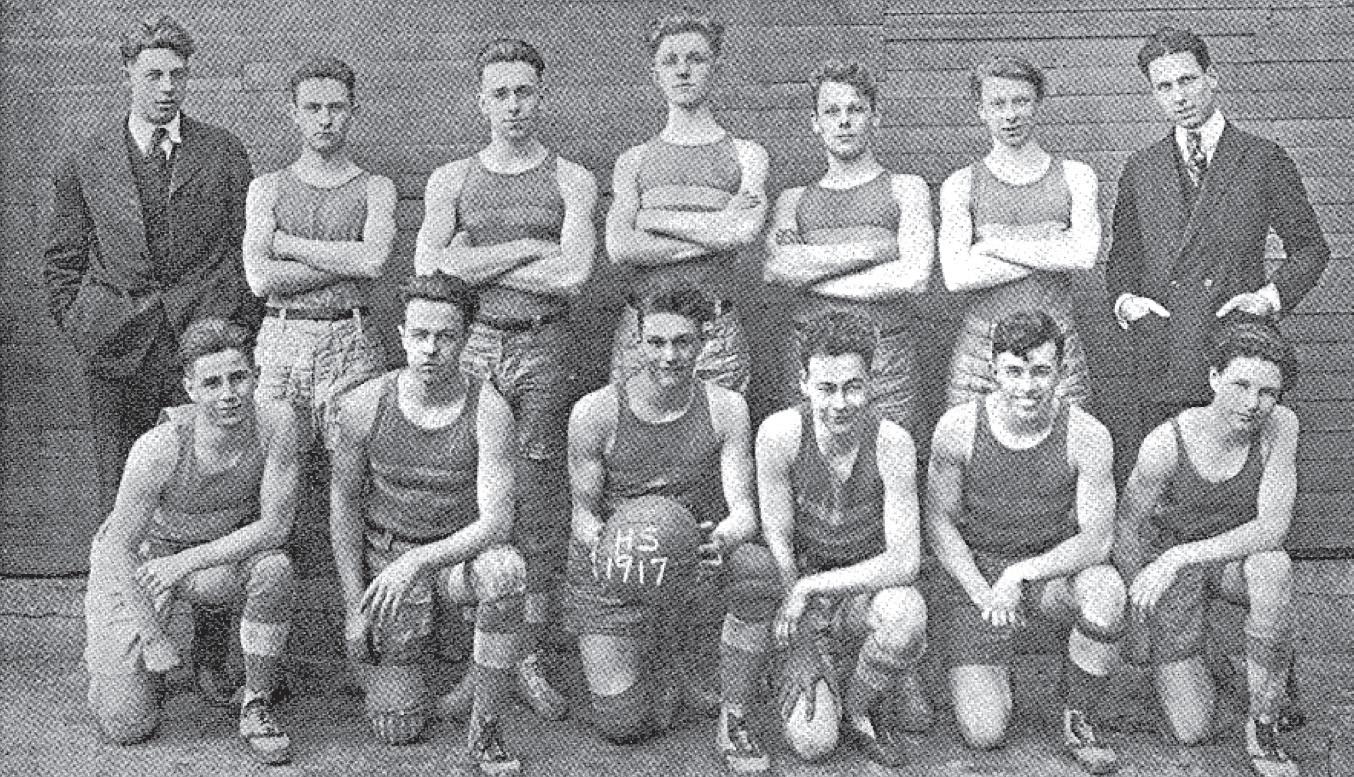
1916

Interscholastic athletic competition dates from the 1916–1917 school year when the first football and basketball teams began play. The football team failed to win any of its games, and the basketball team was 5–7.




PART ONE 25
The Billiken image was used for various trinkets and household items during a nationwide craze in the first decade of the twentieth century. (background image)
Part Two
Just three years after SLUH moved to Oakland Avenue, a tornado swept through the campus. Yet the school survived this calamity, thrived in its new location, and soon became completely independent of the university.
A series of Jesuit teachers and administrators, many of them uniquely suited to working with high school students and passionate about the endeavor, lived and worked in the school and built its traditions. As the century progressed and the number of Jesuits declined, new generations of lay teachers—many of them alumni—astepped forward to devote their lives and talents to mentoring students in the classroom, on the athletic fi elds, and in a wide variety of other contexts.


TO GOD, WITH GRATITUDE | 200 YEARS OF SLUH 26





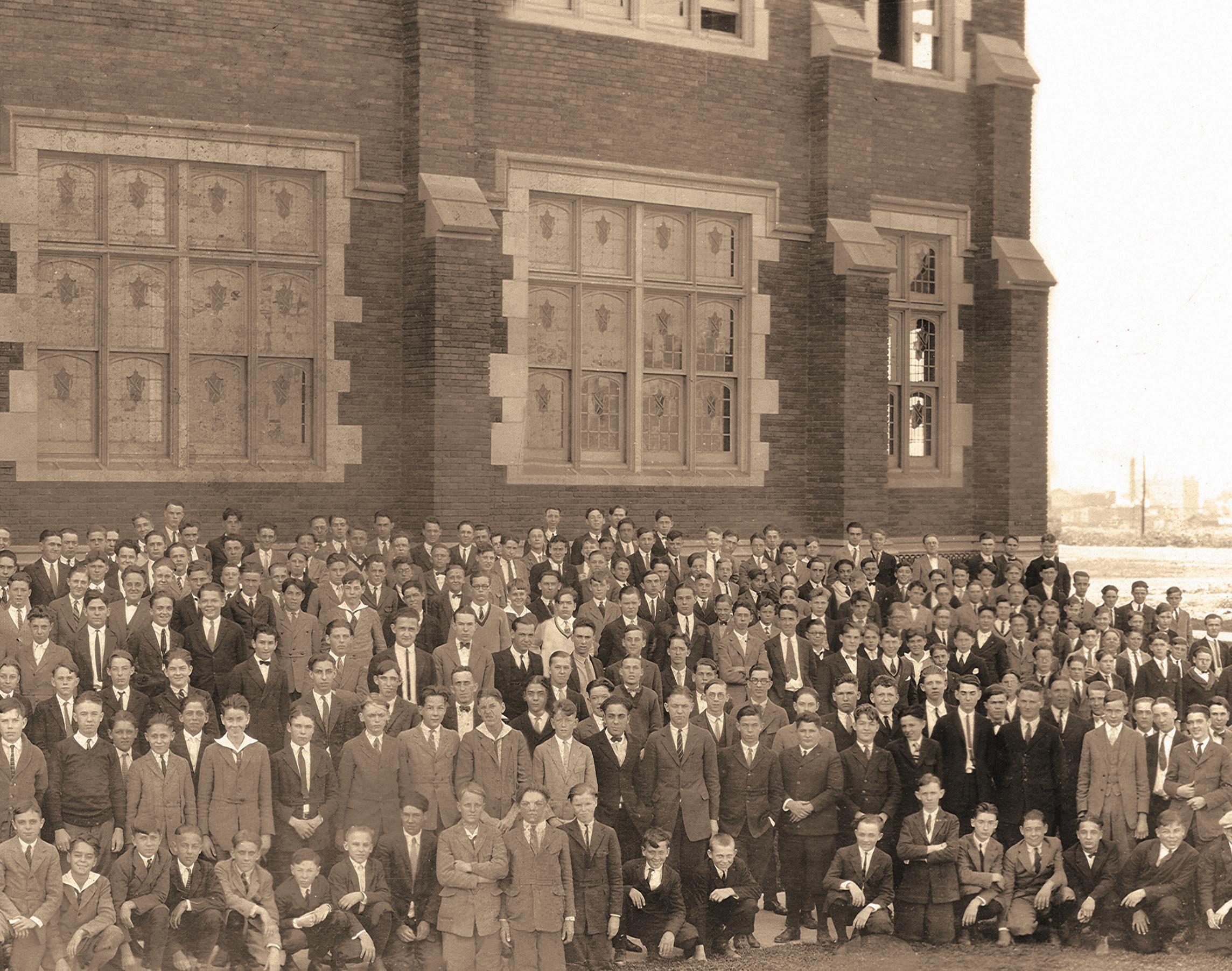
With gratitude for the educational and spiritual formation they received at SLUH in its second century, countless alumni would go on to contribute not only to their alma mater but also to their regional and world communities—as Jesuits and other religious, as political and business leaders, as scholars, writers, and artists, adding to the richness of the school’s history and giving greater glory to God.


The world around SLUH changed. Wars called upon the sacrifi ces of both students and teachers. The struggle for civil rights and gender equality led to greater diversity among the student body and the faculty alike. As waves of suburbanization changed the landscape of the St. Louis region, with the help of its benefactors SLUH remained a landmark institution in the city and expanded its campus. At the end of SLUH’s second century, alumni look back in gratitude for what the school has meant to them—and look ahead to what the school will become in its third century.


PART TWO 29
Anna Backer’s Generous Vision Becomes Reality 1924









Though SLUH’s Oakland campus has grown and evolved over its nearly hundred-year history, it stands as a touchstone for generations of students who have studied in its classrooms, played on its fields, and built lifelong friendships within its walls. Every living SLUH alumnus walked these same hallways.
The campus might not exist at all, however, were it not for two individuals: a priest and a widow—or, a fundraiser and a benefactor.





The priest was the Rev. Michael J. O’Connor, S.J., pastor of St. Francis Xavier (College) Church. The widow was Anna F. Backer, whose husband, George, an 1869 graduate of Saint Louis University, had died in 1919 and left a sizable estate. George Backer had been a successful miller of wheat and had valuable mining investments as well. His will earmarked part of his estate for the Educational Institute of the Missouri Province Jesuits, to be directed according to the wishes of the will’s executor (his wife, Anna).
In 1920, Fr. O’Connor gave a fiery speech on behalf of a SLU fundraising campaign. It was time, he said, to build a new high school facility to relieve congestion at the university’s Grand Avenue campus.


TO GOD, WITH GRATITUDE | 200 YEARS OF SLUH 30
Anna Backer funded the memorial to her late husband.
The
construction of SLUH as a
After the speech, Backer, a parishioner at the College Church, approached Fr. O’Connor. She offered to fund the project in its entirety, using the money her husband had bequeathed to the Jesuits. Anna Backer originally pledged $300,000— $4.3 million in today’s dollars—for the construction of a new school building, but eventually the gift totaled $400,000.

In later accounts, Backer explained her motivations: “I planned the gift many years before my husband’s




After the Jesuits made the finishing touches to the new school building, it opened for classes in mid-September of 1924.

Benefactor Anna Backer remained anonymous until the beginning of construction on the school building. At the ceremony, her identity was revealed as she sat among students who would later benefit from her generosity.

PART TWO 31
death.. . I wanted to give the young men a school where they would be inspired with the desire to enter the priesthood.”






(This intention of Backer’s gift did indeed bear fruit, as SLUH has been a top feeder school to the archdiocesan seminary; approximately 350 alumni have become ordained clergy, the vast majority as Jesuits.) Backer framed her philanthropy as God’s work, writing: “It has been my happy privilege as an instrument in the hands of Almighty God to aid





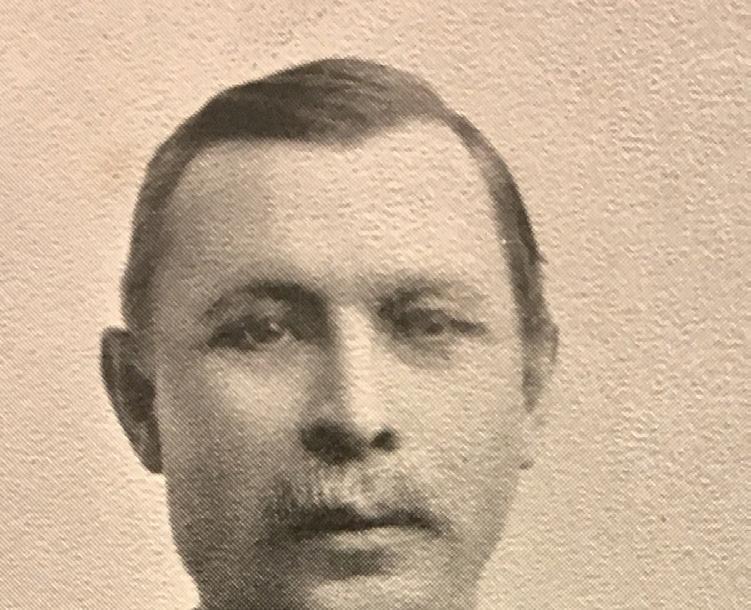 An 1869 graduate of Saint Louis University, George Backer made his fortune as a miller of wheat and investor in mining. He died in 1919.
An 1869 graduate of Saint Louis University, George Backer made his fortune as a miller of wheat and investor in mining. He died in 1919.
32
TO GOD, WITH GRATITUDE | 200 YEARS OF SLUH
substantially in the establishment of the St. Louis University High School. This I gladly did in memory of George H. Backer, my devoted deceased husband.”
In April 1923, a dedication ceremony presided over by Archbishop John Glennon marked the beginning of construction of the high school building on Oakland Avenue. Some 3,500 people attended the event, which lasted approximately an hour and featured the laying of the cornerstone as well as the public revelation of Backer as the source of what was at that point the largest gift ever received by SLU and, for that matter, by any Catholic institution within the Archdiocese of St. Louis.
When Anna Backer’s anonymity was finally lifted, the crowd looked for her on the dais in vain. She was humbly sitting in the crowd among the students.


With the opening of the new building, the two high schools of the university—St. Louis Academy and Loyola Hall—were consolidated into one, known at last as St. Louis University High School.


In its eventual form the school building was somewhat less ambitious than the architects’ original plans. Gone was the third story originally planned for the central beam of the I-shaped edifice, as were a long sloping roof and copper towers. When the Jesuits moved into their new home in June 1924, they found it in a “half-finished, chaotic condition,” according to a province newsletter from that year.


Nevertheless, after “a chopping and scraping, a boring and nailing,” and “a transformation of middle-aged priests and spry scholastics into men of the laboring class,” the Jesuits had the school ready to open for the first time in mid-September 1924.


Touching down at Manchester and Kingshighway around one o’clock in the afternoon of September 29, 1927, a tornado threatened to bring death and destruction to the young Backer Memorial.
Tornado 1927

The storm shattered nearly all of SLUH’s south- and westfacing windows and caused the collapse of the gymnasium, library, and chapel roofs. A handball court flew more than two hundred feet before smashing into a wall of the school. Concrete slabs fell on the main altar in the chapel, breaking irreplaceable statuary and cut stone. A junior class was buried in rubble when all four walls of their classroom fell down. Miraculously, though seventy-eight St. Louisans died as a result of the tornado, no one at SLUH was killed or even badly hurt.
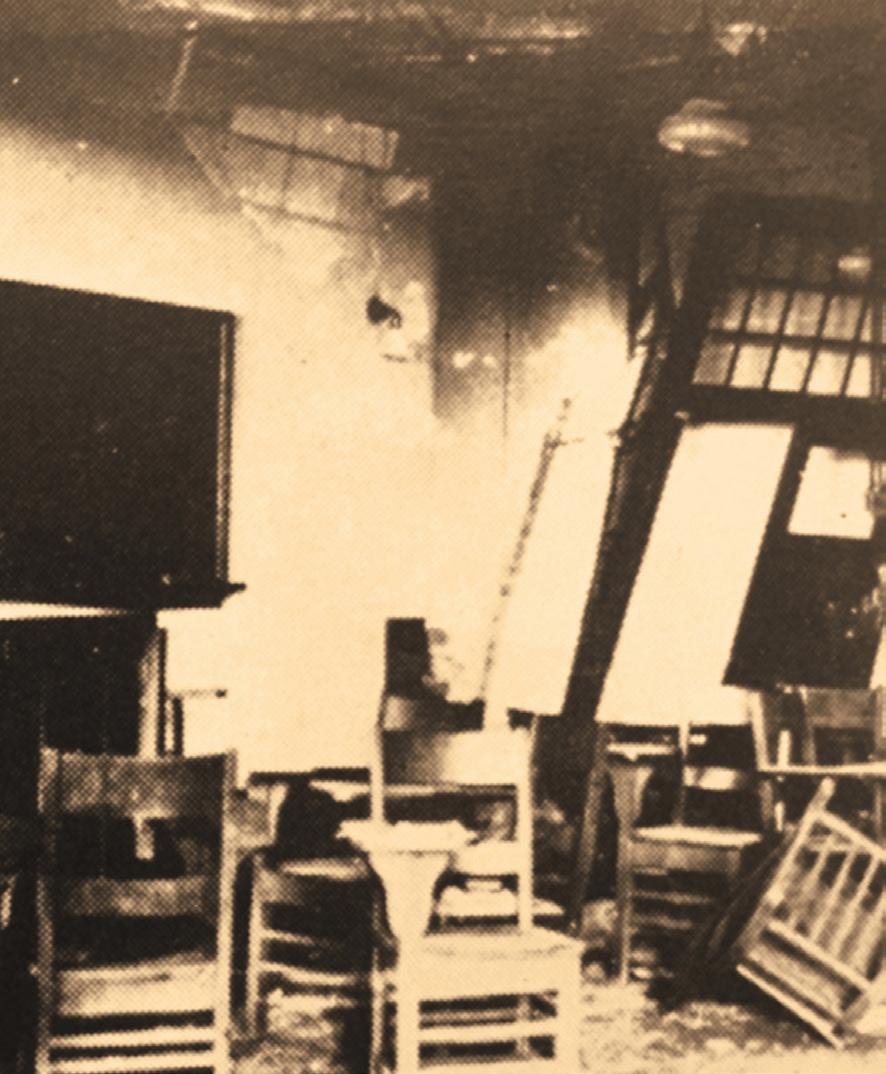
Despite the storm’s wrath, repair work proceeded so quickly that by October 12, school was back in session. The estimated $150,000 worth of damage was largely covered by insurance. An item in the school newspaper from that month reflected ruefully on the speedy return to normalcy: “Despite tornadoes, cyclones, new street car tracks, and a wrecked school, we still have the old homework with us.”
Despite major damage to classrooms, no one at SLUH was seriously hurt. Students returned to school after about a month.
The




PART TWO 35
1927 tornado, which touched down at Manchester and Kingshighway, caused significant damage to the Backer Memorial, including the destruction of irreplaceable statuary and cut stone in the chapel.
1927 Jesuit Legacy

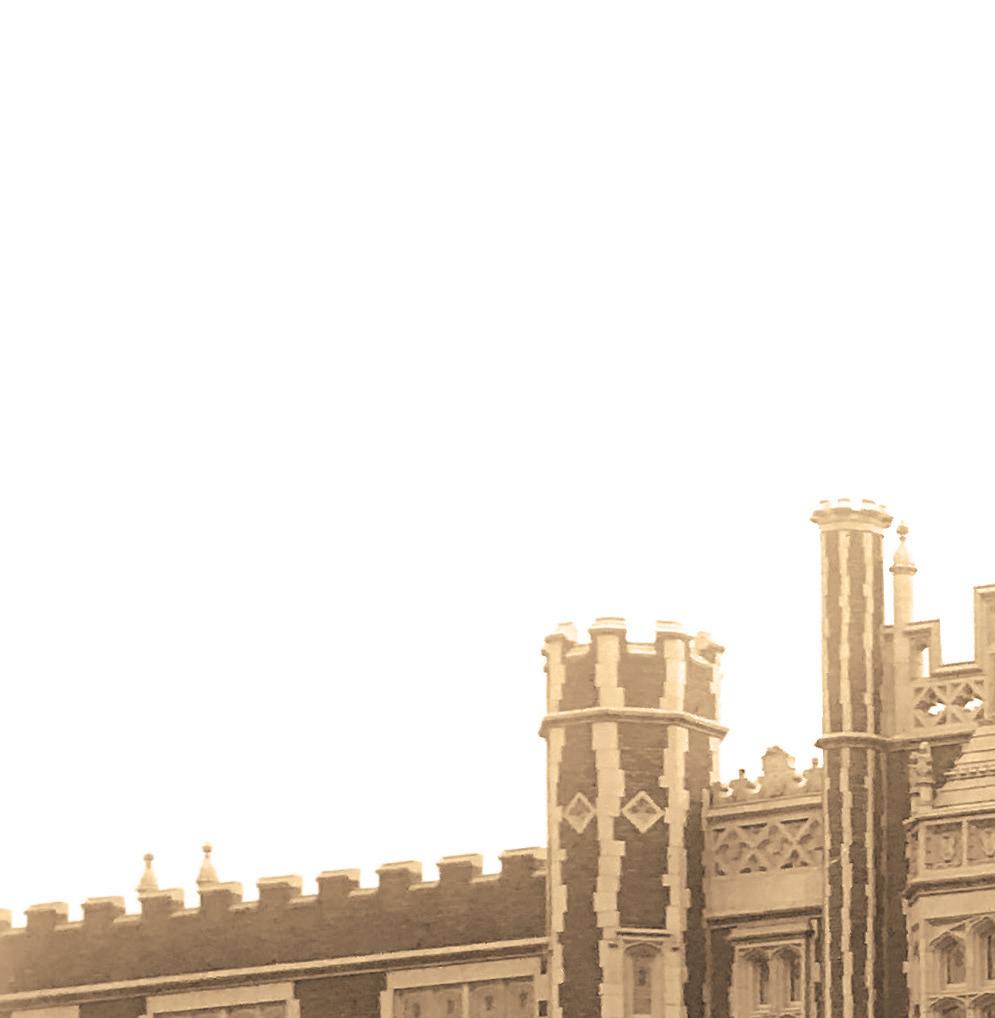
Fr. Francis G. Benoit, S.J.
Fr. Francis G. Benoit, S.J., was in his first month of a long career at SLUH on the day that the tornado hit. As the skies turned an ominous green, Fr. Benoit led the boys from his fifth-period math class to the school’s north lobby.
Years later, Fr. Benoit recalled that the date of the tornado was also the date of his entrance into the Society of Jesus. “Wasn’t it rather appropriate that in my first year at Backer we have a roaring good time on my anniversary?” he quipped.
Born in Holland in 1879, Fr. Benoit was among the earliest Jesuits to serve at the Backer Memorial. Working at SLUH from 1927 to 1959, he was the first in a long line of iconic Jesuits who epitomized the school’s commitment to service and academic excellence. Fr. Benoit taught mathematics until 1948. After that, he served students as a tutor, counselor, and confessor. In 1956, alumni gathered at a breakfast to honor Fr. Benoit’s Diamond Jubilee, presenting him with $100 and a supply of cigars as a token of their respect and gratitude.
Fr. Benoit died in his sleep on the morning of November 24, 1959, while still on active duty at SLUH. Two days later, hundreds of students and alumni attended his funeral in the school’s chapel, mourning his death but thankful for the blessings he had given to the SLUH community for more than thirty years.
After SLUH legally separated from the university and became an institution in its own right, Anna Backer’s memorial to her husband shone even more brightly.
TO GOD, WITH GRATITUDE | 200 YEARS OF SLUH 36
1930
SLUH Separates from SLU
Many Jesuit high schools in the Midwest at this time remained legally bound to the universities of which they were part. Anna Backer, however, with Fr. O’Connor’s encouragement, advocated for SLUH’s legal and financial independence from the university. Not only would such a move give the Jesuits at the high school greater freedom and flexibility, but it would also cause



Anna Backer’s memorial to her husband to shine more brightly by standing alone.
Though the president of the university, Fr. C. H. Cloud, S.J., argued against this change, calling it “very unwise” and citing the “annoying details” that the process would entail, on October 7, 1930, the board of trustees approved the separation while permitting the high school to continue to share the university’s name.

The entire SLUH faculty and student body gathered in September 1936 to mourn the passing of the woman whose generosity had built their school, a woman whom they had come to consider a kind of “fairy godmother.”

Anna Backer died peacefully in her home on September 12 at the age of eighty-one. Born in Switzerland in 1845, she had moved to St. Louis as an infant with her widowed mother. Backer treasured her relationship with the school and attended Mothers Club meetings faithfully. The class of 1936 affectionately paid this tribute to her in the yearbook: “Your memory, Mrs. Backer, will live in the beautiful school your generosity has made possible, but it will also be treasured in a nobler shrine—in the hearts of ‘Your Boys’ of yesterday, today, and tomorrow.”
The Death of Anna Backer 1936
Upon her death, Backer made another gift to the school, approximately $500,000—$8.8 million today. This enormous bequest solved the school’s financial difficulties at the time and constituted the bulk of its endowment for years to come.


Though SLUH is a school for boys and staffed largely by men, there is no more important figure in its modern history than its matriarch, Anna F. Backer.
The 1936 yearbook paid tribute to Anna Backer: “Your memory, Mrs. Backer, will live in the beautiful school your generosity has made possible, but it will also be treasured in a nobler shrine—in the hearts of ‘Your Boys’ of yesterday, today, and tomorrow.” Upon her death, Backer bequeathed to SLUH another $500,000, $8.8 million today. (opposite page)
TO GOD, WITH GRATITUDE | 200 YEARS OF SLUH 38
The entire student body and faculty of SLUH attended Anna Backer’s funeral at St. Francis Xavier (College) Church.

Future Pope Visits SLUH
Anna Backer’s astounding generosity had another posthumous effect: it brought a future pope to the halls of SLUH.
Cardinal Eugenio Maria Giuseppe Giovanni Pacelli would become Pope Pius XII in 1939. His papacy stretched through the tumultuous years of World War II and the Holocaust, concluding with his death in 1958. In the fall of 1936, however, the Italian-born cardinal was visiting St. Louis. His staff had scheduled a brief visit to 4970 Oakland Avenue to meet Anna Backer. Unfortunately, she died before Pacelli’s scheduled visit, so instead the cardinal met with the principal of the school, the rector of the Jesuit community, and spoke to the assembled student body.
According to a retrospective Prep News the wake of the pope’s death, Pacelli’s remarks included the promise of a school holiday (thus establishing a practice later continued by many archbishops celebrating Masses at SLUH), which was met with wild applause.


article published in











a practice later continued by many archbishops celebrating Masses at SLUH), which was met
Cardinal Eugenio Maria Giuseppe Giovanni Pacelli visited SLUH in the fall of 1936 in hopes of meeting Anna Backer, who died shortly before the scheduled meeting. Pacelli would later become Pope Pius XII.
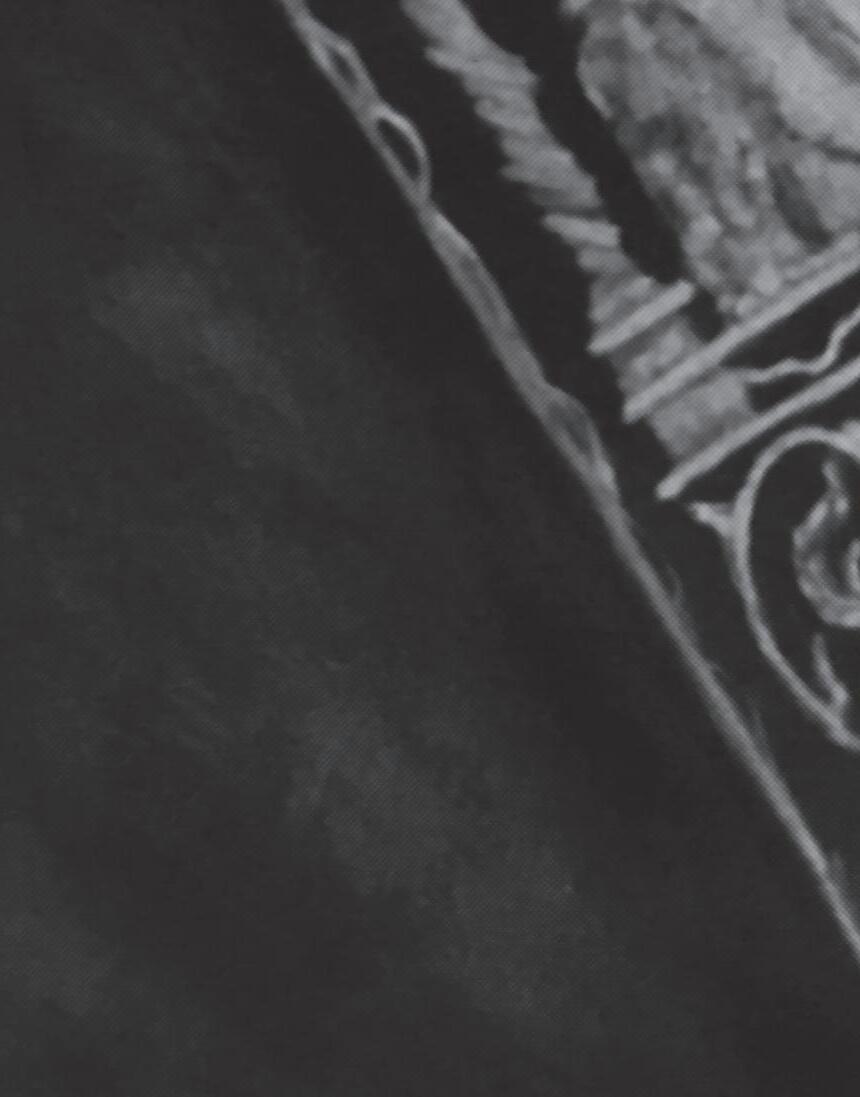


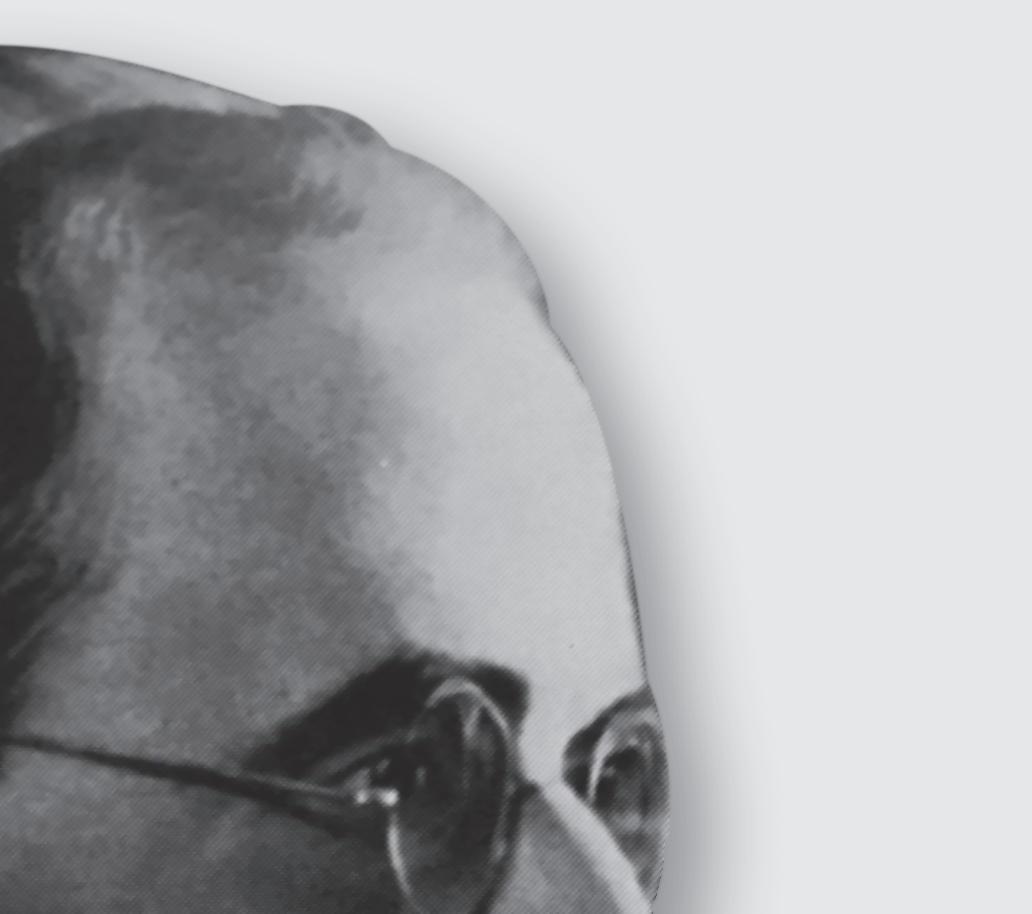
1936 TO
40
GOD, WITH GRATITUDE | 200 YEARS OF SLUH
Getty image.



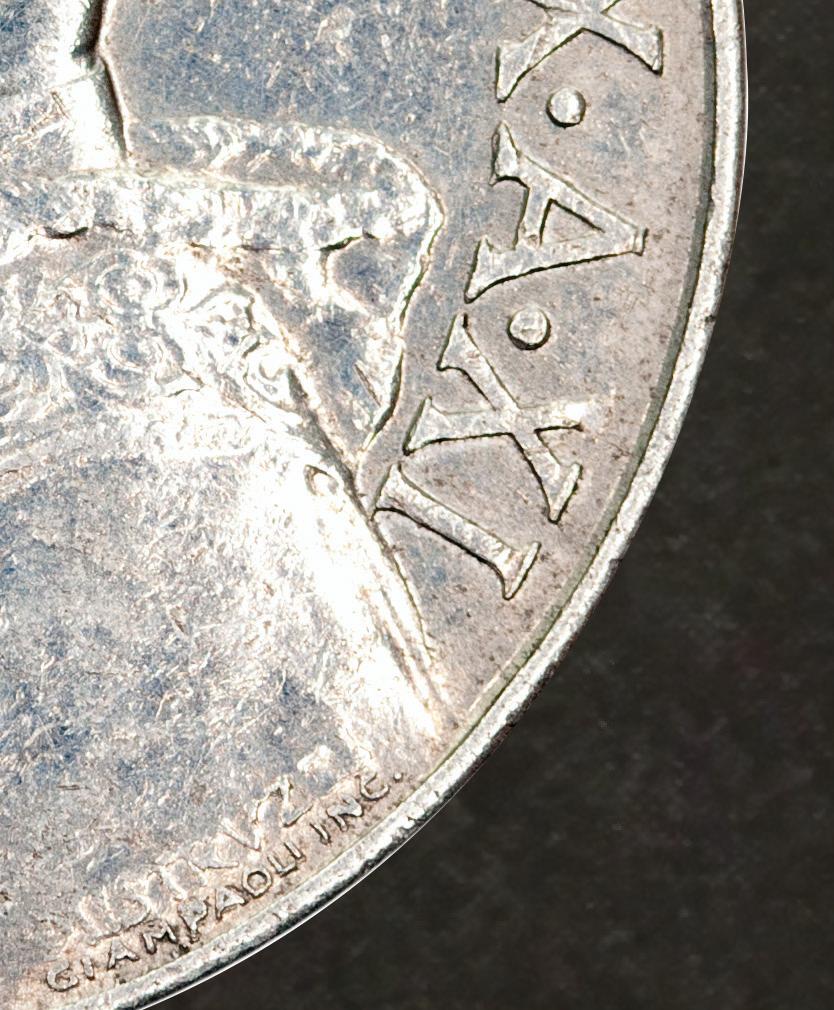
PART TWO 41
1938 Jesuit Legacy
Fr. John J. Divine, S.J.
As the nation and SLUH slowly crawled out of the Great Depression, a dynamic Jesuit priest began a twenty-three-year career at the school, playing an integral part in founding or reinventing many institutions that continue to benefit the school today.
Fr. John J. Divine, S.J., came to SLUH in 1938 and revived the school newspaper, which had published only a single issue the previous year after a Depression-era hiatus of ten years. Fr. Divine served as the moderator of the University Prep News (the paper dropped the word University from its masthead in 1950) for eleven years, during which time he also moderated the Dauphin yearbook.
As senior class moderator, Fr. Divine oversaw the creation of Senior Council, the beginnings of a student government at SLUH. Senior Follies, a yearly satirical revue that continues to the present day, began under Fr. Divine’s direction.
He also initiated the retreat program at SLUH, beginning in 1940 with a senior retreat at White House.
In 1941 Fr. Divine reorganized and reinvigorated the St. Louis U. High Alumni Association, reaching out to the school’s graduates in a much more formalized and consistent way and raising money for scholarships and school improvements.

The tireless Jesuit worked at SLUH until the day of his death of a heart attack, at the age of fiftyseven, on February 22, 1961. The Prep News noted, “His death will leave a space in the St. Louis U. High picture that will not be filled for many years to come.”
In 1974 the John J. Divine, S.J., Alumni Service Award was established as a permanent memorial to this important figure in the school’s history.
Fr. Divine served at SLUH from 1938 till his death in 1961. He was instrumental in the creation or revival of important SLUH institutions like the Prep News, yearbook, retreat program, Senior Follies, and Alumni Association.

TO GOD, WITH GRATITUDE | 200 YEARS OF SLUH 42
Smoke Commissioner 1939




Though the educational atmosphere within the Backer Memorial nurtured young minds, the actual atmosphere around SLUH was anything but healthy. Air pollution in St. Louis reached extreme levels in the 1930s. A famous photo from “Black Tuesday,” November 28, 1939, vividly dramatizes the extent of the problem.

St. Louis’s mayor at the time, Bernard F. Dickmann, turned to a school alumnus to fix the problem. Raymond Tucker ’13, an assistant to the mayor, had previously been a mechanical engineer at Washington University. As Dickmann’s “Smoke Commissioner,” he used his academic training and political savvy to craft tough laws banning the use of soft coal, despite protests from the coal industry.
Tucker would later go on to serve three terms as mayor of St. Louis, racking up major accomplishments: the planetarium, floodwalls, a revival of the plans for the Arch grounds, the construction of Busch Stadium, and the passage of civil rights laws. But he said that cleaning up St. Louis’s air had been his toughest challenge.
Raymond Tucker was one of several alumni who served as mayor of St. Louis. Before his three terms in that role, however, he served as “Smoke Commissioner” and cleaned up the city’s terribly polluted air. (Photo courtesy of Missouri Historical Society, St. Louis, Missouri.)

PART TWO 43
Taken downtown in the middle of the day on February 13, 1939, this photo illustrates the extremity of St. Louis’s air pollution. (Courtesy of the Missouri Historical Society, St. Louis.)
1941–1945


The cataclysm of World War II was felt deeply within the halls of the Backer Memorial. From 1941 to 1945, members of the SLUH community went about their daily activities with the reality of the war looming large in the background. A review of the Prep News in those years shows the intense involvement of students, teachers, Jesuits, and alums in the massive conflict as they fought, supported those who fought, and strove to make sense of the fighting.
In the first issue of the school newspaper following the bombing of Pearl Harbor and America’s entry into the war, an editorial asked, “Why War?” The writer poses some of the hardest questions of philosophy, attempting to square the co-existence of “havoc, ruin, and bloodshed” and an all-loving, all-powerful God.
Throughout the war years, periodic editorials in the school newspaper interpreted the conflict for students, along with their place in a world defined by it. One such editorial encouraged students to develop themselves both mentally and physically so that they could be of greatest service to their country.
Frequent “Follow the Flag With Our Alumni” features, presenting dispatches from around the country and the world, offered students concrete examples of military service. In March 1943, SLUH teacher and coach Ralph Kirn was inducted into the Navy, and soon a photo of him in uniform appeared in the paper. Even the Jesuits themselves enlisted. Two former principals of the school, Fr. Neil McManus, S.J., and Fr. Frederick Zimmerman, S.J., trained as chaplains and served at Walter Reed Hospital and in the Pacific.

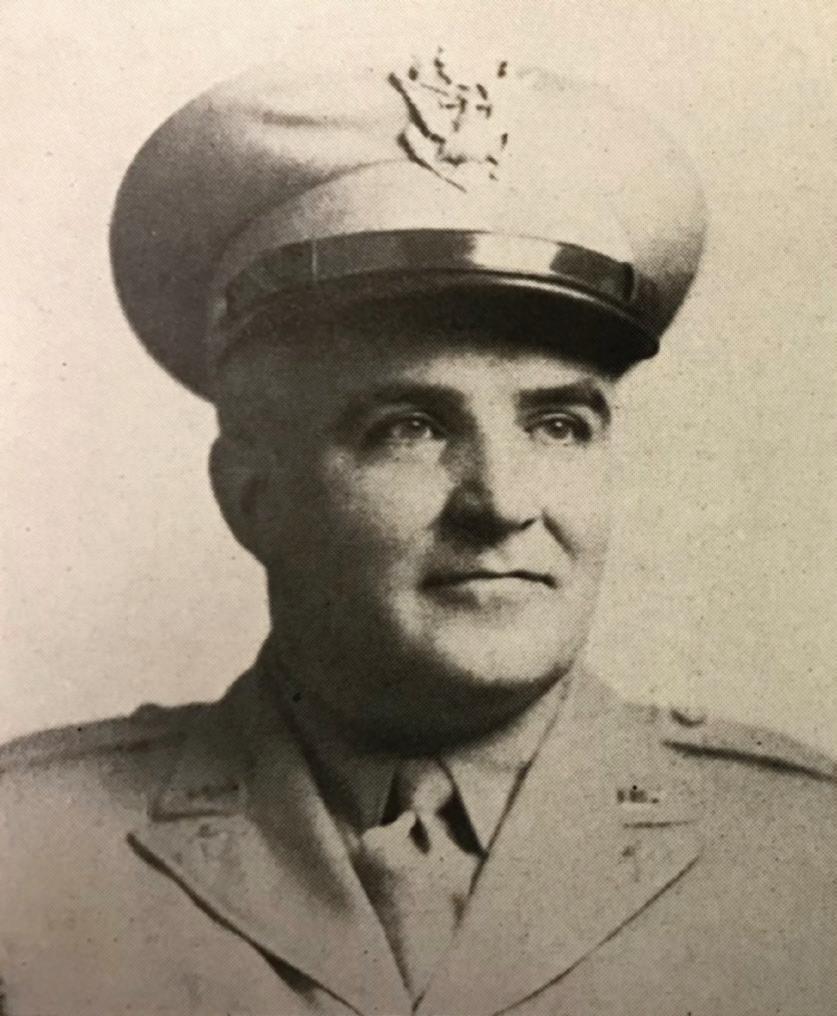
TO GOD, WITH GRATITUDE | 200 YEARS OF SLUH 44
Neil McManus, S.J. (left), and Frederick Zimmerman, S.J. (right), both Jesuit priests and former principals of SLUH, served as chaplains in the Army during World War II, attaining the rank of captain.
World War II and SLUH



The school itself became the site of war efforts. A Coast Guard unit met at the school. The school cafeteria served a free breakfast on Sunday mornings to soldiers stationed at a camp at Kingshighway and Oakland. Students raised money for a war chest by selling scrap metal and war bonds. Qualifying tests for the Navy and Naval Air Corps were given at the Backer Memorial, with the results published in the Prep News.

The paper also reported news of alumni who were decorated, killed, or missing in action. As alumni director, Fr. Divine committed to sending each issue of the Prep News to all alums in the service. The vocabulary of battle found its way into headlines as well: “Doerr Scores 3 Times in Aerial-Line Bombardment” and “Stop Maplewood’s Mundwiller

is Dauphin’s War Cry.”

Some seniors, turning eighteen in the middle of their final year of high school, faced the possibility of being unable to earn their high school diplomas before induction into the military. To address this issue, SLUH offered summer sessions and twice held early graduation ceremonies, in January 1944 and 1945. Even as the student body, led by President Fr. Rickard R. Rooney, S.J., celebrated V-E Day with prayer and solemn adoration, many seniors still awaited the call to deployment or induction.


PART TWO 45
A list in the issue of March 9, 1945, named nineteen alumni who had given their lives “For God and Country,” eleven who were missing in action, and four who were prisoners of war. As the war concluded with the carnage of the atomic bombs in Hiroshima and Nagasaki, the Prep News editorials showed a sober awareness of the cost of war and a deep desire for peace. “The justifiable reason for drafting boys of eighteen is no longer valid,” asserted the editors. “The teenagers have done their job. Let them now contribute the best they have to their country—the peaceful pursuit of knowledge, the acquisition of the moral principles upon which Democracy is founded and upon which only it can flourish.”









Prep News issues from the war years provide a window into the constant presence of the war in the life of SLUH.






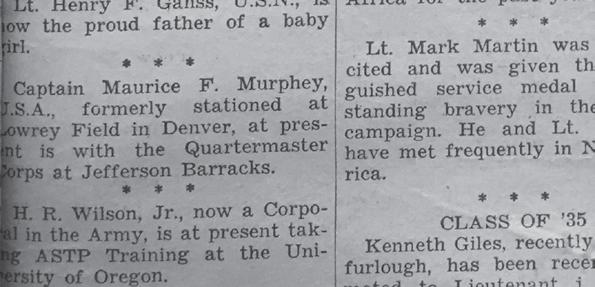



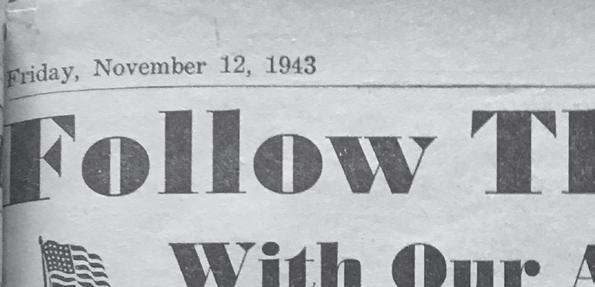





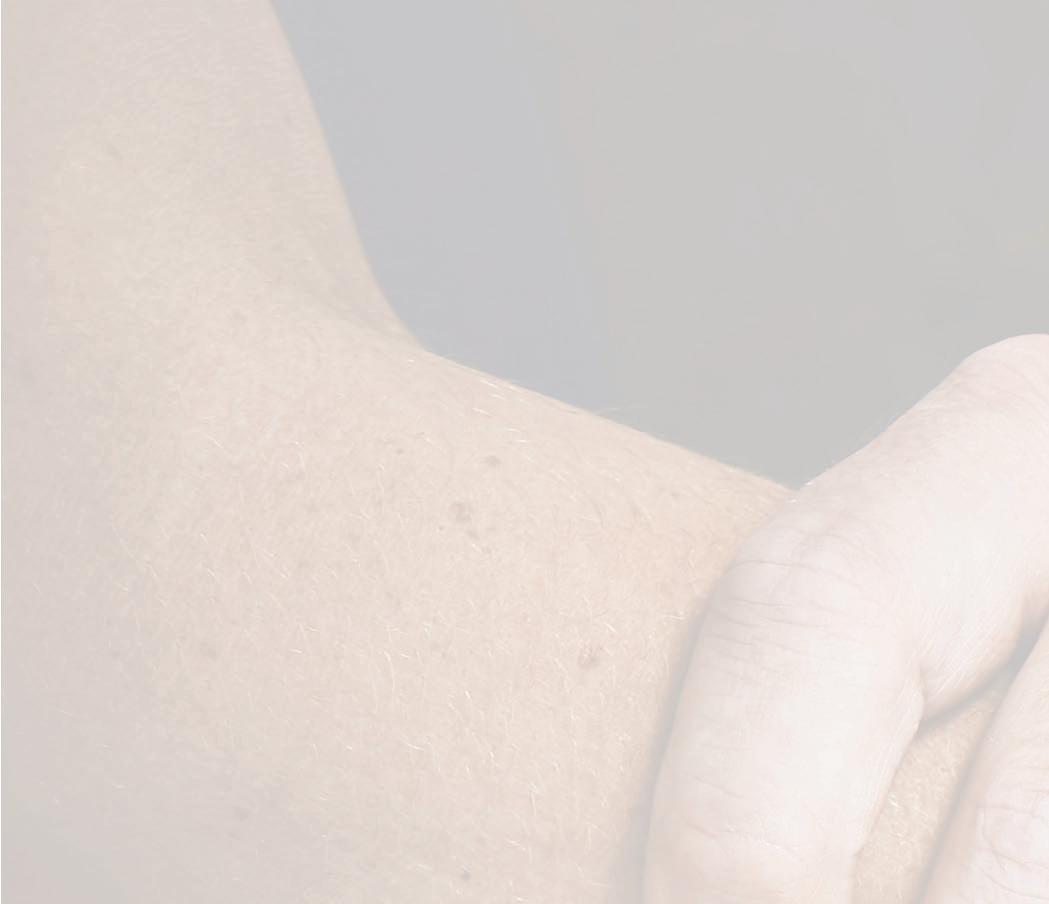
TO GOD, WITH GRATITUDE | 200 YEARS OF SLUH 46
1944
Fr. Claude Heithaus, S.J., ’16, gave a fiery homily at St. Francis Xavier (College) Church in 1944 denouncing the exclusion of black students from Saint Louis University.
Fr. Claude Heithaus, S.J., Denounces Racial Segregation










Ever since Fr. Van Quickenborne had trekked across the country to St. Louis with a traveling party that included six enslaved African Americans, the Jesuits here had been enmeshed in the evils of slavery and racism that gripped the community in which they served. Though slavery had ended in 1865, Jim Crow segregation took its place. African Americans could not gain admission to Saint Louis University or the high school. It would take a courageous Jesuit who had attended SLU’s high school division to stand up at last and force a change.
Claude Heithaus joined the Jesuits after graduating in 1916 from Loyola Hall, one of the three high schools at SLU. He studied anthropology at the University of London and eventually became a professor at Saint Louis University.
In 1943, the leadership at SLU fended off proponents of racial integration with calls for delay and careful attention to the desires (and prejudices) of white alumni and parents. Fr. Heithaus blasted through this moral ambivalence with an impassioned sermon denouncing racism and urging integration of the university. On February 11, 1944, at a student mass at St. Francis Xavier (College) Church, Fr. Heithaus took a stand for justice with words that were also published in SLU’s University News that same day.
“It is a surprising and rather bewildering fact, that in what concerns justice for the Negro, the Mohammedans and the atheists are more
Christ-like than many Christians,” Fr. Heithaus said, thunderously attacking his own institution’s hypocrisy. “The followers of Mohammed and of Lenin make no distinction of color; but to some followers of Christ, the color of a man’s skin makes all the difference in the world.”






Fr. Heithaus also shared his text with the local press, and it was published in Catholic newspapers around the country, though not in the Archdiocese of St. Louis. His stance had a tangible and speedy effect: SLU admitted five African Americans the following term, becoming the first university in the state to integrate, and the first university in a former slave state to do so. SLUH, following the lead of the university, admitted its first black student in 1946—John Carter, son of a professor at Stowe Teacher’s College.
In the fall of 1944, however, Fr. Heithaus, faculty sponsor of the University News, refused to print a notice from the president of the university that black students would not be allowed to attend the prom. His disobedience resulted in his banishment from SLU for a number of years.
PART TWO 47
Fr. Claude Heithaus, S.J., was posthumously honored by SLUH with the Backer Award in 2009.
1945
“Easy MacauleyEd”No. 22
Perhaps the most famous athlete to graduate from SLUH is basketball great Ed Macauley ’45. When the Danis Field House opened in 2009, Macauley was honored with a banner featuring his photograph. His jersey number, 22, was the first ever to be retired by SLUH.
Macauley, at 6 8 , was an All-State basketball player at SLUH. He was the team’s leading scorer and was also elected to the student council. After graduating, he went to Saint Louis University (his mother had told him he could go to college anywhere as long as it was a Catholic school in St. Louis) and led the Billikens to an NIT championship, at the time the nation’s biggest college tournament. The Associated Press chose Macauley Player of the Year. Macauley played for the Boston Celtics and was the MVP of the first NBA All-Star game. He led the St. Louis Hawks to their first championship in 1958. Enshrined in the NBA Hall of Fame in 1960, he still holds the record for being the youngest player to be admitted, at just thirty-two years old. A man of deep faith, Macauley was a deacon in the Catholic Church and a father to seven children. He was committed to the pro-life movement. A great supporter of SLUH, Macauley loved to watch his son’s and grandsons’ SLUH basketball and soccer games. He died in 2011.
Macauley ’45 was an NBA Hall of Famer, pictured here playing for SLU. His jersey number was the first number retired by SLUH.

TO GOD, WITH GRATITUDE | 200 YEARS OF SLUH 48
The crack of the pool ball and the thwack of the ping-pong paddle. The shouts of “Nickel!” The report of gunfire. The echoing calls of amusement in a concrete-walled subterranean space. These sounds are part of generations of SLUH students’ memories of the rec room, SLUH’s finished basement—or, rather, the school’s perpetually unfinished gift to the leisure of its young men.





In cooperation with the Fathers Club, during World War II the Jesuits committed to excavating the western half of the area under the central portion of the original school building to create more indoor recreational facilities for students. This project cost about $25,000. The rec room opened in 1945.





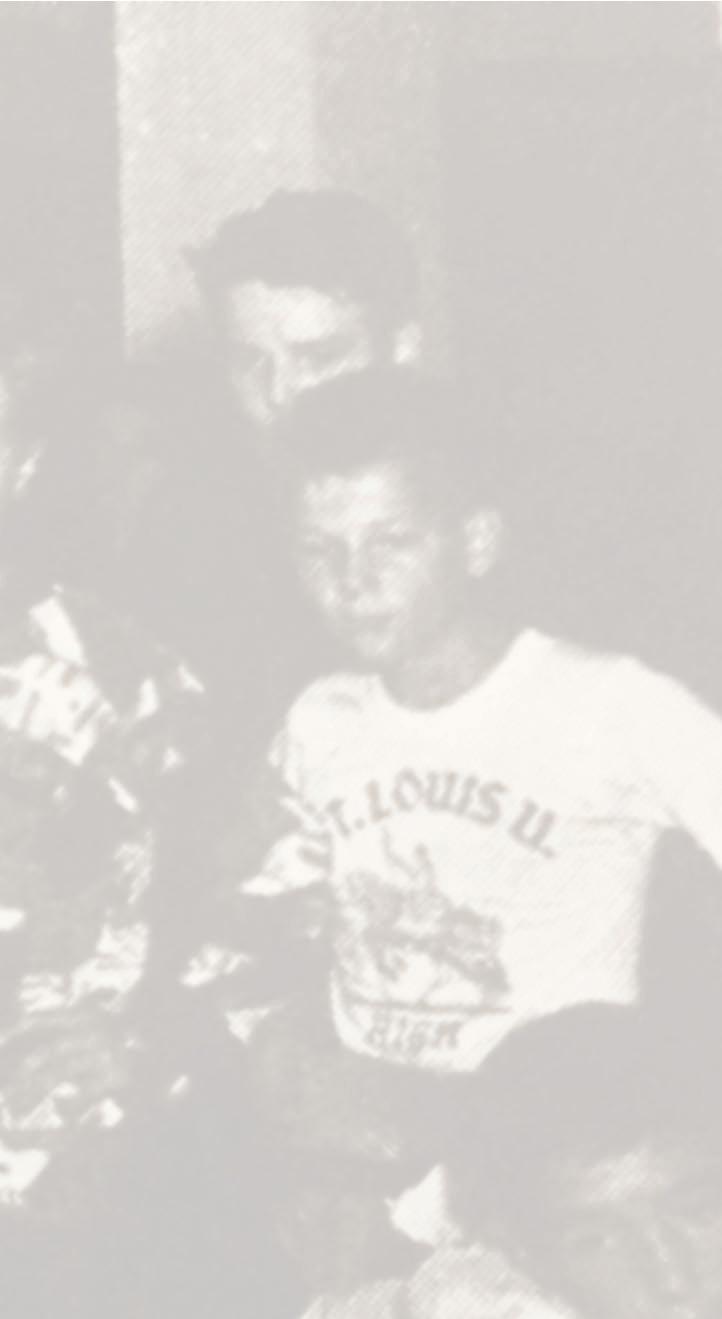


Rec Room Excavated 1945
In the mid-1990s, a portion of the rec room was turned into computer labs. The wallball hoops were removed after a spate of injuries to student fingers. A few years later, the remaining eastern half of the basement was excavated to create a new weight room and fitness center, along with storage areas and a room currently used by the Robotics Team. But the rec room still serves dozens of students every day, and the raucous noise of adolescent fun still fills the cavernous basement.
PART TWO 49
The SLUH rec room constitutes one of the largest pool halls in the Midwest.
The rec room includes a rifle range. Here Fr. Martin Hagan, S.J., long associated with the rec room and rifle team, instructs a student in proper shooting technique.
1947
Jesuit Legacy

Brother Thomas Thornton, S.J.
Brother Thomas Thornton, S.J., was the longestserving Jesuit in SLUH history. He spent nearly his entire career as a Jesuit at the school.

Known to his friends and colleagues by the nickname “Throcky,” Brother Thornton was sacristan for the Jesuit community, maintaining the items needed for the celebration of Masses at SLUH. For twenty years he ran the school’s bookstore, located in the rec room. Thornton was infamous for never turning a profit in the bookstore; his merciful generosity to needy scholars overwhelmed any strictness of accounting.
Brother Thornton also enjoyed a special relationship with the Mothers Club. Nominally the club’s “moderator,” he would often lead the group in prayer at the beginning of events. The mothers, who found Brother Thornton a delight, proudly adopted the nickname “Tommy’s Mommies.”

At Cashbah one year, Brother Thornton fell in love—with a dachshund that was to be auctioned off. Somehow the dachshund never made it to auction, and a SLUH legend was born. Doxie became Brother Thornton’s constant companion around the school. The handsome but diminutive canine grew fatter over time, and for years the changing school rotation of classes was communicated to students with mnemonic devices involving Doxie.
Brother Thornton was honored with a tree in Alumni Park next to the upper field, as well as, for a time, a street named for him—Brother Thornton Way, later swallowed up by the expansion of the campus. Brother Thornton died on May 22, 2005, at the age of eighty-five. He had been a Jesuit for sixty-seven years.
TO GOD, WITH GRATITUDE | 200 YEARS OF SLUH 50
Brother Thomas Thornton, S.J., was sacristan of the Jesuit community at SLUH and the longest-serving Jesuit at the school.
For years Br. Thornton oversaw the SLUH bookstore. Infamously, the bookstore typically lost money on his watch because he gave away books to students who lacked the money to buy them.

Joseph Schulte and the Dauphin Players
The student actors and crew who stage several plays each school year are known as the Dauphin Players. The name, adopted in 1949, comes from a title that for centuries was given to the heir apparent to the French throne.
In the school’s history, no individual has been more deeply associated with this theatrical group than Joseph Schulte ’54, who taught at SLUH for more than fifty years. When Schulte announced his retirement from the classroom in 2010, the Prep News noted that the mathematics and fine arts teacher had been at SLUH in six different decades, seen eleven presidents, and attended more than 9,000 school days.
Volunteering at SLUH even during his college years at Saint Louis University, Schulte started as an algebra teacher and eventually served as chair of the Mathematics Department. When the school began requiring fine arts credits for graduation, Schulte taught in that department as well, creating courses in acting and oral communications. As part of his freshman theater course and his work with the Circus Club, Schulte taught hundreds of Jr. Bills to juggle. Indeed, it was in the realm of theater that Schulte made perhaps his most lasting mark on SLUH. As a longtime director of musicals
and other theatrical performances, Schulte brought decades’ worth of laughter and entertainment to the SLUH community. Although many of the Dauphin Players have gone on to great success in the entertainment industry, many other students of his, of course, applied his lessons in less prominent ways: making their friends and families smile by juggling, giving effective speeches in their workplaces, and teaching subjects that they originally encountered through Schulte.

Each year the Dauphin Players present at least three different plays to the SLUH community with a high level of professionalism, in a theater that in 2005 was officially named for Schulte.




TO GOD, WITH GRATITUDE | 200 YEARS OF SLUH 52
F. Joseph Schulte attended SLUH from 1950 to 1954, beginning a lifelong connection to the school.
1949
Schulte’s decades of work with the Dauphin Players led to the naming of the SLUH theater in his honor.
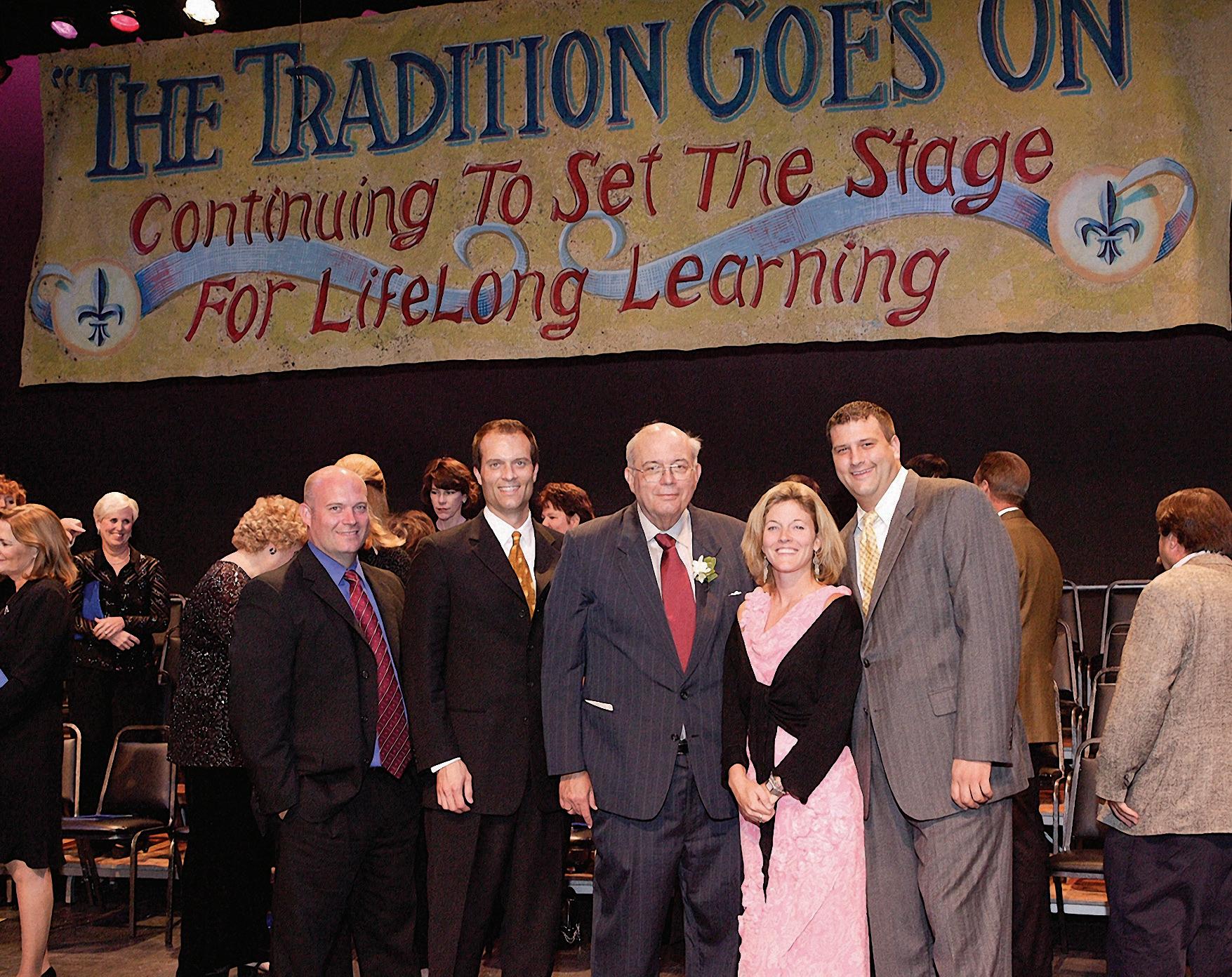 Joe Schulte ’54 with his children at a 2005 gala formally dedicating the SLUH theater in his name.
Joe Schulte ’54 with his children at a 2005 gala formally dedicating the SLUH theater in his name.
Trailblazers for Inclusion


The first black student to attend SLUH, John Carter, began as a sophomore two years after Fr. Heithaus had made his historic demand for racial integration at Saint Louis University, one year before Cardinal Joseph Ritter ordered the integration of Catholic schools in the St. Louis Archdiocese, and eight years before Brown v. Board of Education.

Carter’s father was a teacher at Stowe Teacher’s College, a historically black institution. Carter attended SLUH during his sophomore and junior years only.
Paging through the photos of SLUH graduating classes, not until the Class of 1950 does an African American student appear. The steady gaze, the hint of a smile, the striped tie: these belonged to Al G. Thomas, the first black student to graduate from SLUH. Like Carter, Thomas began his SLUH career as a sophomore.
According to his senior yearbook, Thomas’s favorite subject was English, and he served as Assistant for Intramurals to one of the Jesuits. Although Thomas and many of his classmates are no longer alive, two of those classmates remember him as “a pleasant guy” whose family
owned a grocery store and who went out for the football team his senior year but had to quit early in the season because his father was ill.
The year after Al Thomas became the first black student to graduate, Eldridge Morgan became the first black student to graduate after having attended SLUH for a full four years.
Much of these pioneering students’ stories has unfortunately been lost. Nevertheless, their names and photographs remain as a testament to their courageous participation in SLUH’s history and their roles as trailblazers for many students to come. They represent a new era in SLUH’s history, in which graduates embodied a fuller range of humanity and the school served a wider swath of St. Louis.
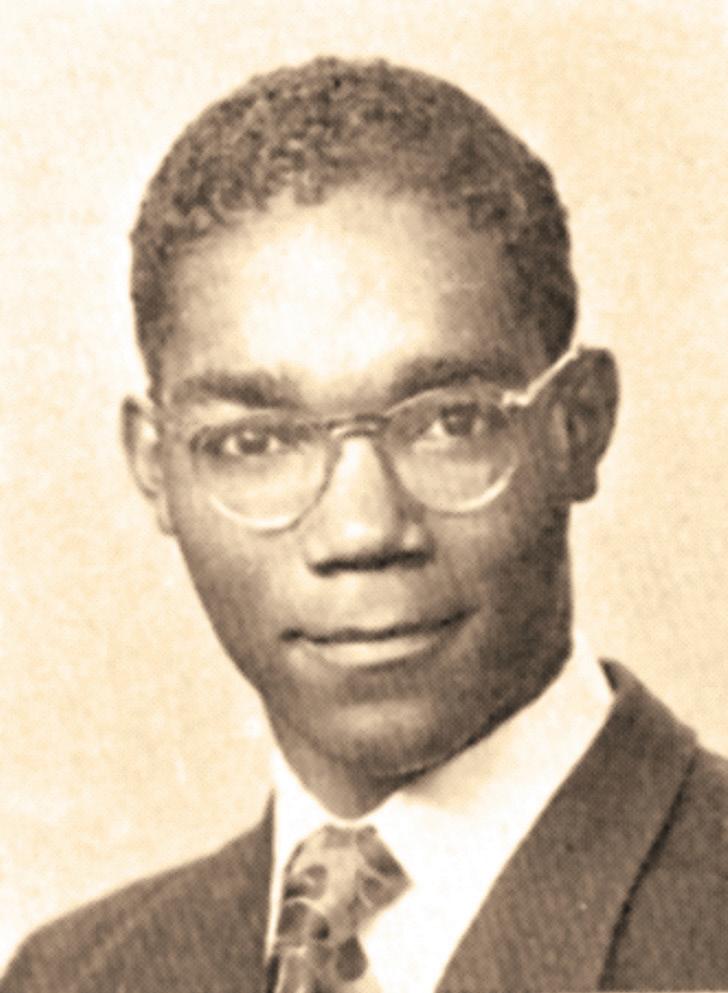
TO GOD, WITH GRATITUDE | 200 YEARS OF SLUH 54
1950
Alphonse G. Thomas ’50 (left) was the first African American student to graduate from SLUH. He matriculated as a sophomore.
Eldridge Morgan ’51 (right) was the first black student to graduate after spending all four years at SLUH.
 John Carter, the first black student to attend SLUH, started as a sophomore in 1946.
John Carter, the first black student to attend SLUH, started as a sophomore in 1946.
1950

Jesuit Legacy

Fr. Marty Hagan, S.J.

Ordained in 1950, Fr. Martin “Marty” Hagan, S.J., spent nearly his entire career as a Jesuit priest at SLUH, leaving an indelible mark on the institution and the hearts of those who studied and worked there. The word gratitude hardly seems sufficient as a response to Fr. Hagan’s loving service to the SLUH community.
When he first came to SLUH, Fr. Hagan was given responsibility for the basement of the school, which would come to be called the rec room. He oversaw the creation of the largest pool hall in the city—some would say in the Midwest—with more than thirty tables at one point. To maintain the equipment for the hall, Fr. Hagan instituted a simple system: Whenever a student dropped a ball or cue on the ground, the rest of the students were trained to yell out, “Nickel!” The offending player, thus publicly identified, would dutifully turn in his five-cent fine.
Fr. Hagan installed metal hoops for wallball, modeled after a game he saw at a Jesuit school for Native American students in South Dakota. The rec room also included (and still includes) ping-pong, shuffleboard, checkers and chess tables, as well as a rifle range.
When Fr. Hagan came to SLUH, he was also given responsibility for the rifle team, even though he had never even fired a gun before then.
Fr. Hagan’s rifle teams won five National Championships and, incredibly, once defeated West Point’s team. As he approached eighty years old, he retired from the rifle range completely, saying, “I can still get down on my knees and teach a boy how to shoot. The problem is that I can’t get back up again.”
INTRODUCTION TO PART TWO 56
TO
56
Hagan was ordained in 1950.
GOD, WITH GRATITUDE | 200 YEARS OF SLUH
Hagan’s rifle teams won five national championships, though at the time he was tasked with coaching the team Hagan had never fired a gun.
The rec room in SLUH’s basement was officially named the Fr. Hagan Rec Room in 2003, with a plaque that reads as follows:
Arguably the most well-known Jesuit in the history of St. Louis University High, Fr. Martin Hagan devoted over 50 years of his priestly life to the young men of SLUH. As priest, counselor and friend; as teacher of religion and English; as coach of the five-time national champion rifle team; as moderator of this recreation room, he made it his constant goal to make each SLUH student feel welcome and successful. He made it his goal each year to know every student by name.

Recognized as synonymous with the school, a touchstone for generations of Junior Billikens, may this man of compassion and generosity, this “man for others,” continue to be an inspiration for generations to come.
Fr. Hagan learned not only students’ names but he also learned about their families, their interests, and their activities. He often recognized and addressed by name former students who had graduated twenty or even thirty years earlier.
Fr. Hagan spent virtually his entire career as a Jesuit priest at SLUH. He was famous for learning every student’s name and carefully monitoring individuals’ progress.
The death of Fr. Martin “Marty” Hagan was announced to the SLUH community during morning prayers on April 28, 2008. More than a thousand mourners, including hundreds of alumni, fi lled the College Church for Fr. Hagan’s funeral Mass.
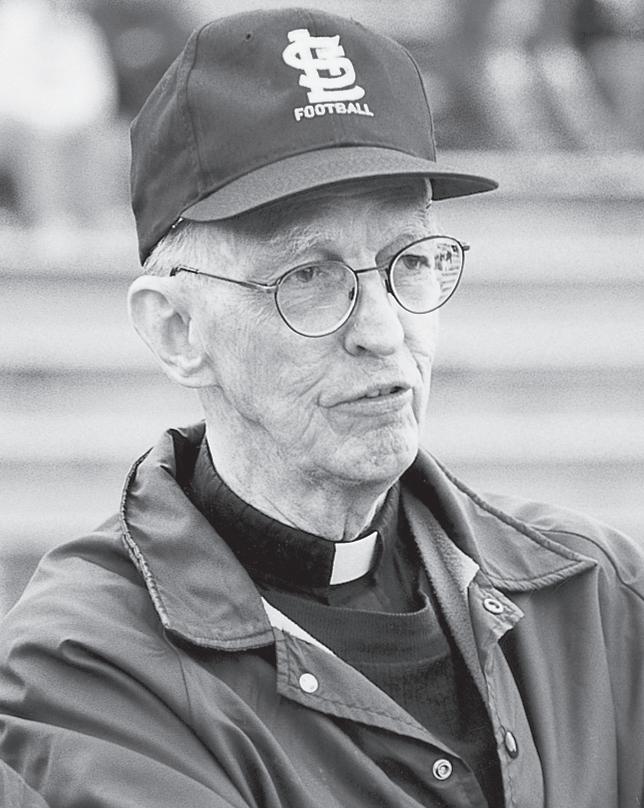
PART TWO 57
A New Era: Legendary Lay Teachers


Lay teachers have been a part of the school from the very beginnings in Eugenie Alvarez’s house. When SLUH celebrated its twenty-fifth anniversary at the Backer Memorial, it shared the celebration with Carl Miller, a beloved lay chemistry teacher who had been there since the first year. The 1950s, however, saw the hiring of a group of men whose long careers would lead the school into a new era—one in which lay teachers would step into many of the roles once filled primarily by Jesuits, setting high standards in the classroom and on the athletic field.
1950s
Dominic Calacci taught social studies at SLUH for thirty-five years and coached underclassmen in football, basketball, and track. When he began teaching at SLUH, the school was staffed mostly by Jesuits; when he retired, mostly by laypeople.
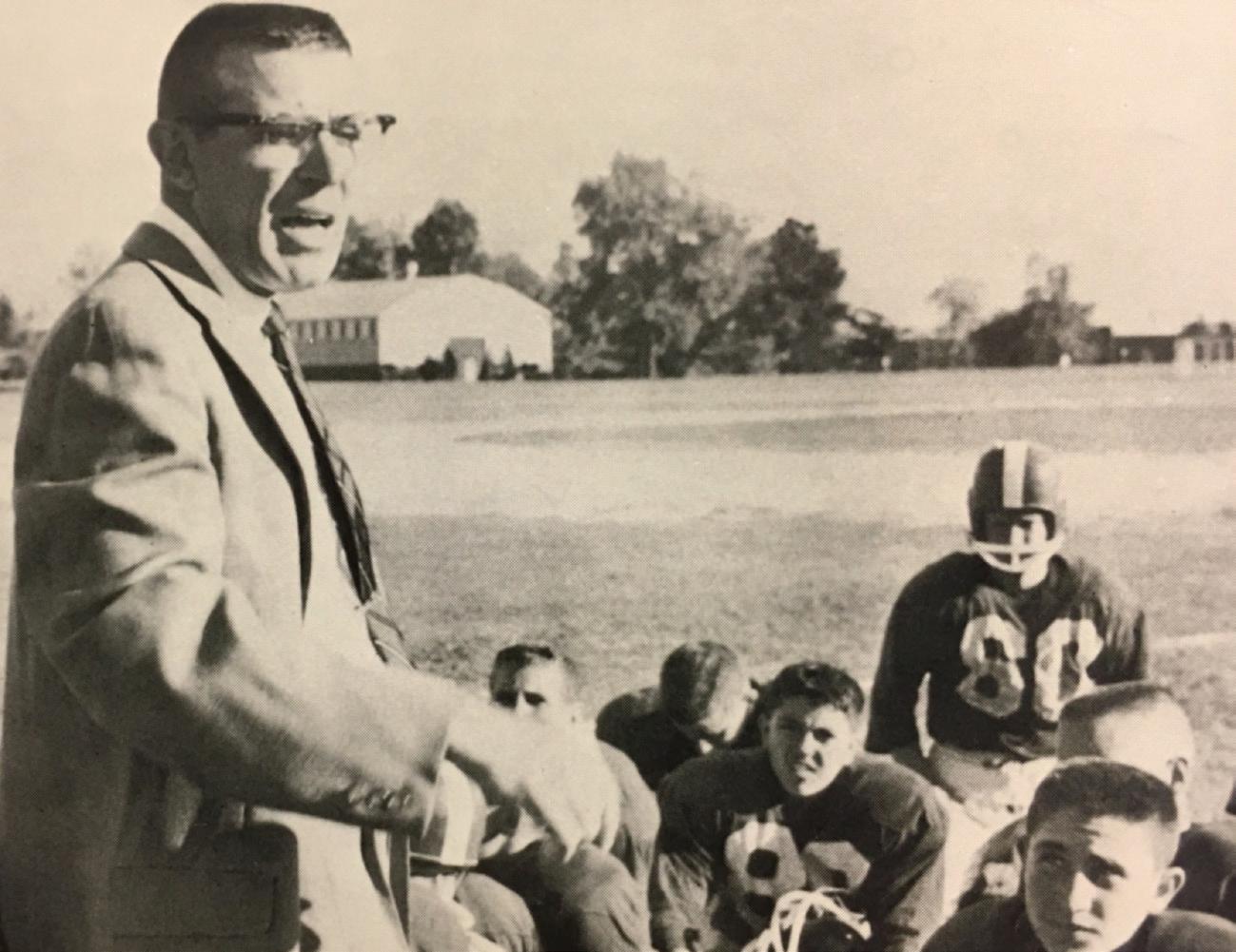
Emmet Hanick taught math and science for thirty-eight years at SLUH and coached the basketball team to two state championships.

TO GOD, WITH GRATITUDE | 200 YEARS OF SLUH 58

For example, Emmet Hanick, over the course of a thirty-eightyear teaching career, carefully trained his math and physics students as well as his varsity basketball players. Hanick coached the team for twenty-three seasons, winning two state championships and logging an undefeated season in 1958. Another SLUH sports legend, Edward “Ebbie” Dunn, taught math for forty years and coached football and soccer, bringing home state championships in both sports. Paul Martel, a physical education teacher, was head coach of the varsity football team for twenty-nine years. In his first eighteen seasons, the team lost no more than three games per year. Martel and Dunn together

coached the team that in 1970 won the Missouri Class 4A football state championship for the first and thus far only time in SLUH’s history. Another figure in this mid-century pantheon, Deacon James “Doc” Murphy, Ph.D., played a key role in setting the tone at SLUH, teaching, coaching, counseling, and serving in a clerical role during a career of more than forty years. Deacon Murphy created the Senior Advisor program, coached wrestling and football for a quarter century, and is also known as the inventor of bashball, a cherished game unique to SLUH.




TO GOD, WITH GRATITUDE | 200 YEARS OF SLUH 60
Carl Miller taught in the science department at SLUH for his entire career. This photo is taken from the 1966 yearbook.
Paul Martel coached the SLUH football team for twenty-nine years, with a career record of 200–79–8. Martel taught physical education at SLUH as well. Also pictured here is Ebbie Dunn, who assisted Martel as a coach until soccer became a fall sport for high school boys in Missouri.



Dominic Calacci worked primarily with underclassmen in his thirtyfive years of teaching and coaching. Calacci taught a wide variety of social studies classes and coached football, basketball, and track. He led freshman football teams through fourteen undefeated seasons.
Calacci recalled that when he was hired as a social studies teacher at SLUH in 1957, the school had about ten times as many Jesuit as lay teachers. When he retired thirty-five years later, the proportions were reversed. Calacci felt a strong continuity between the two eras, however. “The early Jesuits, especially, passed on their traditions and strong commitment to the faculty, particularly the coaches,” he said. “We were sort of ‘lay Jesuits’ carrying on their traditions.”
Over a forty-year career at SLUH, math teacher Edward “Ebbie” Dunn coached football and soccer, winning state championships in both.
Jim Murphy served in a wide variety of roles over four decades at SLUH, teaching, coaching, counseling, and ministering to the community as a deacon.

In the 1970s, the lay faculty and staff (red) began to outnumber the Jesuits (blue), a trend that continues to affect the cost of education.





PART TWO 61
Carl Miller began teaching at SLUH in 1924, the school’s first year in the Backer Memorial.
Wielding a narrow wooden stick in one hand and a cigarette in the other, Fr. Phil Kellett, S.J., embodied the spirit of SLUH during the 1960s by inspiring athletes and student crowds with his fiery pep-rally oratory.
A star college athlete, Fr. Kellett played semi-pro basketball and baseball, and he was offered a position with the Cleveland Indians. He turned it down, telling them, “I’ve already signed up with the Jesuits.” He proceeded to bring his competitive spirit and his love of sports to the students of SLUH.
After being assigned to SLUH in 1953, Fr. Kellett served as athletic moderator for nearly his entire career. He also taught Latin and helped with the production of Senior Follies. Smoking nearly non-stop, Fr. Kellett also carried to all of his classes a pointer stick that he used to punctuate his teaching and add emphasis to his lessons. He broke countless numbers of these sticks on blackboards, chalk trays, and desks,

1953 Jesuit Legacy

Fr. Phil Kellett, S.J.
littering the classrooms with debris but effectively keeping students awake. At the end of each school year, the freshmen he had taught would buy him more sticks to ensure that he had an adequate supply with which to goad the following year’s freshmen.
On February 3, 1973, Fr. Kellett was struck with acute abdominal pains and asked to be taken to the hospital. At sixty-six years old, he died in the operating room from a ruptured aneurysm. The SLUH community was shocked but grateful to the iconic Jesuit teacher. French teacher Richard Keefe summed it up succinctly: “Father Kellett gave everything he had to SLUH.”
Fr. Phil Kellett, S.J., directed the SLUH athletic program and famously taught with the aid of pointer sticks, which he often broke on desks, chalkboards, and elsewhere in order to keep students awake.

TO GOD, WITH GRATITUDE | 200 YEARS OF SLUH 62
1954 Jesuit Legacy

Fr. Paul Distler, S.J.
Fr. Paul Distler, S.J., taught Latin and religion at SLUH from 1954 to 1978. Upon Fr. Distler’s death in 1986, Rich Moran ’66 published in the Prep News a memorable tribute to his former teacher. Moran, at the beginning of a long and successful SLUH teaching career of his own, provided a vivid portrait of one Jesuit educator in the middle of the twentieth century: He was not a flashy man nor a particularly inventive teacher. Although we had both been in the same building for three years, I remember thinking as he walked into our first Latin class that I had not seen him before. Even now, I can never remember him saying Mass, attending a football game, or chewing the fat in the student council office after school. I remember him only as an erect posture and clear voice in the front of Room 216. I can remember no gimmicks to his teaching.. . Our only diversion was an occasional test on the figures of speech and prosodic devices which we were required to memorize. Nothing in his manner or practice allowed us to think that we could evade the strict accounts he kept.

He called me “Moran” and mocked our ignorance, particularly my ignorance, first of Latin but also of the world. Raised in Jeff City (I know now—then we knew nothing so personal), he was always distressed when Vergil suggested but we ignored some detail of a farmer’s life. It was bad that we could not separate the wheat from the chaff intellectually but even more unforgivable that we did not know real wheat from real chaff.
I was his particular whipping boy. If he wanted a wrong answer, he would call on me as if to indicate to the better students what might become of them if they developed habits as slovenly as mine. Early in the year, I felt embarrassed; a bit later I felt angry—angry enough that I wanted to get even, to show him that I wasn’t the idiot he supposed me to be. Finally, I felt thankful; he made me show him what I was capable of and, by accident, I showed myself. All along, however, I suspected affection and even mirth buried beneath the ruffness.
PART TWO TO GOD, WITH GRATITUDE | 200 YEARS OF SLUH 63
Fr. Paul Distler, who taught Latin at SLUH for twenty-four years, embodied the academic rigor and stern classroom manner for which Jesuit educators were renowned.
1955 Jesuit Legacy
Fr. Gerald Sheahan, S.J.
As SLUH changed from a school dominated by Jesuits to one dominated by lay teachers, it required a keen vision and a steady hand to guide it through this tricky transition. Many who were at SLUH during those years are grateful that it was Fr. Gerald Sheahan, S.J., who brought precisely these qualities to his leadership of the school. Fr. Sheahan served as principal of SLUH for twelve crucial years, from 1955 to 1967. “He’s absolutely the architect of our school as we know it today,” said Fr. Ralph Houlihan, S.J., ’52, who served as principal of SLUH during the 1970s.
Fr. Sheahan’s term of leadership coincided with a period of declining numbers of young men entering the Jesuits. He oversaw the first major influx of lay teachers, and he established a standardized pay scale and retirement plan, making the job much more stable and attractive. Fr. Sheahan also oversaw a wide range of other improvements to SLUH’s facility and program: the construction of the first theater, gym, and library; the introduction of Chinese, Russian, and biology to the curriculum; the founding of the instrumental music program and Fine Arts Department; the institution of the demerit card system and work grant program; and the creation of academic departments.
Fr. Sheahan also made a momentous decision regarding the size of SLUH’s student body. In the early 1960s, he had to turn away so many worthy applicants that he considered raising the number of students to 1,600. Upon further review, however, he decided that doing so would negatively change the atmosphere at SLUH. He instead recommended the creation of a second Jesuit high school in the region, an idea which led to the founding of De Smet Jesuit High School.

that

For all of his administrative effectiveness, Fr. Sheahan was down-to-earth and approachable. “He was brilliant, kind, humble, and holy,” recalled Robert Bannister ’54, principal of SLUH from 1995 to 2001. “If I ever really knew a saint, it was Gerry.”
As principal of SLUH from 1955 to 1967, Fr. Gerald Sheahan, S.J., ably led the school through a period of change and growth.
TO
|
64
GOD, WITH GRATITUDE
200 YEARS OF SLUH

PART TWO 65
Mid-Century Men for Others

Jesuit schools across the globe seek to form “men for others,” graduates committed to doing justice in the service of creating a better world. Three of the most prominent SLUH alumni to dedicate their lives in this way are Tom Dooley ’44, Michael Harrington ’44, and Henry Hampton ’57. Each of these figures, informed by four years at SLUH, used his talents to change the way Americans viewed the plight of the oppressed.
of poor people’s struggles. A tireless champion for justice, Harrington worked with leaders like A. Philip Randolph and Bayard Rustin to pressure the Democratic Party to adopt a civil rights plank, and he advised President Lyndon Johnson in his War on Poverty.
Henry Hampton’s film company, Blackside, Inc., produced more than sixty major documentaries, many about African American history, including the classic series Eyes on the Prize. In this epic production, Hampton told the story of the struggle for civil rights and racial justice in America by combining archival footage, careful historical narration, and interviews with some

Michael Harrington ’44 brought attention to the plight of the poor with his 1962 book The Other America. Some of his first published works, however, appeared in the Prep News when he was a student.

After first encountering desperate poverty while working with Vietnamese refugees as a Navy surgeon, Tom Dooley devoted his life and talents to caring for the sick who had no one else to care for them. During the height of the Cold War, he embodied a benevolent image of young Americans committed to serving others around the world. Indeed, John F. Kennedy mentioned Dooley when he proposed the creation of the Peace Corps. Dooley built hospitals in the remote countryside of Laos and chronicled his experiences in three bestselling books that brought the plight of those he helped to a mass audience.
Michael Harrington electrified progressive thought in America with his 1962 book The Other America, which focused on the perniciousness
TO GOD, WITH GRATITUDE | 200 YEARS OF SLUH 66
Henry Hampton ’57 produced the monumental civil rights documentary Eyes on the Prize. He honored by the President George H. W. Bush in 1990 for his contributions to the humanities.
of the most important figures from this period of American history. Hampton was designated in 1990 by the President of the United States as one of five Americans who had made outstanding contributions to the humanities.
These three alumni remain examples for current students, models of the type of leadership that the school seeks to cultivate.
During the height of the Cold War, Tom Dooley ’44 embodied the image of young Americans committed to serving others around the world. Today his portrait hangs in SLUH’s Robinson Library.

PART TWO 67
1958 Jesuit Legacy
























Fr. William Doyle, S.J.

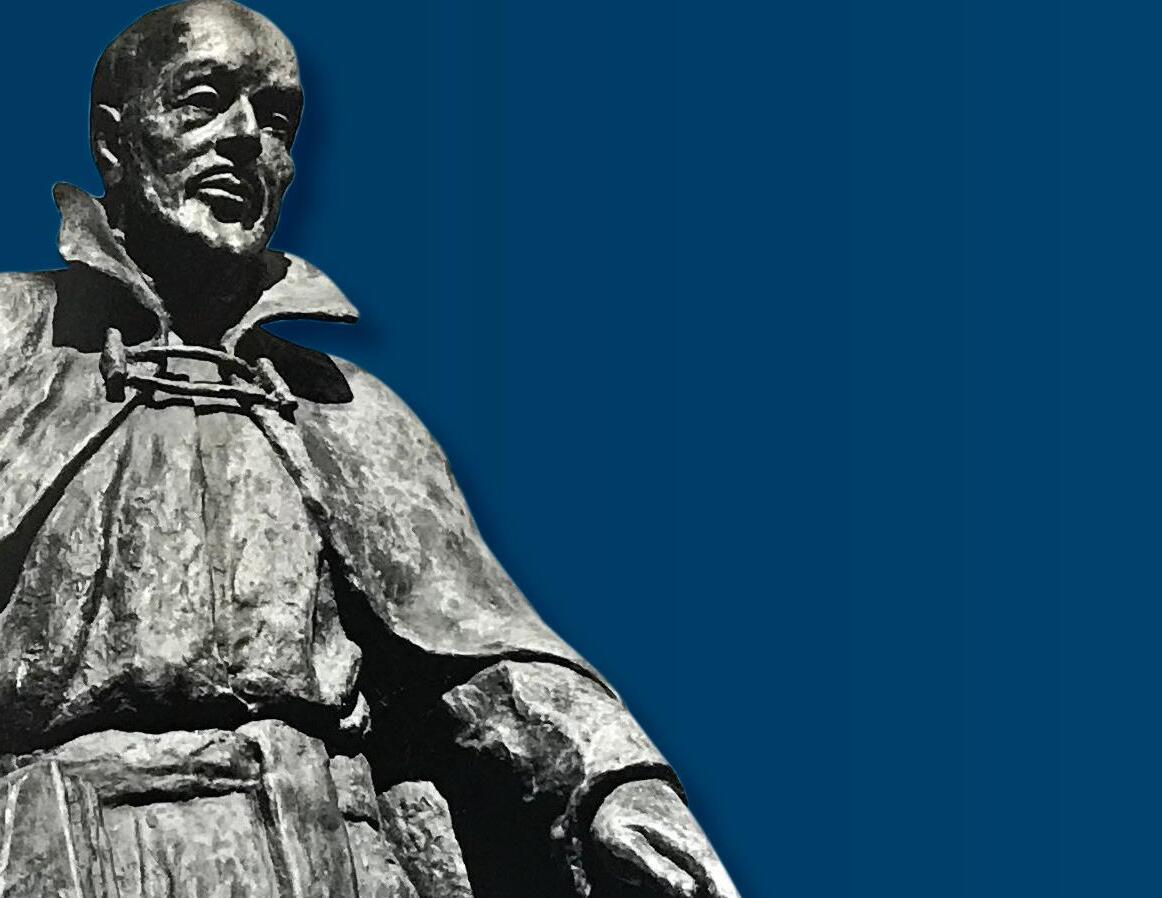
Much of the artwork around SLUH can be traced back, one way or another, to Fr. William Doyle, S.J., who taught at SLUH from 1958 to 1981 and founded the school’s Fine


When Fr. Doyle first came to SLUH, he taught English and moderated the Poster Club. Fr. Doyle soon initiated the fine arts program at the school with a Fundamentals of Art course in 1963. He also grew as an artist himself, taking classes at Washington University and setting up studio on the third floor of the Backer Memorial. He sculpted a bust of Janet Knobbe that still sits in the Robinson Library. His most well-known creation, however, is the statue of St. Ignatius that presides over the entrance to the school.
Much of the other artwork that graces the halls of SLUH has been donated by Tim Drone ’68, who credits Fr. Doyle with inspiring his love of art. Drone, a student in Fr. Doyle’s drawing class, had broken his dominant right arm in football. Fr. Doyle encouraged him to draw autumn leaves with his left hand, producing a surprisingly pleasing result.
INTRODUCTION TO PART TWO TO GOD, WITH GRATITUDE | 68
Fr. William Doyle, S.J., created the statue of St. Ignatius that now presides over the southern entrance to the school.
“Drone, you have more art in your left hand than you have football in your right hand,” Fr. Doyle said. “I was crushed,” recalled Drone, “because here I thought I was this mighty big jock and what he was saying was football wasn’t the end all and be all to everything, that you needed to be artful. So I was artful with my left hand and played football with my right hand.”
With his artful donations, all by Missouri artists, Drone hopes to inspire current students as Fr. Doyle inspired him.
Fr. William Doyle founded the school’s art program and created a number of iconic works that grace the Backer Memorial, including the statue of St. Ignatius.

The Hoodlum Priest
Fr. Charles W. Clark, S.J., may be the only SLUH teacher ever to inspire a major motion picture. His lasting legacy, however, is one of mercy for those who have been imprisoned.
A teacher and assistant principal at SLUH in the 1930s, Fr. Clark later began working closely with former convicts in the community— even giving himself the nickname “Dismas” after the “Good Thief” who was crucified alongside Jesus. The St. Louis Globe-Democrat called him “The Hoodlum Priest. ”
That nickname would become the title of a film inspired by Fr. Clark’s life. Filmed largely in St. Louis, The Hoodlum Priest (1961) includes an early scene at the Backer Memorial. Leading man Don Murray (as Fr. Clark) exits a bus on Oakland Avenue, enters the school building at the front door, then confers with a priest in the foyer. The two men come out the central doors onto the sidewalk near the upper field, which bustles with students, as the older priest attempts to get Fr. Clark to pay more attention to his work with students.

As the story unfolds, Fr. Clark never returns to the school but instead devotes himself to Billy Lee Jackson, a petty thief recently released from the penitentiary in Jefferson City. Unfortunately, Jackson ends up in the electric chair, but the film ends on a positive, real-life note: “On May 16, 1959, out of deep despair a new hope was born with the opening of Dismas House.”
With the help of Morris Shenker, a Jewish criminal lawyer who had met Fr. Clark at Saint Louis University, “The Hoodlum Priest” did indeed found the first halfway house in the United States. At the time of Fr. Clark’s death of a heart ailment in 1963, more than two thousand

convicts had passed through the facility, and fewer than 5 percent of them had returned to prison.
Today, Dismas House, still in operation on Cote Brilliante Avenue, is one of 250 federally operated halfway houses that treat formerly imprisoned people with dignity and mercy and, like Fr. Clark, seek to help them to build productive lives.

TO GOD, WITH GRATITUDE | 200 YEARS OF SLUH 70
1961
Actor Don Murray, who portrayed Fr. Charles W. Clark, S.J., in The Hoodlum Priest, takes some time during filming to interact with students.

Transformative Presidents Jesuit Legacy
As the composition of the faculty gradually shifted from Jesuit to lay teachers in the latter half of the twentieth century, Jesuit leadership at the top oversaw the transformation of the school’s physical plant through energetic fundraising efforts and visionary planning.
Fr. Richard Bailey, S.J., president of SLUH from 1968 to 1973, instituted the Cashbah auction, one of the longest-running and most visible fundraising efforts at SLUH. A massive undertaking that involves efforts from nearly every sector of the school and a wide variety of stakeholders, Cashbah has grown tremendously as both a celebration of SLUH and as a means of raising money for scholarship opportunities. The 1971 Cashbah netted the school almost $23,000. By 1990, the net contribution to SLUH from Cashbah was more than $200,000. Now the auction typically raises more than $1 million.
Serving SLUH for thirty years in an amazing variety of capacities, including teacher, assistant principal, principal, president, and Jesuit superior,


Fr. Bailey loved to acquire antiques for sale at Cashbah, and he famously stripped and refinished many of the pieces himself. In addition, under Fr. Bailey, major improvements were made to the school’s physical plant: a new library, language labs, and renovated, expanded locker rooms.
Fr. Tom Cummings, S.J., ’56, was only 39 when he became president of SLUH in the fall of 1977. Fr. Cummings instigated the “Triple E” (Enrichment, Endowment, and Expansion) fundraising campaign to renew and beautify SLUH’s campus. The campaign’s most visible result was the completion of the football stadium. The stadium had been a dream of the school’s since the 1956 razing of Walsh Stadium, a facility owned by the university and located near the new football stadium site. The new stadium opened on September 5, 1980, with a gala weekend inspired by Fr. Cummings’s exuberant spirit. The campaign also transformed the school’s upper campus, including Alumni Park. SLUH expanded its footprint, acquiring eleven houses in the surrounding neighborhood. Finally, the chapel underwent renovation, with classrooms and office spaces updated as well.

The football stadium was the most visible outcome of the “Triple E” fundraising campaign spearheaded by President Tom Cummings, S.J.
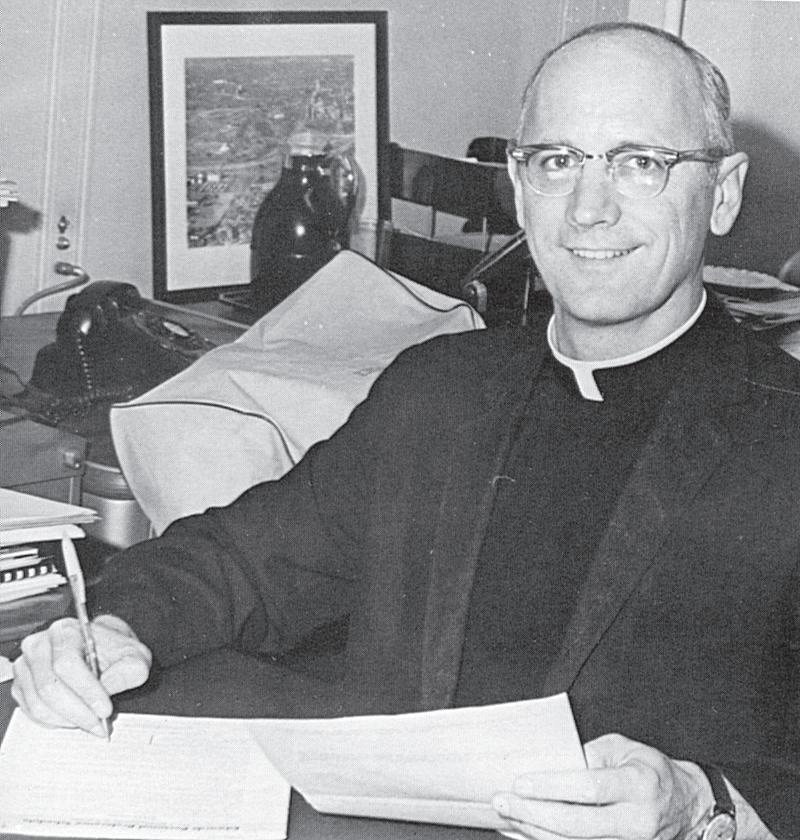
TO GOD, WITH GRATITUDE | 200 YEARS OF SLUH 72
Fr. Rich Bailey created Cashbah during a thirtyyear career at SLUH. During those years he served as teacher, assistant principal, principal, president, and Jesuit superior.
The interior of the main school building got another major update in the mid-1990s under the presidency of Fr. Robert Costello, S.J., ’47. Under Fr. Costello’s watch, all classrooms were remodeled, their opaque glass block walls replaced with windows. The Jesuit residence was transformed into classroom and office space. Most dramatically, a new performing arts wing was completed, including a state-of-the-art theater.
The tenure of Fr. Paul Sheridan, S.J., as president of SLUH saw the implementation of the ambitious Vision 2000 plan, at that time the most successful campaign in the school’s history. In addition to reinvigorating the school’s focus on academics, the most notable of the changes that resulted from the plan were:



✞ Doubling the footprint of the campus
✞ Danis Field House, a 47,551-square-foot facility that became the new home of the basketball, volleyball, and wrestling programs
✞ A new soccer and track stadium with artificial turf and a regulation-size track, and artificial turf for the existing football field
✞ Sheridan Stadium, a new home field for the SLUH baseball program
✞ Renovation of the Backer Gymnasium into the Si Commons, a new student cafeteria and meeting space capable of holding the entire student body for all-school Masses
✞ A shared entrance boulevard and parking lot with the Science Center, leading to a turnaround where students can be dropped off at school
✞ New technology for classrooms and teachers, including audio/visual setups, laptops, and iPads



Also considered part of Vision 2000 were previous increases in the number of teachers (and consequent reductions in class size) as well as improved retirement and health benefits for teachers.
With their visionary work, these Jesuit presidents brilliantly continued a tradition that had begun in the 1820s and sustained the institution through numerous challenges. Generations of SLUH students are grateful for their leadership and for the generous benefactors who were inspired by that leadership.
PART TWO 73
The Vision 2000 plan, overseen by President Paul Sheridan, S.J., led to major additions to the school’s physical plant.
During the relatively short tenure of President Robert Costello, S.J. (left), the interior of the original Backer Memorial building underwent a dramatic updating, including the total renovation of the Jesuit residence into classrooms and offices. Gerry Sheahan, S.J. (right)
Charlie Conway and Richard Keefe Teachers in Time
As the number of Jesuits at SLUH began to shrink over the second half of the twentieth century, lay teachers, primarily men, replaced them as teachers and administrators. Although Jesuits and, especially, Jesuit scholastics tended to have shorter tenures, the lay teachers often built careers of twenty, thirty, and even forty years. Some of these men made their marks in the realm of athletics or the arts, but others focused on academics and student support. Two such figures are Charlie Conway and Richard Keefe. Both worked at SLUH for over forty years.
After graduating in 1941, Conway returned to SLUH four years later to teach freshman algebra and science. Over a forty-six-year career, he headed both the math and science departments, taught theology, and was the Assistant Principal for Student Welfare and Discipline.

One of his colleagues and former students was a man named Steve Aylward. Upon Conway’s death in 1992, Aylward said, “He represented the best of what SLUH has to offer in terms of academic accomplishments, teaching, and a commitment to spirituality.” Fr. Marty Hagan, S.J., echoed that sentiment, saying, “There was no more dedicated teacher to students.”

Likewise, over a forty-three-year career at SLUH, Richard Keefe served in a wide variety of capacities and, in his work with students, embodied the Ignatian principle of cura personalis, care for the individual.
Keefe was hired in 1967 as part of the expansion of the French program, but he also took on other roles in order to fill needs around the school: coaching “B” soccer and moderating the Dauphin yearbook. His way of interacting with students impressed the leadership of the


Throughout his forty-six-year SLUH career, Charlie Conway felt drawn to the priesthood but never completed the ordination process. In the end, his vocation was his work as a high school teacher and administrator.
Though Richard Keefe was well known for his work as a teacher and administrator, some of his work took place behind the scenes. For example, he coached generations of award-winning students on their speeches for graduation.
TO GOD, WITH GRATITUDE | 200 YEARS OF SLUH 74
school; in 1973 he became Dean of Students, in 1977 Assistant Principal for Academics.
Keefe’s office became a sanctuary for students, those who were having academic difficulties or those who just wanted to talk. Keefe kept an eye out for students who were going through hard times and supported them through small acts of kindness.
After twenty-two years as an administrator, Keefe did something unusual: he went back to the classroom, teaching French again and helping with Senior Project and the yearbook. He retired in 2010.
“Mr. Keefe was part of SLUH for me, and by that I mean he created an environment where I was comfortable with learning and was comfortable with struggle also,” said one of Keefe’s students.
In their long years of service and their unflagging devotion to the students and the academic life of the school, Conway and Keefe are representative of the many lay teachers who have devoted their lives to SLUH.
This tree stands in SLUH’s Alumni Park as a memorial to Charlie Conway’s decades of service. It was planted and dedicated shortly before his death in 1992.


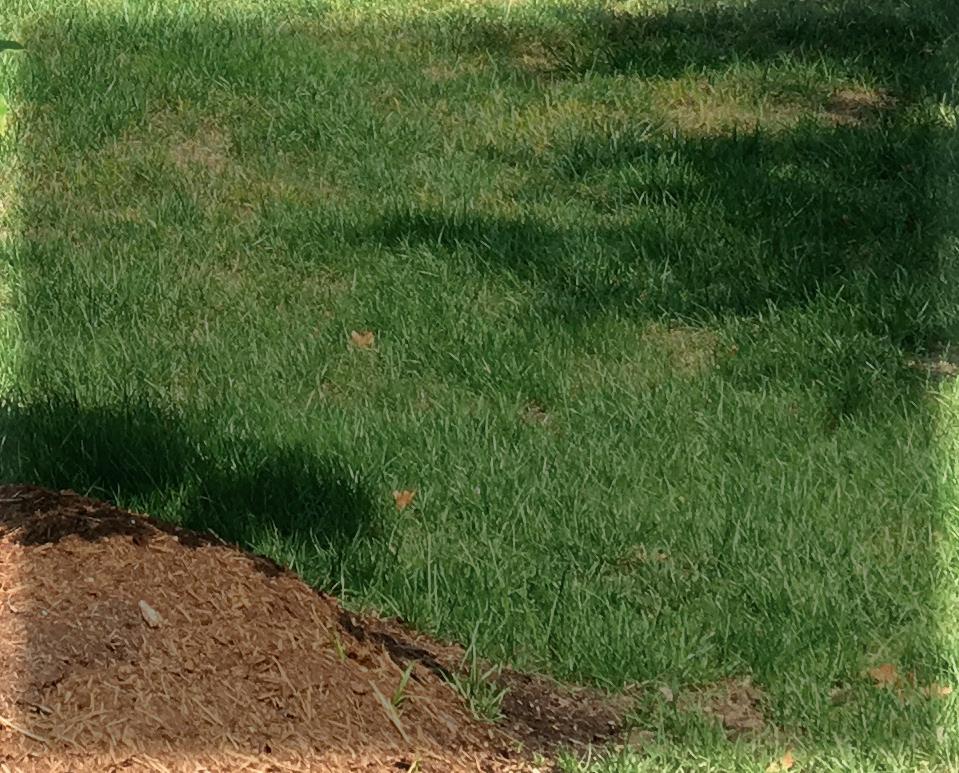

Female Students

Anna Backer, though she had a profound impact on the modern history of SLUH, is by no means the only woman to have played an important role in the life of the school. Indeed, since the school consolidated and relocated to Oakland Avenue, females have participated in the SLUH community in almost every capacity—including as students.
In the 1920s and ’30s, nuns who worked at St. Anthony’s and St. Mary’s hospitals took classes at SLUH, and some even received diplomas. More recently, in 1993–94, SLUH business manager Patricia Cleeland, a twenty-five-year-old certified public accountant, took Tom Becvar’s Calculus AB class to fulfill the continuing education requirements of the Missouri Licensing Board. Cleeland later became an ordained Presbyterian minister as well as the mother of Sawyer Cleeland ’18—perhaps the only SLUH student ever to have both of his parents attend classes at the school. (His father is Chris Cleeland ’86.)

Between 1991 and 2004, SLUH welcomed students from Nerinx Hall High School to take a co-ed class called Literature of Men and Women. The four-week summer course met for two weeks at each school and was about evenly divided between boys and girls. Finally, through an exchange program that began in 1997, a number of female students from China’s Nanjing Foreign Language School have attended SLUH and distinguished themselves academically, excelling in math competitions and publishing work in the school’s literary magazine.

Today, more than twenty women teach at SLUH, and a similar number serve in other important roles around the school. The women of SLUH coach sports, head departments, organize service projects, lead admissions and fundraising efforts, manage attendance data, maintain the school facilities, and more. By offering models of strong, capable women, they help form men for others in a powerful way.
In the early Backer years, women worked at SLUH as receptionists, secretaries, bursars, and registrars. Women have also traditionally staffed SLUH’s library, most notably longtime (1958–83) librarian Irene Coyle.
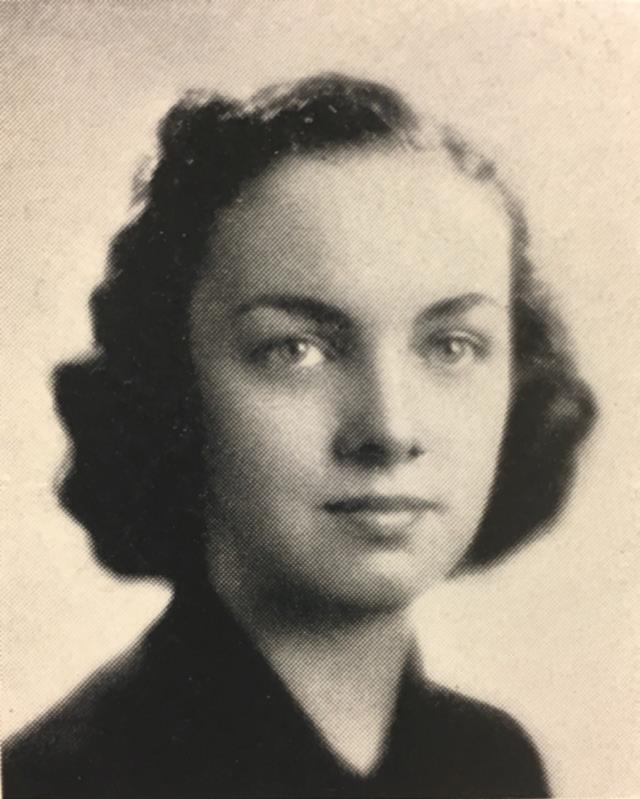

TO GOD, WITH GRATITUDE | 200 YEARS OF SLUH 76
Yining Chen, an exchange student from Nanjing Foreign Language School in China, experiences a traditional SLUH freshman moment: washing dishes at Cashbah.
Irene Coyle worked as the SLUH librarian for twenty-five years.
Librarian Rose Gallagher, pictured in the 1940 yearbook.
Women at SLUH







In 1968, however, Eilene Martini became the first female teacher at SLUH. Martini was teaching at Indiana University and pursuing a master’s degree when she interviewed with President Fr. Bailey for a position as a French instructor. After her interview she learned that SLUH was an all-boys Catholic high school and assumed she did not have a chance to be hired. Fr. Bailey did offer her a job, however, and she accepted. By 1970, however, the SLUH teaching staff was again entirely male, a situation that remained unchanged until the 1974–75 school year when Sr. M. Cathlin Casey, B.V.M., joined the faculty. Students loved Sr. Casey, but after only



two years at SLUH illness forced her to move closer to her order’s convent in Chicago. She died in 1979 of ALS. The 1979 Dauphin yearbook was dedicated in her honor “with deep appreciation for her lifelong devotion to teaching, and for her commitment to St. Louis University High School.”
That same year, another beloved female teacher began a much lengthier SLUH career: Mary Lee McConaghy. “Magistra,” as generations of students and even some colleagues affectionately called her, taught freshmen and juniors for thirty years, moderated the Latin Club (think togas), and coached many successful teams in national Latin competitions. She brought Classical Greek back to the SLUH curriculum in 1991.
Sr. Cathlin M. Casey, B.V.M., came to SLUH in 1974, at a time when the teaching faculty was again entirely male. She was beloved by colleagues and students, but her English teaching career was cut short by ALS, of which she died in 1979.
















McConaghy retired in 2009 from fulltime teaching but continued teaching Greek. An annual award was established in her name honoring a senior who, like her, displayed the “invaluable qualities of integrity, dedication, and enthusiasm.”
One of the most prominent positions a woman has yet attained at SLUH is that of principal. Dr. Mary Schenkenberg had taught English for twenty-five years and served as principal of Nerinx Hall High
PART TWO 77
Eilene Martini, a French teacher hired by Fr. Rich Bailey, S.J., was the first woman to teach in the classroom at SLUH.
School for ten when she was chosen in 2001 to succeed Dr. Robert Bannister as the school’s third lay principal.
Fr. Jeff Harrison, S.J., spoke enthusiastically about this new development. “Students are all going to work with women” in their lives, he noted. “Now it’s going to start here.”
At the conclusion of the 2007–2008 school year, Dr. Schenkenberg retired, having generously given of her talents and perspective for six years. The school had thrived during her tenure. As the President’s Report noted in a tribute to Dr. Schenkenberg, “Thanks



to her leadership, that jewel shines even brighter today.”
The jewel of SLUH continues to shine brightly thanks in part to the efforts of another woman who has brought her leadership abilities to SLUH: Melissa Jones, Vice President for Institutional Advancement. Hired in 2012, Jones is currently spearheading the Go Forth campaign, with a goal of raising $70 million to fund innovations in the school’s program and campus, and to ensure access through generous financial aid.
TO GOD, WITH GRATITUDE | 200 YEARS OF SLUH 78
Melissa Jones, Vice President for Institutional Advancement, has been a leader in the $70 million Go Forth campaign.
Dr. Mary Lee McConaghy, known to her students as “Magistra,” taught Latin for thirty years and brought Classical Greek back to the SLUH curriculum.
Dr. Mary Schenkenberg was the first woman to serve as principal of SLUH.
As the Vietnam War ramped up in the late 1960s, SLUH students grappled with the prospect of fighting in the conflict.
An extensive article in the October 1968 Prep News tells the story of Dennis Cummins ’65, a conscientious objector who faced prison time for his refusal to be conscripted into the Army. Cummins got involved with anti-draft activities at Georgetown University. His CO status was approved by the Webster Groves draft board but rejected by the state and national boards. Cummins was sentenced to five years in prison and a $10,000 fine, though his conviction was eventually reversed on appeal.
In April of that same school year, the Prep News featured an article about Terry Grant ’66, who had entered the Army’s Officer Candidate School the year after he graduated from SLUH. Grant was sent to Vietnam as a platoon leader in November of 1968 and was seriously wounded a little over a month later, about ninety-five miles northwest of Saigon.
Grant gave his impressions of the complexities of the situation. In his opinion, most Americans were unaware of what was happening. “It’s so far away that people don’t realize there is a war going on, and we’ll have that war until people start realizing,” Grant said. “I hope people realize soon that there are GIs getting messed up and say, ‘Let’s do something.’”
A number of Jesuit scholastics did do something in June 1971, when twenty-seven of them rejected their clerical exemptions and returned or destroyed their Selective Service cards. The protesters included Fr. W. Joseph Kramer, S.J., who taught English at SLUH.
In a survey conducted at SLUH in 1971, 95 percent of SLUH students said that they would apply for a student deferment after graduating from high school. In September of that year, however, the Senate abolished the undergraduate deferment.





A Prep News piece in December warned that SLUH students who thought they would never have to confront the draft would soon face a momentous decision: “The same person who is playing on the football field or the auditorium stage today has an increased chance of finding himself fighting on the battlefield in Vietnam within eighteen months.”
The Vietnam War 1971
Young teachers at SLUH faced the draft as well. For example, chemistry teacher Charlie Busenhart’s Selective Service classification was changed from 2A to 1A during the 1968 school year. Though SLUH President Fr. Bailey was able to delay his induction until the end of the term, Busenhart was drafted into the Marines. He trained for combat but ended up remaining stateside, learning to be a radio operator. Then, while waiting to be sent to Vietnam, he became a legal clerk. He returned to SLUH in the fall of 1971.
Nine SLUH alumni did not return, however, having made the ultimate sacrifice while serving in Vietnam. A plaque in the Fr. Hagan Rec Room gratefully honors them.
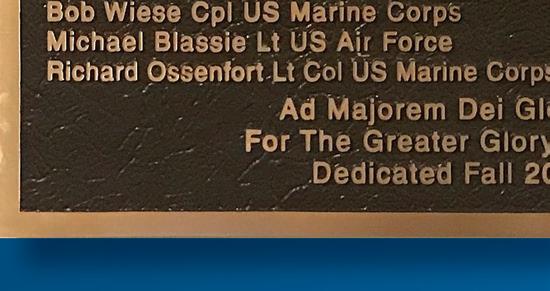
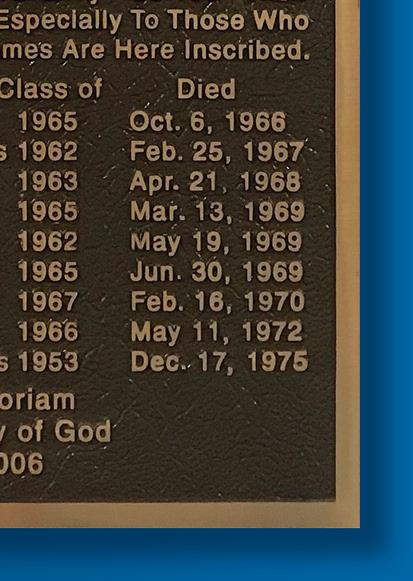


PART TWO 79
This plaque hangs in the Fr. Hagan Rec Room.
Senior Project and Weekly Newspaper Innovations of the ’70s


The 1970s were a turbulent decade in America, with Watergate, Vietnam, the emptying out of the cities, widespread drug use among youth, and economic woes. As these and other events prompted national soul-searching, students and faculty created two institutions that continue to thrive at SLUH today. While one of these, the Senior Project, turns students’ attention outside the world of SLUH, encouraging empathy with the needy, the other, the weekly Prep News , turns that attention inward, encouraging greater self-awareness and reflection.
The month-long Senior Project, as it is known, began as an idea with the senior class of 1970, who wished to use their final quarter to work on projects of their own choosing, perhaps as explorations of future careers. That idea never became a reality, but the next year the seniors and the faculty adapted it into a new concept, one focused more on service and social awareness. Over time, the project became more and more formalized and orderly. At one time, it was coordinated by the National Honor Society, but eventually it found its natural home as the bailiwick of Campus Ministry.
TO GOD, WITH GRATITUDE | 200 YEARS OF SLUH 80
Fr. Dave Wayne, S.J., helped make the Prep News into a weekly high school newspaper, a rarity among high school publications.
The Prep News, originally called the University Prep News, was founded in 1937 and published around eleven issues annually until it became a weekly paper in the 1970s. Fr. John J. Divine, S.J., (far right) was an early moderator of the paper.

After Christmas break, instead of returning immediately for their final semester of classes, seniors work at sites around the region and, indeed, the world, serving the needy and working alongside those who serve them throughout the year. Most seniors “on project” work in schools, hospitals, homeless shelters, nursing homes, and other social service agencies in the metro area, but some travel further afield, to Honduras, Russia, Africa, and beyond. Students keep journals of their experiences on project and use them to discuss their projects in theology classes. Seniors also have an opportunity to speak about their experiences to groups of underclassmen.
As seniors began stretching themselves in new situations around the larger St. Louis community through Senior Project, they soon began stretching themselves within the SLUH community by making the Prep News into something exceedingly rare: a weekly high school newspaper. Originally founded in 1937 as the University Prep News, the school newspaper published about eleven issues annually until the late 1960s and early ’70s. In 1975, however, English teacher James Raterman and Editor Tom Santel ’76 (who would later go on to head SLUH’s board of trustees) established the modern-day Prep News, which covers SLUH events on a weekly basis.

Occasionally weighing in with editorials about school policies and administrative decisions, as well as offering a venue for members of the SLUH community to express their own opinions, the paper is at times a site of controversy. Guiding its mission, however, is an idealistic motto, adopted in 1991: “If nothing else, value the truth.”

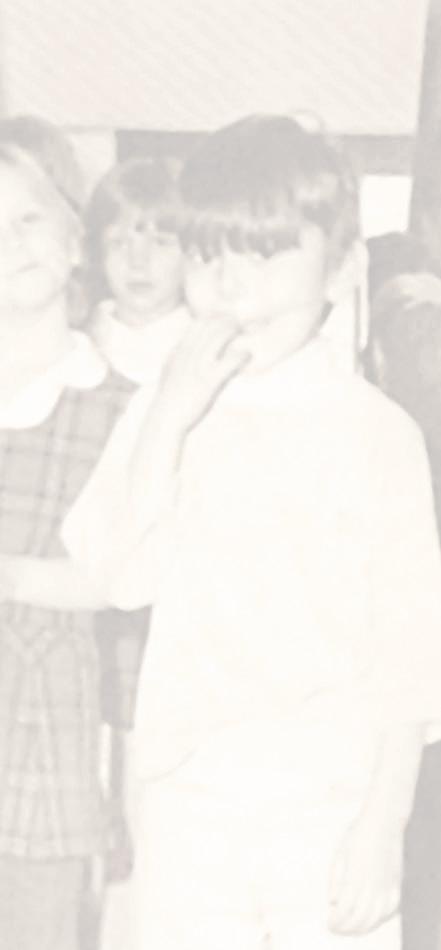


In 1996, after twenty-three years, Raterman stepped down as moderator of the paper. Steve Missey ’88, a fellow English teacher, took up the role in 2000 and built on Raterman’s foundation. After years of in-house publication on Risograph machines, the paper returned to newsprint in 2008. Delivered free to students in homeroom on Friday mornings, the paper is also available online and posts updates on social media websites.


 Two generations of the Prep News: pictured above are Tom Santel ’76 and his son Jim Santel ’08, both editors in chief of the newspaper, along with their respective moderators, Jim Raterman and Steve Missey ’88.
Senior Project has become an integral part of the SLUH student’s experience.
Created at the instigation of SLUH students in the classes of 1970 and 1971, the Senior Project constitutes a month-long experience of service.
Two generations of the Prep News: pictured above are Tom Santel ’76 and his son Jim Santel ’08, both editors in chief of the newspaper, along with their respective moderators, Jim Raterman and Steve Missey ’88.
Senior Project has become an integral part of the SLUH student’s experience.
Created at the instigation of SLUH students in the classes of 1970 and 1971, the Senior Project constitutes a month-long experience of service.
English teacher Jim Raterman moderated the Prep News for twenty-three years, institutionalizing the weekly paper as a consistent source of information for the SLUH community.

The Robinson Library 1972
The Robinson Library stands as a monument to SLUH’s commitment to the City of St. Louis, as well as Dr. James Robinson’s commitment to SLUH.
A special issue of the Prep News in April 1972 commemorated the construction of a new SLUH library. “Quite modish in appearance and very fetching,” it replaced the old library located on the second floor in the northwest corridor of the school building. This major improvement to the school’s physical plant confirmed SLUH’s decision to remain in the City of St. Louis as many other institutions moved to the suburbs.
The library’s construction was financed by contributions from alumni, the Fathers and Mothers Clubs, the Student Council, the proceeds from two Cashbahs, and the Backer Endowment.
In 1983, the library was formally named in honor of Dr. James Robinson ’32, a longtime SLUH faculty member and school benefactor. Robinson taught history at his alma mater for forty-two years. He was a pioneer in bringing the SLU 1818 college credit program to the Social Studies Department at SLUH, starting in 1962. Robinson was also a baseball scout for the St. Louis Cardinals and Chicago White Sox, and he coached baseball at SLUH for many years.

In November 1981, Robinson won $124,019 in the Illinois lottery. He decided to donate the majority of the money to SLUH. Robinson had long been saving money to fulfill his dream of establishing a scholarship at SLUH

in his mother’s name. Combining his lottery winnings with his savings, he established five scholarships.
The next year, not long after Robinson’s windfall, he did not appear at school one morning. He had not missed a day of work in his career, save for four years spent serving in World War II. One of Robinson’s colleagues traveled to his home and found that he had died. In his will, Robinson left his estate to various charities, with a large portion going to SLUH. SLUH President Fr. Cummings asked alumni to match this bequest, creating a teacher endowment fund to underwrite sabbaticals and other professional-development activities.
Fr. Cummings, though grateful for Robinson’s generosity, noted that “his major investment in the school was to educate four decades of students. He never missed an alumni reunion. That’s why I’ll miss him the most. He was a living embodiment of the tradition and history of the school.”
TO GOD, WITH GRATITUDE | 200 YEARS OF SLUH 84
Dr. James Robinson ’32 taught and coached at SLUH for forty-two years and was a generous benefactor. The SLUH library was named after him shortly after his death.
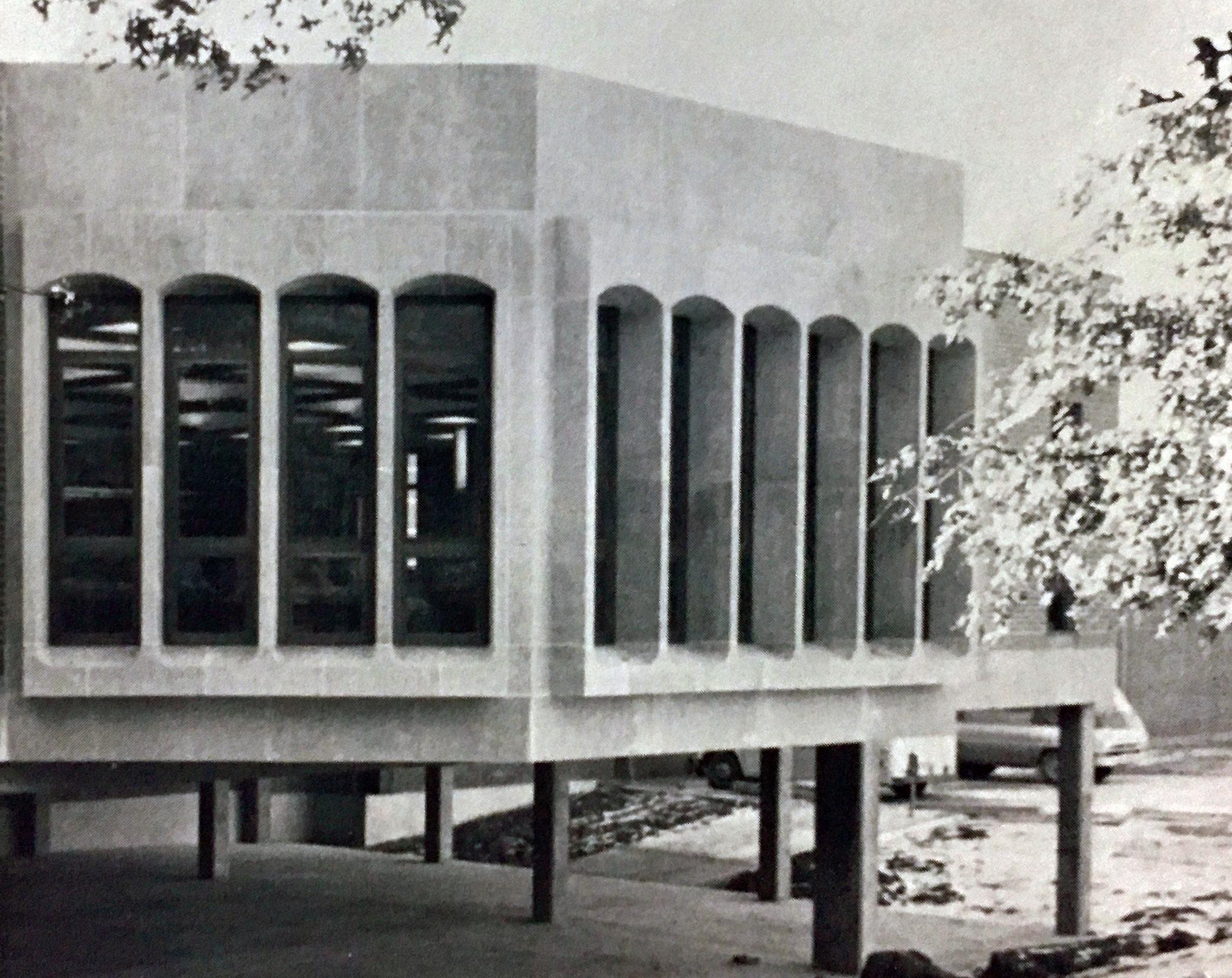
in 1972
ten years later, SLUH’s library was called “quite modish” and “very fetching” in a Prep News issue devoted to it.
Completed
and named after Dr. James Robinson about
Sisyphus 1979


Various literary magazines have showcased the work of SLUH students over the years. The Ludovican , first published in 1914 and running for more than ten years, combined aspects of the literary magazine and school newspaper. The Prep News also featured literary productions from students throughout its first couple of decades. In the early 1960s, a magazine called Tangents published student works of poetry and prose.
Beloved English teacher Bill Noonan resurrected this tradition in 1976, moderating a student literary magazine whose title changed with each issue, giving the SLUH community Sojourner , lota , and Interrobang , among others. Noonan’s colleague Bill George took the helm in 1979, renaming the magazine with a title that would stick: Sisyphus .

A few years later the magazine gained a moderator who would stick as well: Rich Moran ’66. Over a span of thirty years, Moran has built the




magazine, published twice yearly, into an elegant showcase for the creative work of students and faculty.
for the ancient Greeks. Twentieth-century French philosopher Albert Camus saw
labors.
Condemned for all eternity to roll a stone up a hill only to have it roll back down again, the mythical Sisyphus was a classic emblem of punitive, redundant toil for the ancient Greeks. Twentieth-century French philosopher Albert Camus saw Sisyphus in a more positive light, as a model for humanity’s struggle for dignity despite the apparent futility of earthly labors. “One must imagine Sisyphus happy,” Camus wrote.
Panels of student editors evaluate submissions. The editorial staff then chooses the contents of the magazine, works with authors and artists to prepare the pieces for publication, designs and lays out the magazine, and sells it around the school for a nominal fee of twenty-five cents, just enough to ensure that it gets into the hands of those who really want it.
the around of those who really want it.
TO GOD, WITH GRATITUDE | 200 YEARS OF SLUH 86
Rich Moran ’66, at far left, with the Sisyphus staff of 1990–91. Moran moderated the magazine for over thirty years.
First Lay Principal 1983




Until the selection of Paul Owens in 1983, every SLUH head principal had been a Jesuit.




In fact, two Jesuits were among the group of thirty applicants for the position the year Owens was hired, and President Fr. Cummings admitted that at first he favored maintaining the unbroken line of Jesuit leadership.


Ultimately, however, Owens was chosen with confidence because of his experience in secondary education and his familiarity with the school and its students. Owens, a St. Louis native, had begun working at SLUH in 1972. He taught both physical education and math and coached a variety of sports. In 1979 he became Assistant Principal for Student Welfare and Discipline.
Owens served as principal for twelve years, stepping down in 1995. When Owens was hired, his predecessor, Leo P. Dressel, S.J., ’64, spoke hopefully about the prospect of lay leadership. “I expect an extremely smooth transition. I think there will be some surprises and adjustment; I don’t expect there will be any resistance,” he said, adding, “I don’t expect to be the last Jesuit principal.” His expectation became reality when, in 2017, SLUH announced the selection of its newest principal: Fr. Ian Gibbons, S.J.

PART TWO 87
Paul Owens, SLUH’s first lay principal, served in the role from 1983 to 1995.
African American Teachers

A school that for almost three quarters of its existence did not admit African American students, SLUH has, perhaps not surprisingly, had few African American teachers. Yet the ones who have worked at SLUH have forged a distinct path for greater inclusiveness at the school.
Math teacher Henry Clark, who taught at SLUH between 1976 and 1978, was the first African American to teach in a SLUH classroom. He taught freshmen and sophomores and was known for requiring misbehaving students to do pushups in front of the class. About ten years later, Jesuit scholastics Eugene Morris ’83 and Gene Turner followed in his footsteps. Morris taught English and theology, and his biting wit and intellectual rigor endeared him to his students. Morris later went on to become a priest in the St. Louis Archdiocese, and he was named a

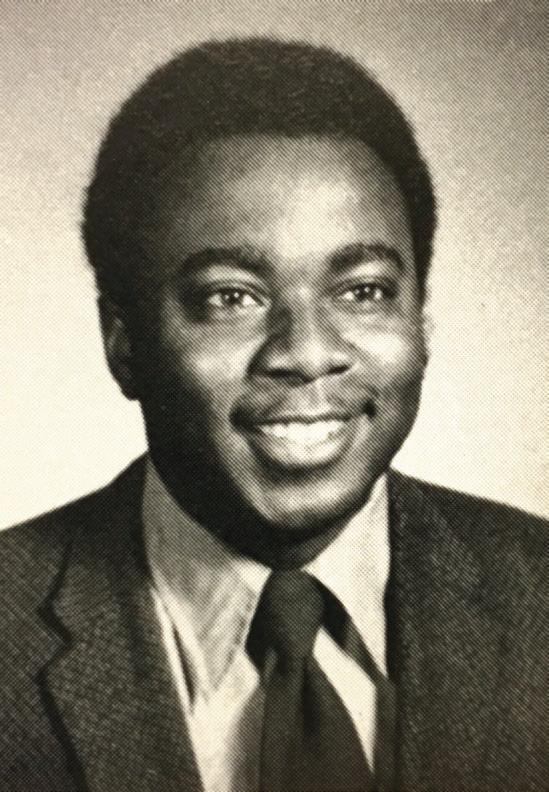
monsignor in recognition of his apostolic work.
Perhaps the most iconic African American faculty member in SLUH’s history is Eric Clark ’83. In his sixteen years at SLUH, Clark served in a variety of roles—psychology teacher, Director of Diversity, STUCO moderator, and work grant coordinator—before settling into the job he was best known for, Assistant Principal for Student Affairs. In that role, Clark mixed intimidating sternness with infectious friendliness. He could scare a freshman whose shirt was untucked but warm the hearts of the student body on a formal attire day with a trademark compliment: “You look good.”
trademark
Clark announced in April 2008 that he would be moving on to a new stage in his career in Jesuit education, working with middle schoolers at Loyola Academy in Midtown St. Louis. “I believe God felt that I was happy,” Clark said, explaining his decision to leave SLUH. “He didn’t want me to get complacent, so He, I believe, felt that I needed to stretch.”
to





As a black woman at SLUH, theology teacher Danielle Harrison was a pioneer, though she was preceded by other groundbreakers, like librarian Gertrude Watson, who worked
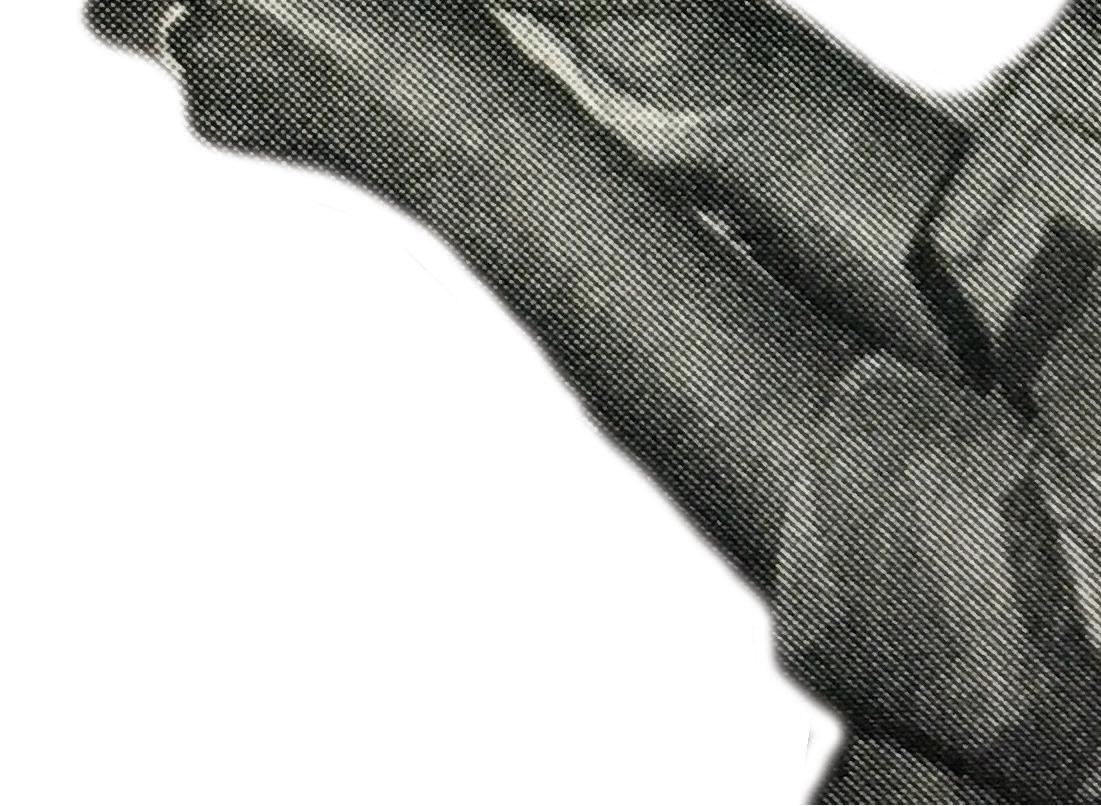



TO GOD, WITH GRATITUDE | 200 YEARS OF SLUH 88
Danielle Harrison brought expertise in Scripture to her work as a teacher of theology at SLUH.
Gertrude Watson was an assistant librarian at SLUH in the 1970s and early 1980s.
Math teacher Henry Clark was the first African American classroom teacher at SLUH.
moving education, Academy that
so Harrison groundbreakers,
at SLUH for more than fifteen years in the 1970s and ’80s; Katheleen Batts, a former manager in the Business Office; and Erma Watson, who worked in the Environmental Services Department. A “high quality Bible scholar,” in the words of her department chair, Harrison helped change the freshman theology curriculum to a more
Scripture-based approach. During her time at SLUH she also was a contributing editor to the African American Catholic Youth Bible (St. Mary’s Press). She had a powerful presence at SLUH, serving as a confidante for many students and faculty members and a student council moderator.


PART TWO 89
H. Eric Clark worked at SLUH for sixteen years in a variety of roles. As Dean of Students, he enforced the dress code strictly and was famous for telling students, “You look good!” on formal attire days.
Global Education






Originally, the school that eventually became SLUH was a global effort. First envisioned by a French bishop from Saint-Domingue (DuBourg) and shepherded along by an Italian bishop (Rosati), the school’s first Jesuit teachers and administrators were Belgian and French. In the latter part of SLUH’s second decade, the school began to make significant forays beyond American shores, providing its students with a global education and opportunities for service to the wider world community.
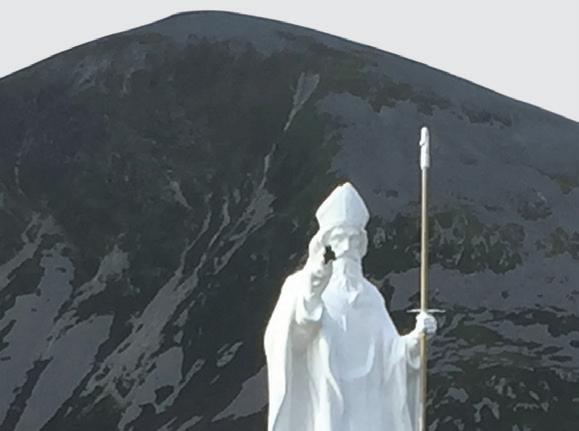
the Nanjing Foreign Language School in Nanjing, Jiangsu, China. SLUH students have studied at Moscow School 1253, whose students have also come to SLUH, through a relationship begun by Russian teacher George Morris in 1987.

Lancer Li ’17 was the first Chinese exchange student to graduate as a Jr. Bill. In 2015, he entered SLUH during his sophomore year as part of a twenty-two-year-old exchange program with Nanjing Foreign Language School, one of the top schools in China. He paved the way for other Chinese exchange students to transfer to SLUH as full-time students and graduate as Jr. Bills.


Taking part in SLUH’s modern language program, students study and travel in China and Russia. Both Chinese and Russian have been taught at SLUH since the 1960s, among the longest-running programs in the Midwest. The Chinese program was nurtured for nearly thirty years by Dr. Ching-ling Tai, who in 2006 created an endowed scholarship to fund student studies in China and has facilitated an exchange program with

Closer to home—or, at least, on this continent—in the city of Yoro, Honduras, stands the Centro San Yves, a nutrition center for children founded by women of the Jesuit parish of Santiago and supported since 1994 by the SLUH community under the guidance of Spanish teacher Charles Merriott.
The facility operates in a building whose construction and maintenance have been funded largely by donations from SLUH families and by various fundraising efforts around the school. Each

TO GOD, WITH GRATITUDE | 200 YEARS OF SLUH 90
Jr. Bills in Ireland.
January, six seniors spend a month at the center, caring for malnourished children sent there by the local hospital. Two other trips, one during spring break and one over the summer, also give students the chance to experience this unique service opportunity.
Additionally, each summer a caravan of students and teachers from SLUH can be found traveling throughout Ireland—piloting vans along treacherous narrow roads, exploring ancient tombs, walking sunset strands, and sharing pints at local pubs. English teacher William George initiated the annual trip in 1994 at the instigation of his senior Irish
Literature students, who desired a hands-on capstone for their semester-long study of the land of Yeats, Joyce, and Heaney.
Considering these global connections and others, including summer trips to France and other European cultural sites, it is clear that the boundaries of the SLUH classroom do not end at the border.
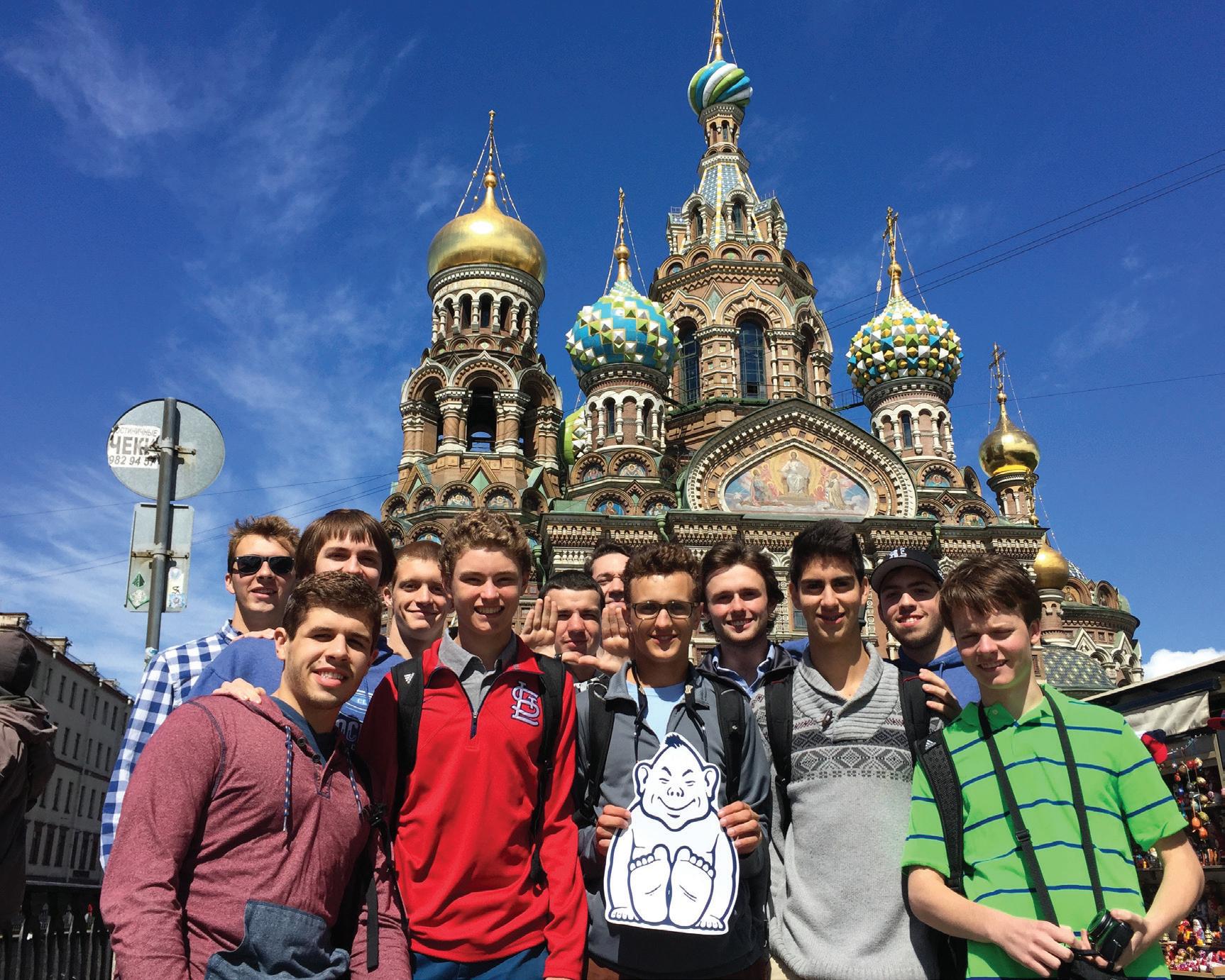



For over twenty years, Spanish teacher Charlie Merriott built SLUH’s relationship with the Centro San Yves, a nutrition center for children in Yoro, Honduras. Merriott led numerous groups of students and faculty members to spend time serving the children in the center, and he helped raise funds to build and maintain the facility.

PART TWO 91
SLUH students in Russia.
The Unknown Soldier

The Tomb of the Unknown Soldier at Arlington National Cemetery once contained the remains of a SLUH alumnus, as the nation learned in 1998.
Air Force Lieutenant Michael Blassie ’66 flew 130 missions in Vietnam before being shot down outside An Loc near the Cambodian border in May 1972. His body could not be recovered, but his family was informed of his death.
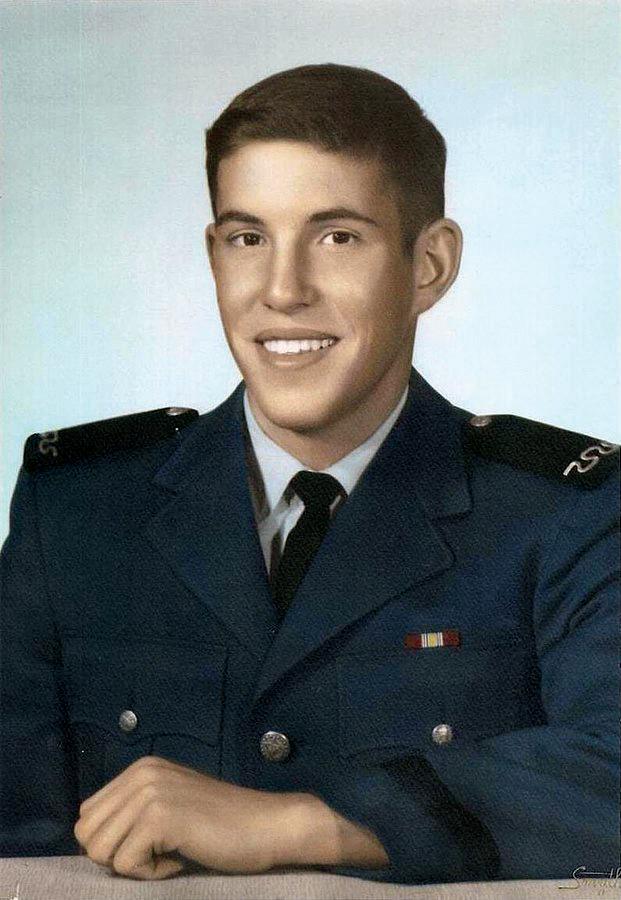
Blassie’s partial remains, wallet, and ID card were found six months later. En route to a lab in Hawaii, however, the identifying documents were lost or stolen. The identification of the remains was changed to “unknown” by a forensic technician whose methods were later called into question. Blassie’s family was told none of this information.
In the early 1980s, political pressure mounted to place a Vietnam veteran in the Tomb of the Unknown Soldier. Blassie’s remains consisted of only six bones—not enough,
typically, for burial in the tomb—but his were the only remains eligible from the Vietnam War. Although another official at the Hawaii laboratory had doubts about whether the remains were truly unidentifiable, the burial at Arlington went forward in 1984.
Ten years later, an amateur military journalist’s investigative work led to a CBS News story about Blassie. In 1998 his family asked that the remains be exhumed and DNA tested. The Defense Department honored this request and determined that the Vietnam Unknown Soldier was indeed Blassie. His casket was flown back home to St. Louis and buried at Jefferson Barracks National Cemetery. Since that time, the crypt of the Vietnam Unknown Soldier has remained empty, honoring all missing American soldiers between 1958 and 1975.
TO GOD, WITH GRATITUDE | 200 YEARS OF SLUH 92
The remains of Air Force Lieutenant Michael Blassie ’66, who died when his plane was shot down in Vietnam, were interred in the Tomb of the Unknown Soldier for fourteen years before being correctly identified.
Legendary Teacher–Coaches




In the 1980s and onward, as lay-people assumed almost all of the teaching duties at SLUH, a number of them also took on coaching roles in SLUH athletics and established traditions of excellence in a wide variety of sports.

Charlie Busenhart coached hockey for forty-one years and brought the team from its infancy to the brink of its first state championship. Incredibly, and uniquely at SLUH, Busenhart also had a storied career as a water polo coach, including nine state championships and three consecutive undefeated seasons.



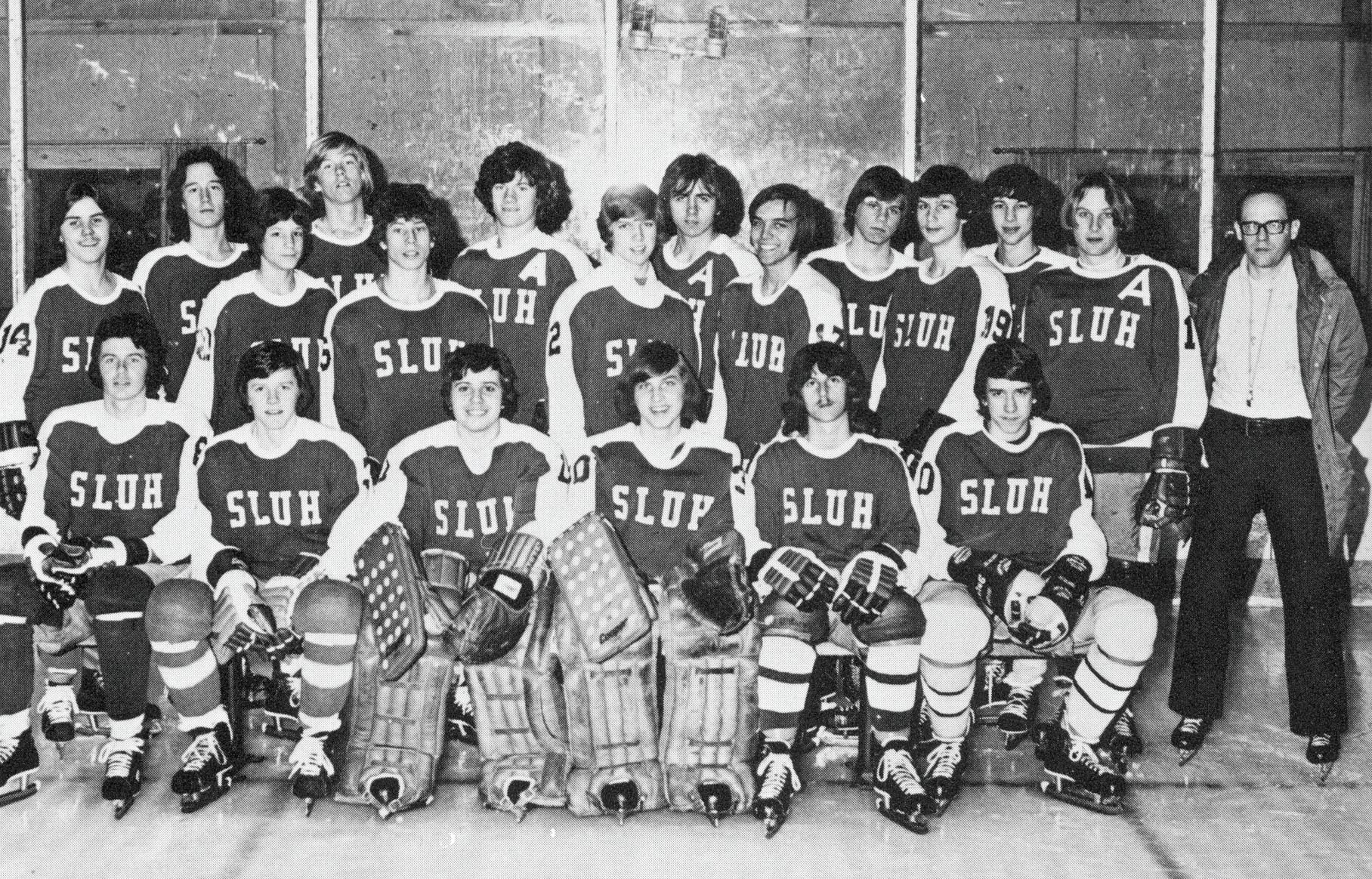
Busenhart also taught chemistry, the job for which he was hired in 1966. A Prep News article from 1969 called him “one of the best-liked persons on the faculty,” a teacher “with whom students can talk freely and intelligently.”

Computer teacher Steve Nicollerat began coaching SLUH baseball in 1979. His teams won more than 600 games. He was inducted into the Missouri High School Baseball Coaches Association Hall of Fame and instructed young players in his summer camps and hitting clinics. According to one of his longtime assistant coaches, for Nicollerat, more than winning or losing, “the most important part is getting kids to grow personally.”
In addition to coaching baseball, Nicollerat has played an important role in SLUH’s technology program, starting his career as a typing teacher but moving on to develop courses in computer fundamentals, programming, and robotics.
The winningest football coach in SLUH’s history is Gary Kornfeld, who compiled 212 wins in his twenty-nine years as head of the SLUH football program. Kornfeld led SLUH football to fourteen district titles and a trip to the state finals in 1991. He also teaches physical education and driver’s education.
Longtime athletic director and fellow coach Dick Wehner summed up the meaning of Kornfeld’s career by highlighting his role in the formation of his
Charlie Busenhart taught chemistry at SLUH for over fifty years, coaching both hockey and water polo.
INTRODUCTION TO PART TWO
players: “Not only does he look at the guys as football players; he looks at them as human beings and individuals, and he tries to help them grow from little boyhood into young manhood.”

Starting his career in 1983, James Linhares split his early time between theology and English, but he soon found his niche in the Theology Department. A key figure in the development of the Christian Life Choices class, Linhares was famous for his “Take a Stand” exercise, in which he challenged seniors to consider the implications of their beliefs about sexual morality.
The most storied part of Linhares’s career, however, is probably his twenty-five-year tenure as head coach of the cross-country team. Linhares took the SLUH harriers from a small running club to a powerhouse that won multiple state championships and involved thousands of students in a supportive community. Linhares shared stories from his coaching career and directions for building a crosscountry program in Tradition Class Pride, a book he wrote with one of his former runners, Ben Rosario ’98.
In 2008, Linhares turned his gifts in a different direction at SLUH, becoming the Assistant Principal for Mission. Working with faculty, Linhares seeks to promote the school’s Jesuit mission and connect teachers to the Ignatian tradition.
Like the cross-country program, the SLUH racquetball team, overseen for thirty-two years by choral music teacher Joe Koestner, involves a large number of student-athletes year after year. The team’s success is remarkable: between 1995 and 2016, SLUH racquetball players won state almost every year and were national champions ten times.
Coordinating and supporting all of these sports dynasties, and others, was theology teacher Dick Wehner, who served as SLUH’s athletic director for thirty-one years. He introduced the slogan “Tradition Never Graduates” to SLUH—a motto that sums up the


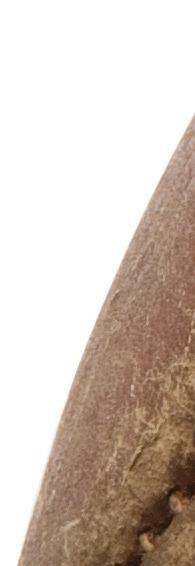



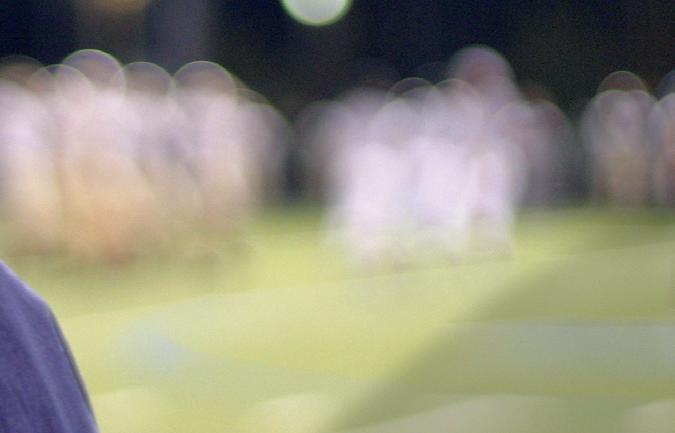
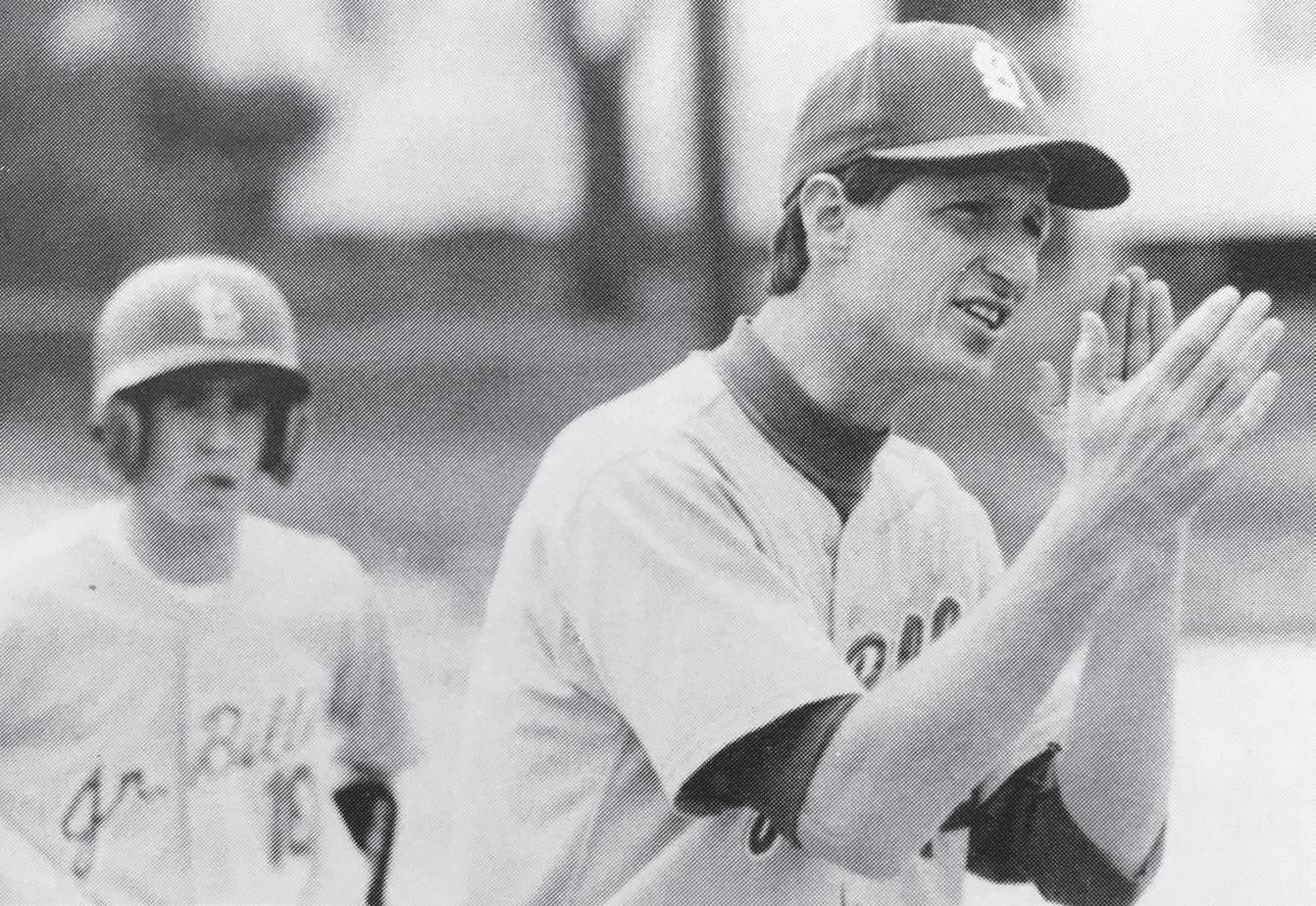

TO GOD, WITH GRATITUDE | 200 YEARS OF SLUH 94
Gary Kornfeld, the winningest football coach in the school’s history, was head coach of the SLUH varsity football team for twenty-nine years.
Steve Nicollerat, a pioneering computer teacher, coached SLUH baseball teams to more than six hundred wins.
long-term impact of the sportsmanship and attention to detail that he worked to build into SLUH sports.
Wehner was instrumental in creating the Metro Catholic Conference. Under his leadership, SLUH won thirty-five state titles and more than 140 district and sectional championships. More important to Wehner than the wins and losses, though, was the meaning of the experiences for SLUH students.
“I want a young man when he graduates from St. Louis U. High to look back on his co-curriculars, whether it was hockey, C team wrestling, football, and say, ‘I’m really glad that I did that,’” Wehner told the Prep News upon stepping down from the AD role in 2015.










In addition to his monumental contributions as athletic director, Wehner shared his booming voice and love for the music of his youth during his distinctive morning prayers. His radiating warmth and outsized presence allowed him to “wrap his arms around a whole community,” as Linhares put it. At trying moments over the years—in response to the deaths of students or colleagues—Wehner has been able to do just that.

“Mr. Wehner simply made it his job to make sure everyone felt important—whether they were an active student or not,” said one SLUH alum. “The man’s commitment to tradition is relentless.”

As SLUH enters a new era in which many coaching positions are held by individuals who are not also teachers, the traditions established by Wehner and these










teacher-coaches live on.
In addition to teaching choral music for decades at SLUH, Joe Koestner spearheaded an extensive racquetball program that won more than ten national championships.


PART TWO 95
Dick Wehner ignites the spirits of Jr. Bills during halftime in the state semifinal game against Mehlville in 1991. SLUH fought back to win the game and earn a spot in the State Championship.
Jim Linhares brought his passionate intensity and rhetorical brilliance to the theology classroom, the cross country program, and the Ignatian mission of the SLUH.
Bridging the Divide
The City of St. Louis is one of the most racially segregated metropolitan areas in the United States. SLUH’s own history has been marked by the racism that has stained our national and local history. Yet over the past fifty years, SLUH has also made a variety of special efforts to serve African Americans within its walls and within the region.
UPWARD BOUND
SLUH’s Upward Bound program, launched in 1966, has prepared middle-school boys for academic success by pushing them beyond their normal academic schedules. Begun by Fr. William Brennan, S.J., the program originally welcomed students from St. Henry’s Parish to attend classes at the Backer Memorial during the summer and on weekends during the school year. Priests, scholastics, and SLUH students taught the boys in a program specifically designed as “aid for underprivileged people of the inner city.”

Upward Bound evolved into a five-week summer program that prepared students to meet the requirements of high school work with courses in English, math, reading, and writing, as well as
training in study skills and community building activities. Students of color composed around one-third of Upward Bound classes. Today, the four-week Upward Bound summer program has two divisions, one for rising seventh graders and one for rising eighth graders. The program now features a special focus on executive function, mindset, and metacognitive skills.
SLUH commits itself financially to supporting the program at an affordable cost to all families. Further financial aid is available for those who qualify. While many Upward Bound graduates do go on to attend SLUH, the majority do not. Upward Bound helps to bring students of color into SLUH, representing an important service to the St. Louis community.
ACES
As the number of African American students attending SLUH grew during the 1970s, they began organizing to pursue their common goals and interests. According to the 1975 Dauphin yearbook, the Organization for Black Achievement (OBA) of that year was the first such organization to achieve widespread success. Moderated by librarian Gertrude Watson, the group brought celebrations of black history to the school, sponsored dances with black student groups from girls’ schools, took educational field trips, and helped orient and counsel black freshmen coping with feelings of alienation.
The OBA continued in this mold, bringing guest speakers to the school, sponsoring assemblies and fundraisers, and offering students a forum in which to connect with and support each other. During the 1992–93 school year, under newly hired moderator Eric Clark,

TO GOD, WITH GRATITUDE | 200 YEARS OF SLUH 96
The Upward Bound program at SLUH, founded in 1966, made a special outreach to African American students in the City of St. Louis.
Upward Bound now features a special focus on executive function, mindset, and metacognitive skills, and includes field trips around the St. Louis region and beyond. In 2016 the program celebrated its fiftieth anniversary.
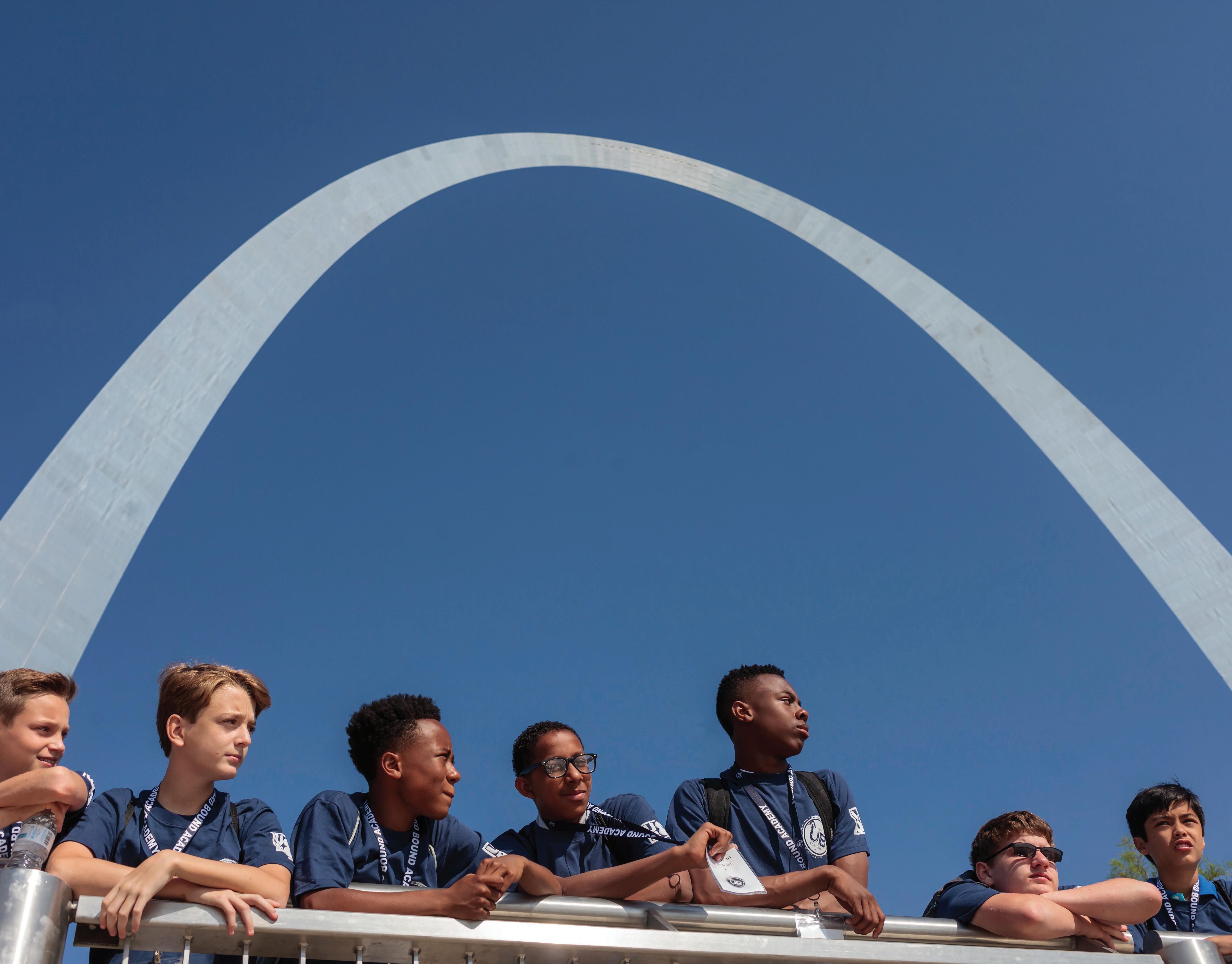
the club was renamed the Brotherhood for African American Advancement. Six years later, as part of an effort to signal its openness to participation by all SLUH students, especially other students of color, the group changed its name to the Association for Cultural Enrichment at SLUH (ACES).

ACES continues to this day with two overriding goals: to encourage discussion and awareness of diversity issues, and to make all students feel welcome at SLUH. ACES meets weekly for discussions and planning, and it sponsors a variety of events throughout the school year. Since 2013, ACES has also sponsored the Philia Retreat, offering students an opportunity to share their experiences and reflect on issues of diversity in a prayerful, spiritual context.
MINORITY ACTION PLAN
The first black student graduated from SLUH in 1950. A little more than forty years later, when the board of trustees passed a Minority Action Plan geared specifically toward the black community of St. Louis, twenty-seven of the school’s 979 students were African American. Hoping to increase that number while improving the experience of black students, President Fr. Leo Dressel, S.J., ’64, tasked a committee of faculty members, trustees, and alumni with formulating the plan.
The four-part plan laid out strategies to attract minority students, including fundraising for scholarship opportunities. It revived the Upward Bound program’s commitment to minority students and underlined the importance of the OBA. Finally, the plan called for hiring more black faculty members. One eventual result was the creation of a Director of Diversity position. In addition, the school implemented an alumni fundraising drive around the plan.
TO GOD, WITH GRATITUDE | 200 YEARS OF SLUH 98
 Members of the Association for Cultural Enrichment at SLUH (ACES) gather before leaving for their annual retreat.
Members of the Association for Cultural Enrichment at SLUH (ACES) gather before leaving for their annual retreat.
The guiding principles behind the Minority Action Plan would remain in place—sometimes as aspirations, but often in actuality. Twenty-five years later, the percentage of African American students at SLUH had more than doubled, and total minority enrollment stood at 13.4 percent. The school has a robust group of student clubs and faculty members devoted to diversity as well.








LOYOLA ACADEMY
In the fall of 1997, a committee of educators at SLUH convened to discuss the challenges facing low-income students and to explore ways of assisting these students and their families. The nativity school model emerged as one of the most compelling responses. As a result of these conversations, Loyola Academy was founded in Midtown and opened its doors to students in 1999 and gained sponsorship by the Jesuits of the Missouri Province a couple years later.
Loyola Academy is a Jesuit middle school, grades six through eight. The school serves boys who have the potential for college preparatory work but whose progress may be impeded by economic or social circumstances. Loyola is a Catholic school, but the vast majority of its students come from other religious backgrounds. The faith tradition of each boy is respected.

SLUH is proud to maintain a close relationship with Loyola, having admitted dozens of its alumni. Conversely, many SLUH alumni now work at Loyola—most notably, President Eric Clark ’83.


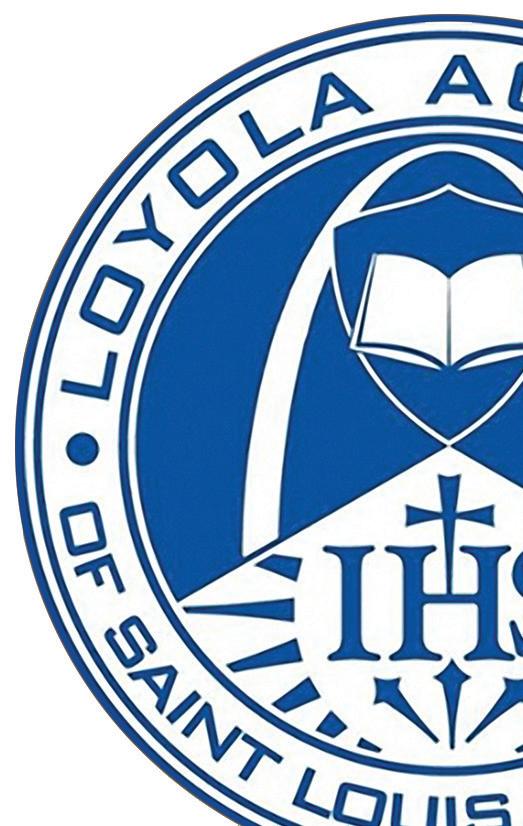
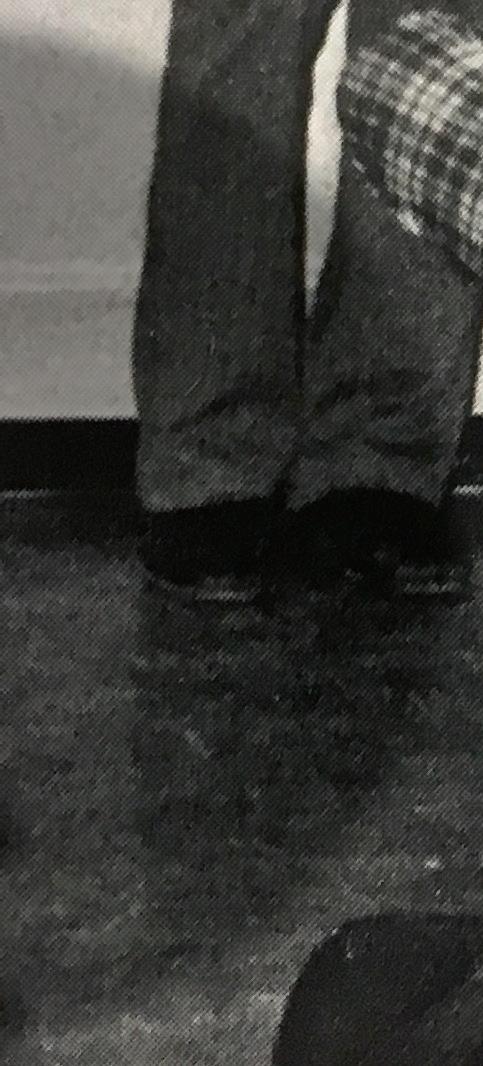
TO GOD,
| 200 YEARS
100
WITH GRATITUDE
OF SLUH
The Organization for Black Achievement coalesced in the mid-1970s and helped African American students thrive at SLUH.
Behind the Scenes at SLUH



The institutional identity of SLUH can be seen in its changing physical plant, in the hundreds of students who pass through its halls each year, in its administration and faculty, and in its board of trustees. Yet the school would not be what it is without the people who, behind the scenes, keep the place running smoothly. Among many such people, Helen Klenklen and Dee Byrd stand out for the longevity of their service and the warmth of their presence.









Helen Klenklen worked in the main office at SLUH for 50 years, a full quarter of the school’s 200-year history. Hired as a secretary in 1960 by Fr. Sheahan, Klenklen went on to work for nine principals—five Jesuits and four laypeople. She became the registrar in the late 1960s, a title she retained for the rest of her career. In that role, Klenklen recorded grades and prepared certificates of award and graduation, along with the transcript of each student who attended SLUH during those years. She helped the school operate on a daily basis in ways that were not always noticed, and she was a source of institutional memory and continuity from administration to administration. Klenklen retired in 2010.


Like Klenklen, Dee Byrd, Director of Environmental Services, brought a continuity to the SLUH experience, in both his work with

the facility and his work with students. Byrd’s crew prepared the school building every day—cleaning classrooms, doing general maintenance, and setting up for events. Byrd also supervised the work grant program, through which generations of students learned valuable skills and habits while earning money for their tuition. In fact, some work grant students said that they learned more from Byrd than they did from classroom teachers at SLUH. Byrd also taught the SLUH community a profound lesson about love and marriage through his faithful care for his wife, Sharon, who suffered a stroke in 2002.
Dee Byrd worked at SLUH for thirty-six years and influenced many students’ lives through the work grant program.

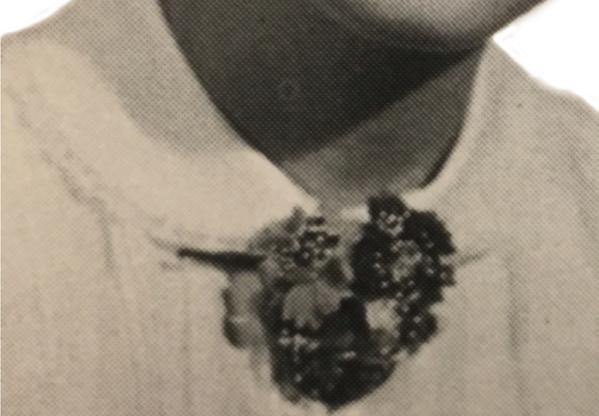
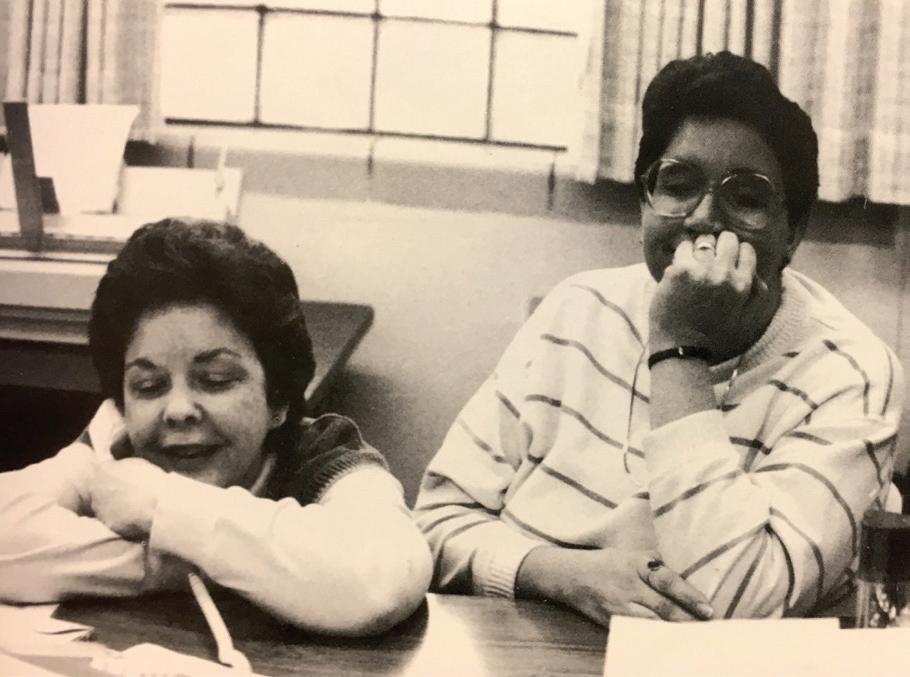
Byrd started his career working in the Currigan Room, when it was still a dining room serving three meals a day to members of the Jesuit community who lived at the Backer Memorial. He worked at SLUH for thirty-six years before retiring in 2016.


PART TWO 101
on to work
Helen Klenklen worked in the main office of SLUH for fifty years—a full quarter of the school’s existence. She began her time at SLUH in 1960.
Helen Klenklen in a moment of levity with Jan Cotter, her longtime companion in the main office.
Technology at SLUH







Like the rest of the world, SLUH has gotten wired over the past forty years, starting with a Hewlett-Packard minicomputer and concluding with a smartphone in the pocket of nearly every person on campus.

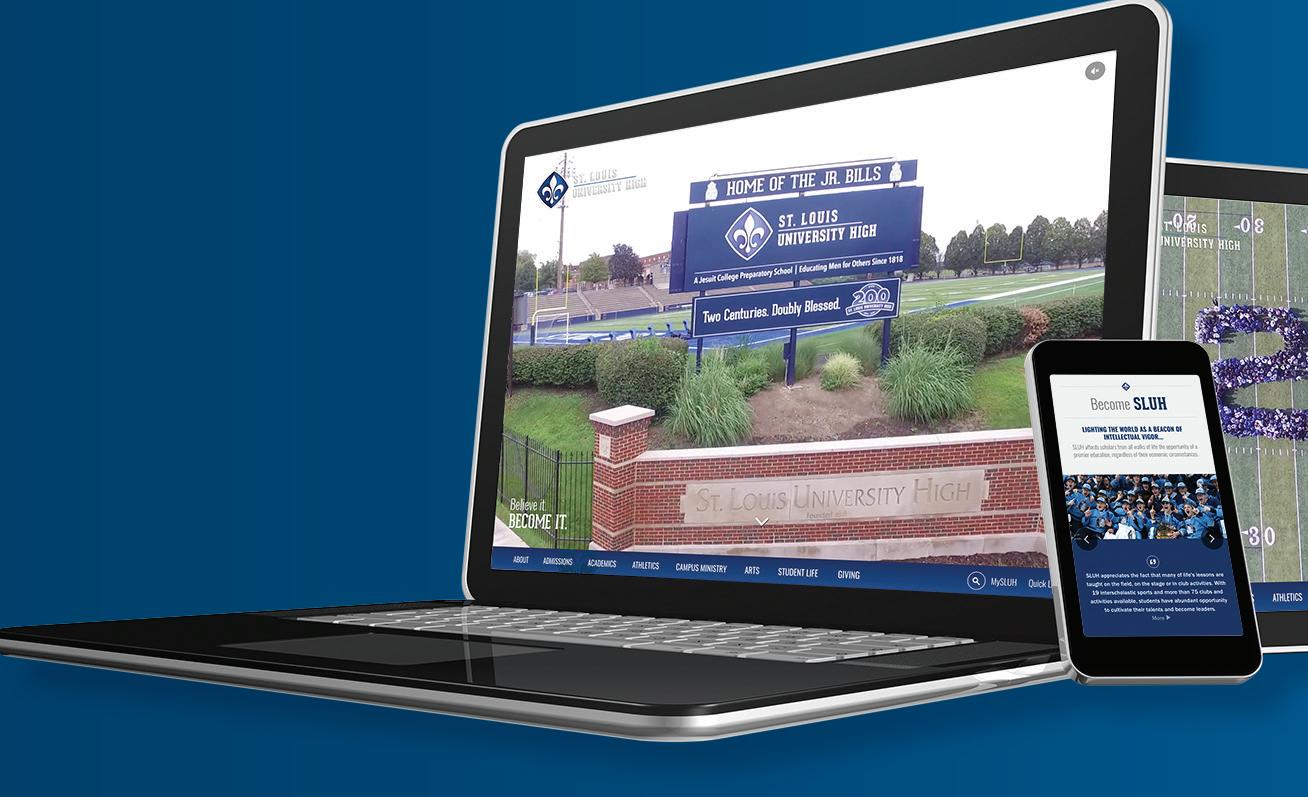


SLUH’s original Hewlett-Packard from 1977, primitive by today’s standards, had a mere 256 kilobytes of RAM as well as a card reader for student and teacher input. It was a start, however, and the school continued to embrace technology. An item in the Prep News in September 1980 announced one of SLUH’s newest extracurriculars, the Computer Club, moderated by Fr. Jim Keene, S.J., who had originally convinced the board of trustees to include computers in the SLUH curriculum.
In the mid-1980s, keyboarding classes replaced typing classes, using Commodore 64 computers. In 1985, when Bob Overkamp ’67, a math teacher, assumed responsibility for managing the school’s computer systems, the school made the switch to Apple products. Three years later, Room 223 was converted into a computer lab with thirty-two Macintosh Plus computers, managed by Overkamp. In August 1988, Prep News Volume 53, Number 1, was the first ever to be composed, laid out, and printed entirely on Macintoshes.
later,
2004 and took the reins when Overkamp retired, at one point SLUH owned and maintained between five hundred and six hundred computers. Now all students are required to have their own devices—iPads for freshmen and sophomores, a laptop or tablet for upperclassmen. Much of the school’s activity occurs online or depends on computers—attendance, teacher gradebooks, and communication via email (added for faculty in the mid-90s and for students about ten years later). The school’s wireless network, built by Dickmann’s IT Department, covers the entire campus. That network is responsible for important features, such as the school’s phone system and PA system, parts of the HVAC system, the food service systems, and the security cameras. SLUH’s website communicates its mission worldwide, as do a host of Twitter and other social media accounts.
social
Campus
January 19, 1996. The school began to invest in laptop carts for student use in regular classrooms. According to Jonathan Dickmann ’96, who arrived in
Campus renovations in 1995 created two computer labs in the basement of SLUH. All faculty members were issued their own desktop or laptop computers, and they submitted their grades via computer disk. Access to the Internet soon became possible, as announced in the Prep News on January 19, 1996. The school began to invest in laptop carts for student use in regular classrooms. According to Jonathan Dickmann ’96, who arrived in
TO GOD, WITH GRATITUDE | 200 YEARS OF SLUH 102
Bob Overkamp, originally a math teacher, was instrumental in bringing computers into widespread use at SLUH.

The Becvar Legacy


In big and little ways, for more than four decades Tom Becvar has defined what SLUH is as an institution. His legacy lies not only in the patterns of curriculum and administrative practice that he has established, but also in his very family name. Becvar, who started teaching at SLUH in 1973, has handled a wide variety of responsibilities, from staffing the gate at football games to teaching the school’s most advanced math class. He has moderated the senior class, organized retreats, and assisted with the box office for the theater. He chaired the Math Department for decades. He was a longtime driving force behind Senior Follies. Becvar moderated the Bowling Club and team for twenty years. He was instrumental in nurturing SLUH’s AP program and instituted the BC Calculus course, which he has taught for many years. As an assistant principal for more than ten years, Becvar has kept the school operating smoothly, arranging student schedules and providing continuity through changing times.
Even after Becvar’s retirement, the family name will continue to be a part of SLUH. Since 2008, Dan Becvar ’02, Tom’s son, has taught math at SLUH and involved himself in some of the same arenas as his father—senior class moderator, the theater, Senior Follies—as well as some new ones, like coaching volleyball. Tom and Dan Becvar are the only father and son who have both won the Faculty Appreciation Award. In addition, Sarah Becvar, Tom’s daughter-in-law, teaches in the Social Studies Department.


TO GOD, WITH GRATITUDE | 200 YEARS OF SLUH 104
Tom Becvar’s first yearbook photo, from 1974—the first of many.
Tom Becvar looks on as his son Dan speaks at the 2014 SLUH graduation. The Becvars are the only father and son to both win the Faculty Appreciation award.
First Lay President
On a hallway wall in the Backer Memorial, on the first floor of the wing that used to be the residence of the Jesuits who taught at SLUH, hang a series of photographs depicting the presidents who have led the institution. Every one of them is a Jesuit, except for one.
In 2005, after a nationwide search, the school hired as its first lay president, David Laughlin, a husband and father steeped in the ideals of Jesuit education.
“The Jesuit paradigm is something he lives in his daily life,” said Thom Digman ’72, one of the members of the committee that selected Laughlin. “He is a man of high integrity.”
Laughlin had deep experience in Jesuit education, having attended Creighton University on both the undergraduate and graduate levels, worked at Creighton Prep as both a teacher and administrator, and led Rockhurst High School in Kansas City, Missouri, as principal.
“He views the forming of young men, of young intellects, as holy work,” said physics teacher Paul Baudendistel ’90.
Laughlin emphasized the Jesuit ideal of cura personalis, care for the individual, and made time for all members of the community, from the maintenance staff to benefactors.
Under his leadership, expenses were managed so that tuition covers more of the cost of a SLUH education, while annual direct financial aid increased from $900,000 to $4.1 million. The Danis Field House and Si Commons projects were completed without incurring additional debt, as was the new Jesuit residence, a commitment to welcoming a Jesuit presence on the SLUH campus.
Laughlin’s years as president saw SLUH undertake a strategic planning process called “Imagining 18” and a subsequent capital
campaign called Go Forth. The National Catholic Educational Association awarded him with the “Lead. Learn. Proclaim.” award, which “recognizes the outstanding efforts, contributions, and achievements on behalf of Catholic school education.”
Having served longer than any other president in the history of SLUH, Laughlin announced in early 2017 that he would leave SLUH in July 2018 to serve as president of Rockhurst High School.

His successor, Alan Carruthers, carries on his example of faith-filled lay leadership.
President David Laughlin’s twelve years at the helm of SLUH constitute the longest tenure of any SLUH president.
PART TWO 105
2005
Initiations



Traditional societies evolved elaborate initiation rituals to mark the entry of young men into their ranks. Two such rituals—Direction Days and the Running of the Bills—have evolved at SLUH to mark the beginning of each new class of Junior Billikens.

Direction Days feature a series of activities to help freshmen get to know their new SLUH brothers, ceremonies of welcome and initiation presided over by faculty and upperclassmen, and prayerful celebration of what it means to go to SLUH. Direction Days began in 1983, and their exact locations and itineraries have changed over the years. Early on, freshmen were divided into several groups over a series of different days and traveled to Tower Grove Park and Camp Wyman. Later, students went to Green Hills, the Jesuit property in Wildwood. Now, students walk across the street to Forest Park.
Until 2015, Direction Days took place at the end of the summer, just before the school year began. Over time, however, the school offered more and more opportunities for earning credit in the summer before students’ first year, until nearly all freshmen were spending significant time at school before August. Under the guidance of longtime freshman class moderator Tim Curdt ’90, Direction Days were moved to the beginning of the summer. All freshmen now experience Direction Days over the same two-day period, building a mindset of growth, brotherhood, and openness to new experience.
After a couple weeks of attending SLUH, freshmen are ready for a more public recognition of their new belonging. Like the annual
thundering down the streets of Pamplona, the Running of the Bills offers a unique spectacle of frenzied energy. Prior to one of the early home football games, freshmen slather themselves with blue paint, under the guidance of their senior advisors. The gathered members of the class, bare-chested and blue, run into the football stadium to the cheers of their older classmates and the furiously snapping cameras of their parents. With this spirited ceremony fulfilled, the freshmen have been re-christened as members of their SLUH class—an association that will remain with them for the rest of their lives.
TO GOD, WITH GRATITUDE | 200 YEARS OF SLUH 106
Fr. Marty Hagan, S.J., conducts Direction Days at Tower Grove Park in this image from the 1979 yearbook.
Freshmen, painted blue for the annual Running of the Bills, experience a rite of passage at SLUH while cheering on the football team.
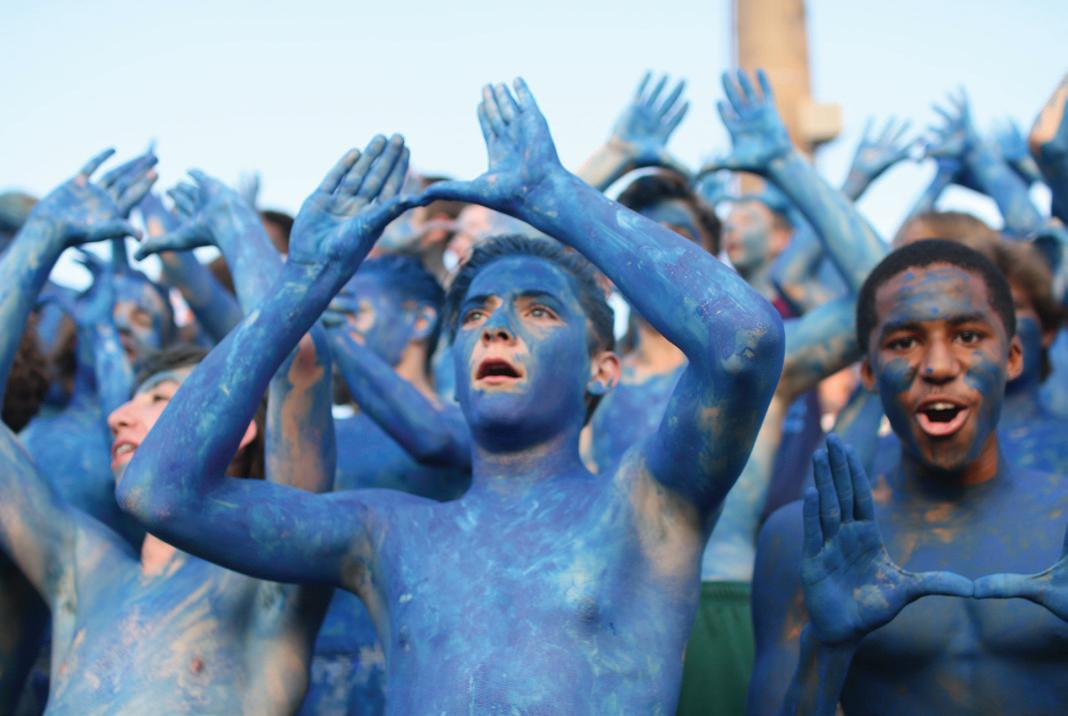


Imagining 18 2013


In advance of SLUH’s bicentennial, the administration, faculty, and alumni undertook a process to craft a strategic vision for the school’s third century. Entitled “Imagining 18,” the strategic planning began in late 2013.



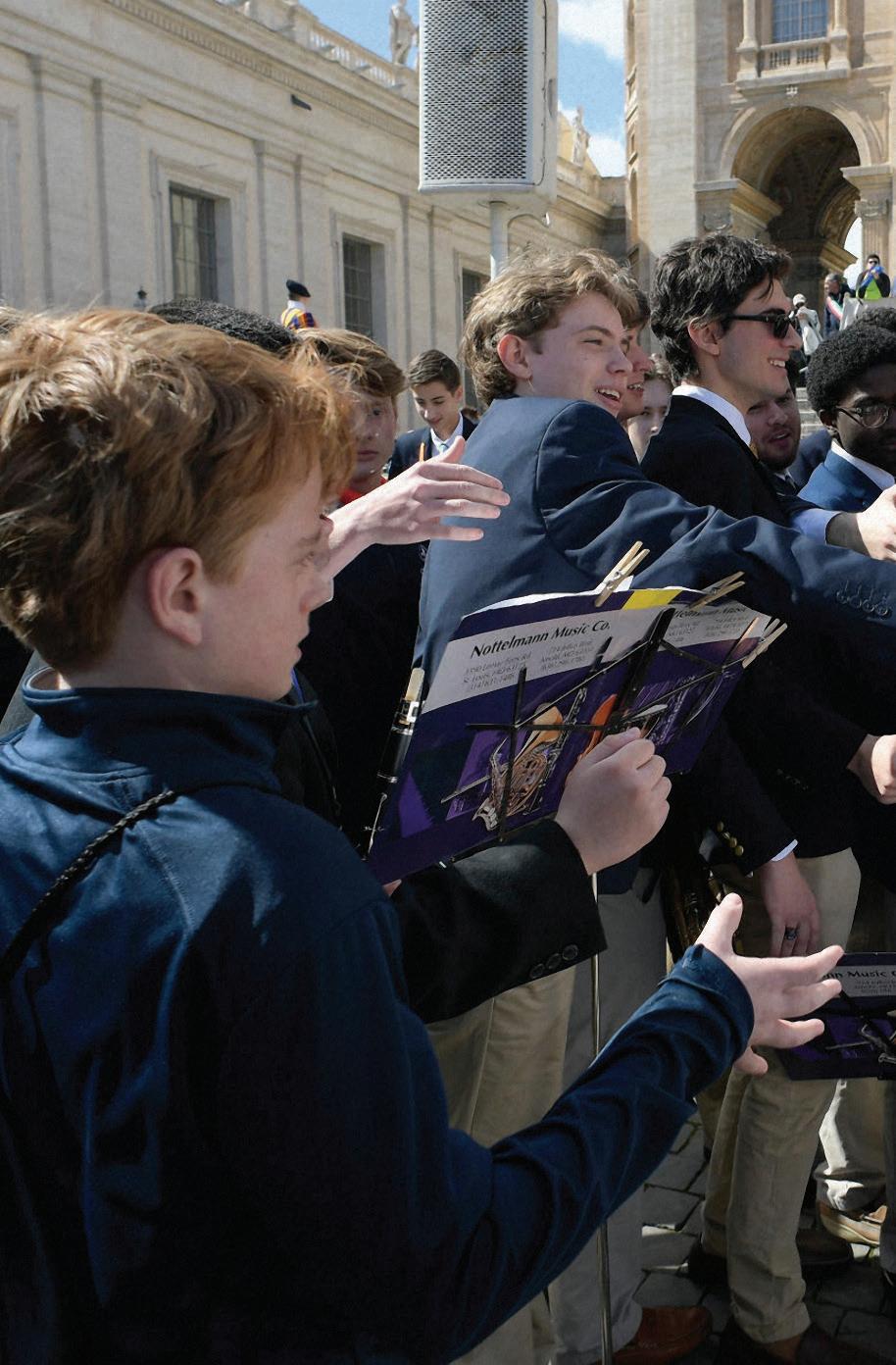
Imagining 18 brought together various stakeholders and experts from the community and around the country for five sessions of learning and discussion, seeking to chart the future of the institution and ensure its role as a model for excellence in the formation of faith-filled, intellectually competent men. The endeavor’s ultimate goal was to help SLUH “become a model of academic achievement and faith formation for the nation and the world” as it began its third century in 2018. Imagining 18’s committees focused on six major areas: curriculum, facilities, Jesuit identity, counseling, financial modeling, and global education. The closing convocation in February 2015 showcased a broad vision built on the committees’ work and laid the foundation for a capital campaign to raise the funds needed to flesh out that work and extend Anna Backer’s dream for generations to come.
funds needed to flesh out that work and extend


TO GOD, WITH GRATITUDE | 200 YEARS OF SLUH 108
The logo of the Imagining 18 strategic thinking project.
2018
A Papal Audience
A cardinal who would later become pope visited SLUH in 1936. More than eighty years later, a group of SLUH students on a band trip to Italy had a close encounter with Pope Francis, the first Jesuit to head the Catholic Church.
The group, led by band director and music teacher Jeff Pottinger, was playing in St. Peter’s Square at the Vatican following a ceremony that included a papal audience. A Vatican security officer approached Pottinger, asked him who they were and where they were from, and subsequently invited the band to play on the steps of St. Peter’s Basilica.
Pope Francis himself walked down the steps of the basilica and listened as the SLUH students performed “O Sacred Head Now Wounded.” The pope chatted with Pottinger and then shook the hand of each of the SLUH students.
“He asked me about the piece and the arrangement of the song,” Pottinger recalled. “He told me the music was fantastic and the boys were wonderful. He also asked about our school, which I explained, that we were Jesuit and he’s a Jesuit so I was excited to tell him that. And this was our 200th anniversary, which was a big reason why we were there. For Jesuits, to share this with Pope Francis is priceless.”
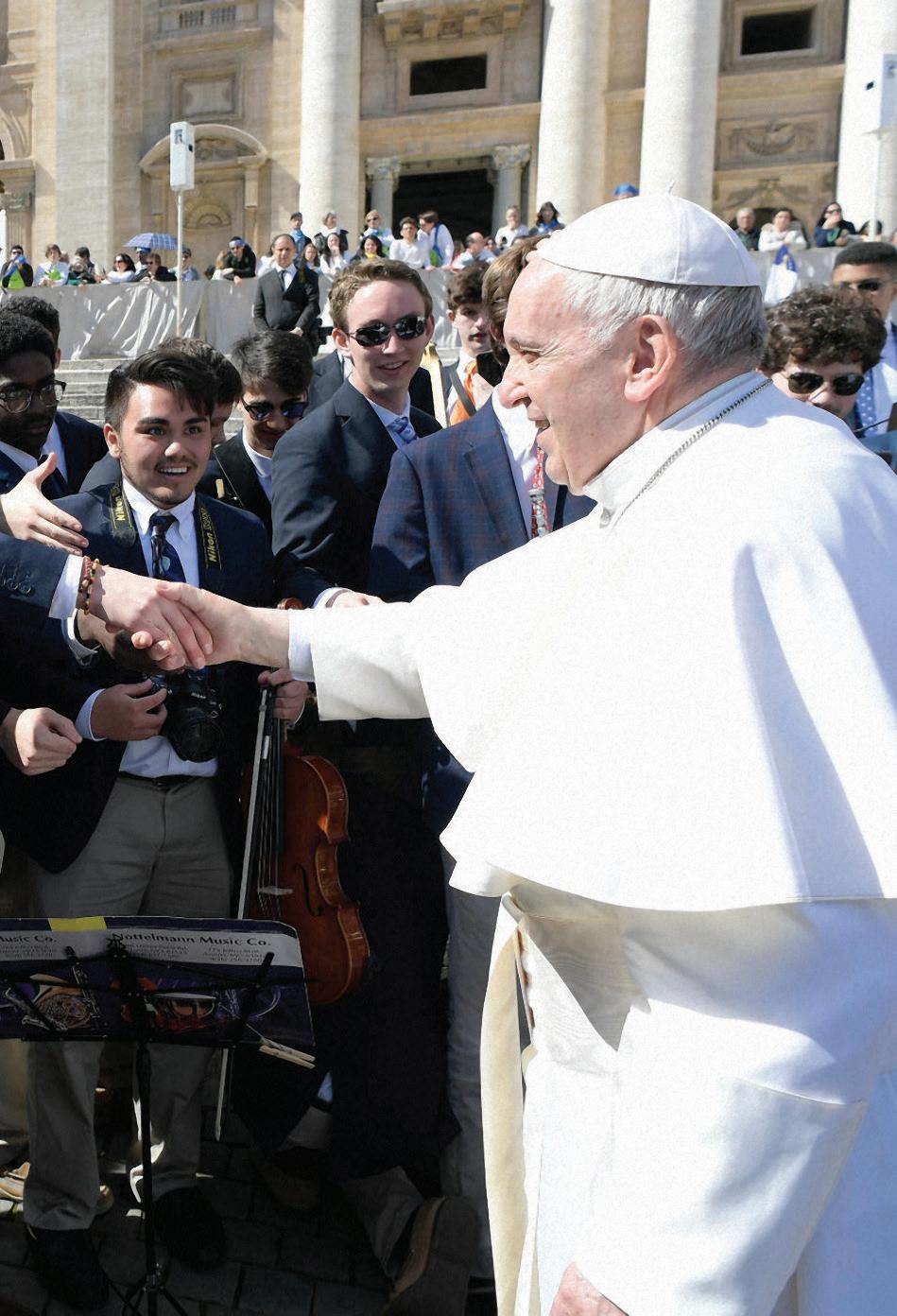
PART TWO 109

A paradox discussed by the ancient Greek philosophers goes like this: The ship in which Theseus and the youth of Athens sailed back from Crete was preserved intact for many years, for its curators replaced it plank by plank as it rotted. After a certain number of years, none of the original pieces of the ship remained. Was it still the ship of Theseus? Looking back on the two centuries of our school’s history, something like this paradox comes to mind. What does the SLUH of 2018 have to do with the tiny school that held classes in the house of Eugenie Alvarez? Can the high school really be said to have existed since 1818, even though, in those early decades, the concept of a high school did not? And what about those years when the high school division split into three different schools? Even during the Backer Memorial era, which is still going strong, the school has been a palimpsest, a surface on which successive generations have inscribed their vision of SLUH and written over (at least partly) previous visions. Students stream through like water in a riverbed. Administrators and teachers stay longer, many of them much longer, and leave deeper impressions on the institution. Ultimately, though, the school has outlived all of these individuals.
Looking Back on 200 Years 2018




PART TWO 111
WHAT IS SLUH?
It is clearly more than a building or a particular group of people. Is it an ideal? A belief? A spirit?


Perhaps its students and teachers, fueled by the sacrifices of its families and the




























expanding group of people, and giving light to the St. Louis region.






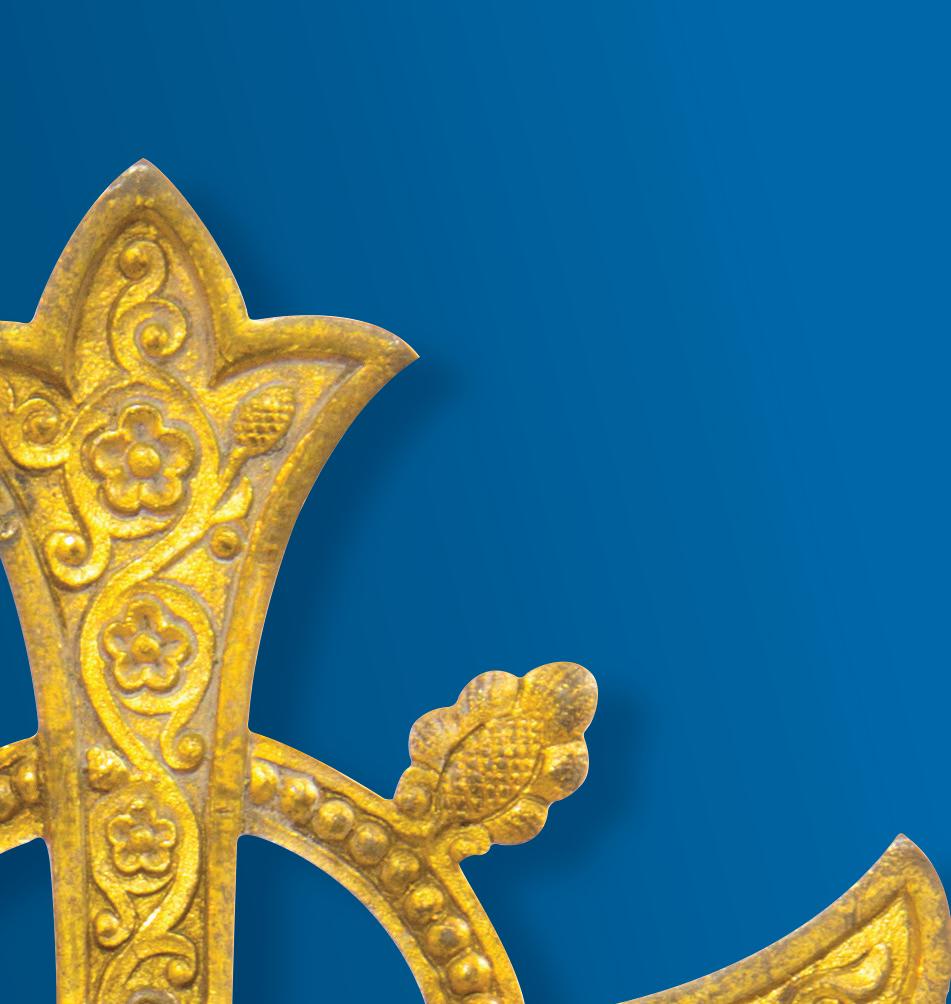


Perhaps SLUH is best understood metaphorically as a fire, kindled by the Church, tended by the Society of Jesus, fanned by the creativity of its students and teachers, fueled by the sacrifices of its families and the generosity of its benefactors, providing warmth and energy to an everexpanding group of people, and giving light to the St. Louis region.
Some of us gather around this fire for four years, some for a lifetime. We remember the stories told around the fire, the meals shared, the brotherhood and friendships we built as we felt the fire’s energy and looked into its everchanging, mysterious heart.
Whatever SLUH is, we look back with gratitude for what it has meant in our lives. We thank God for the spirit that has infused the place and for the people who have embodied Christ within its walls. And, inspired by those who have come before us, we look ahead with excitement to what the next two hundred years will bring.
Whatever
TO GOD, WITH GRATITUDE | 112
Some
Getty image.

Sources





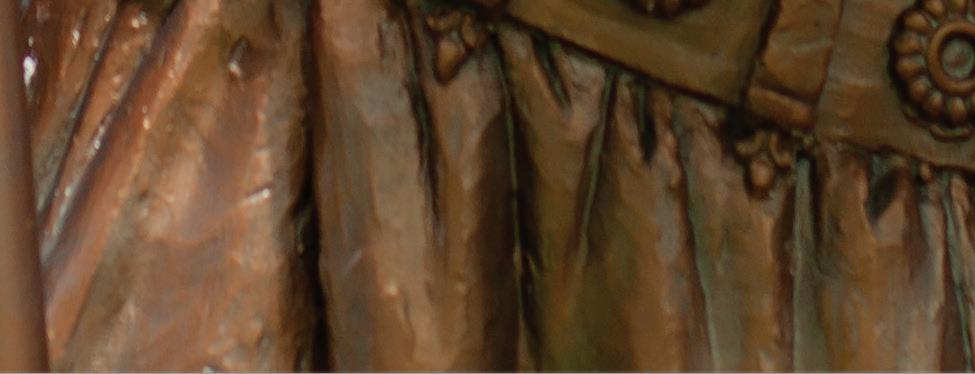













In researching the pre-Backer history of SLUH, I relied heavily on two comprehensive works: William B. Faherty, S.J.’s Better the Dream and Gilbert J. Garraghan, S.J.’s The Jesuits of the Middle United States . As for SLUH’s history as an independent institution, I found that story told best in the Dauphin yearbooks and, most especially, in the Prep News , whose moderators and reporters are to be commended for their decades of work chronicling the life of the school. I would also like to thank the members of SLUH’s Archive Committee, especially Marty O’Brien, for their eff orts in preserving SLUH’s history and their assistance with this project. Following are more detailed notes on my sources.
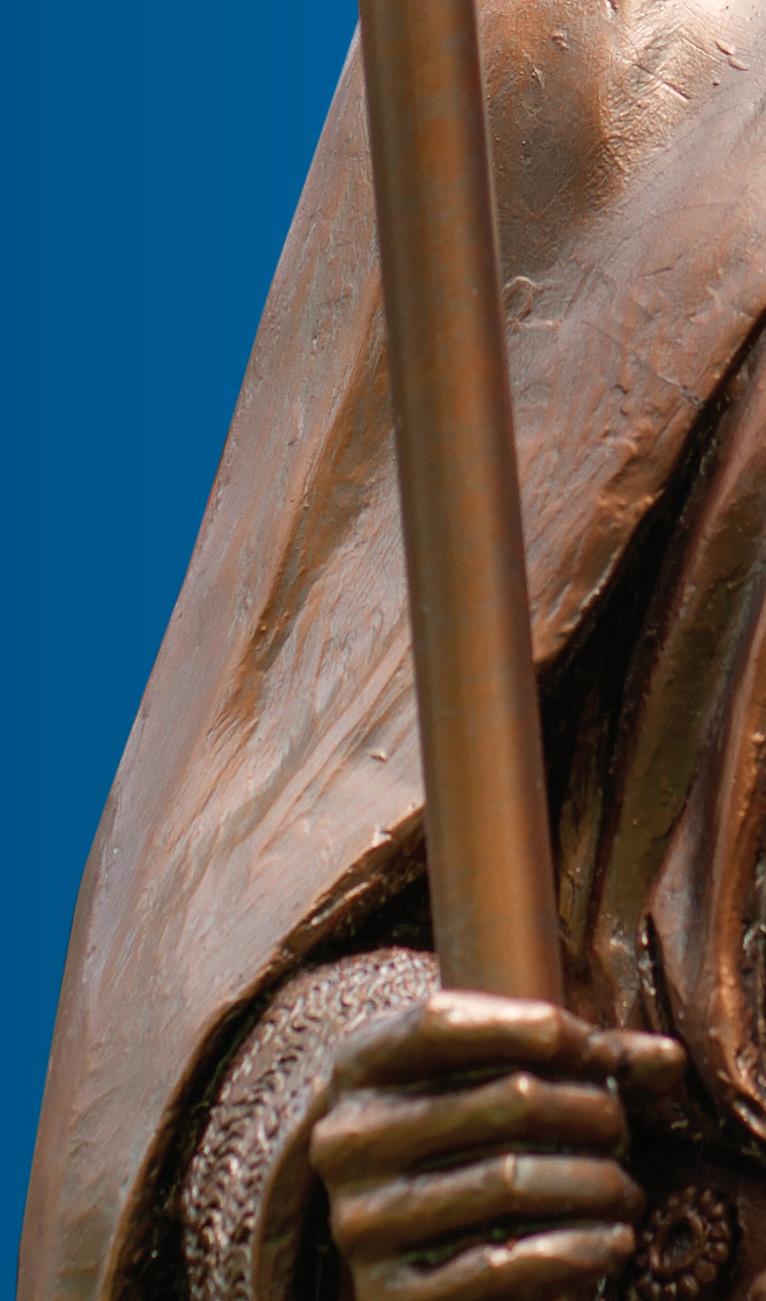
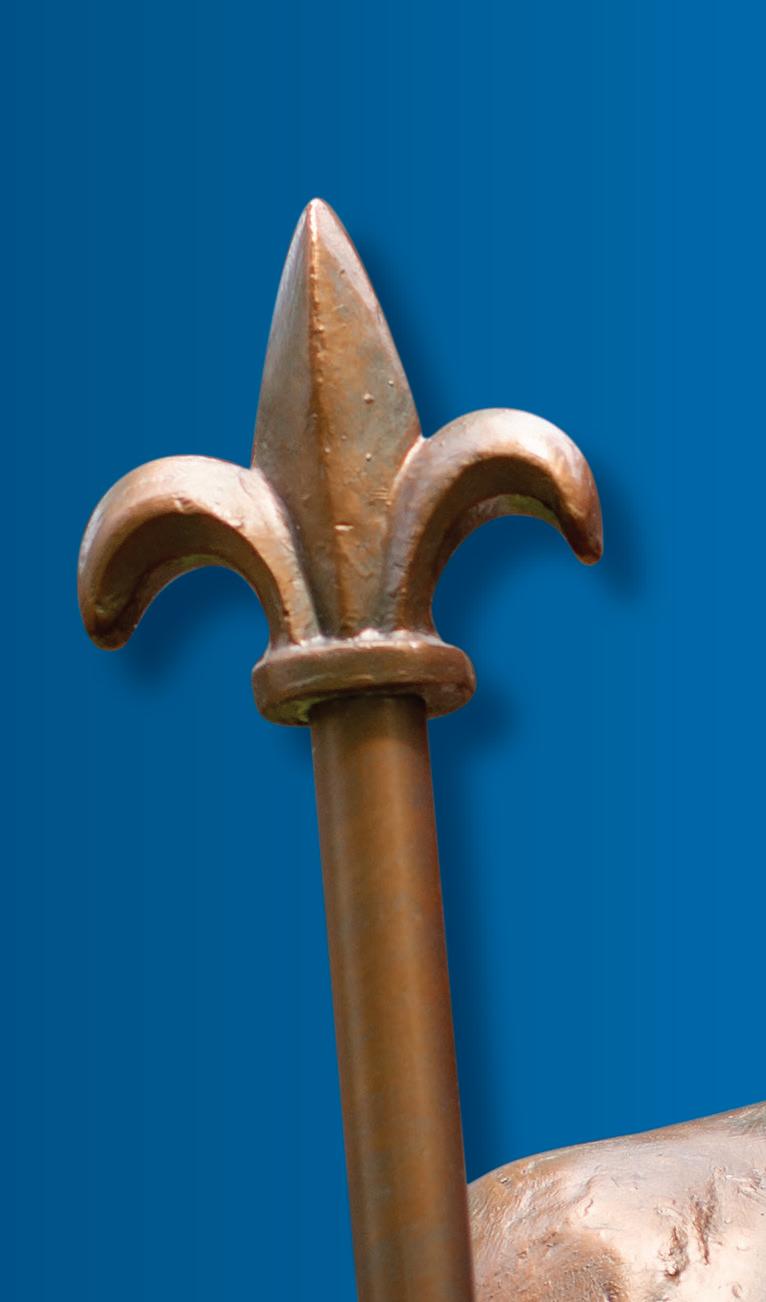





TO GOD, WITH GRATITUDE | 200 YEARS OF SLUH 114
PART ONE
1803 From Napoleon to Bishop DuBourg
Walter H. Hill. Historical Sketch of the St. Louis University. St. Louis: Patrick Fox, 1879. 1.
William B. Faherty, S.J. Better the Dream: Saint Louis: University and Community. St. Louis: Saint Louis University, 1968. 3–7.
Gilbert J. Garraghan. The Jesuits of the Middle United States. Volume 1. New York: America Press, 1938. 42.
James Neal Primm. Lion of the Valley: St. Louis, Missouri. Boulder, Colo.: Pruitt Publishing Co., 1981. 95.
1818 Born in Modest Circumstances
Faherty, Better the Dream, 8–9.
Primm, Lion of the Valley, 96.
“History of Catholic Education in the Archdiocese.” http://archstl.org/ education/page/history-catholic-education-archdiocese

1819 Moving On Up
Faherty, Better the Dream, 10–11.
Primm, Lion of the Valley, 94.
1821 SOS, S.J.
Faherty, Better the Dream, 10–12, 16–17.
Garraghan, The Jesuits of the Middle United States, 43, 48, 62, 97, 108.
1823 Negotiating with the New Arrivals
Faherty, Better the Dream, 19.
Garraghan, The Jesuits of the Middle United States, 79–91.
Jeffrey Harrison, S.J., and Kelly Schmidt. Email. June 6, 2018.
1829 A Solid Jesuit Foundation
Faherty, Better the Dream, 19–20, 25–26, 52, 38–39.
1831 The Passing of St. Regis
Garraghan, The Jesuits of the Middle United States, 147–69.
1833 Slavery
Garraghan, The Jesuits of the Middle United States, 63, 170, 610–20.
Edward F. Beckett, S.J. “Listening to Our History: Inculturation and Jesuit Slaveholding.” Studies in the Spirituality of Jesuits 28:5, November 1996.
Matthew Quallen. “Beyond the 272 Sold in 1838, Plotting the National Diaspora of Jesuit-Owned Slaves.” thehoya.com, April 30, 2016.
Msgr. Michael John Witt. Saint Louis: The Story of Catholic Evangelization of America’s Heartland. St. Louis: Miriam Press, 2016. 115, 132.
Cyprian Davis, O.S.B. The History of Black Catholics in the United States. New York: Crossroad Publishing Company, 1990.
Jeffrey Harrison, S.J., and Kelly Schmidt. Email. June 6, 2018.

1833 Tuition
Faherty, Better the Dream, 40–41.
Garraghan, The Jesuits of the Middle United States, 308.
1836 The Challenges of Diversity
Faherty, Better the Dream, 44–45, 54.
Garraghan, The Jesuits of the Middle United States, 218.
1844 and 1854 Riots
Faherty, Better the Dream, 95–105.
1849 Fire and Contagion
Garraghan, The Jesuits of the Middle United States, 221–22.
Frederick A. Hodes. Rising on the River: St. Louis 1822–1850, Explosive
SOURCES 115
Growth from Town to City. Tooele, Utah: Patrice Press, 2009.
William Bowdern, S.J. Sesquicentennial History of St. Louis University High School. 1968. 6.
Tim O’Neil. “A look back: Cholera epidemic hit a peak here in 1849.” St. Louis Post-Dispatch, July 18, 2010.
1861 A Divided University
Adam Arenson. The Great Heart of the Republic: St. Louis and the Cultural Civil War. Columbia: University of Missouri Press, 2011. 113–18.
Faherty, Better the Dream, 133–40, 141–44.
“Frost Family: Historical Note. (1823–1960).” Saint Louis University
Libraries Special Collections: Archives and Manuscripts. http://archon.slu.edu/?p=creators/creator&id=33
Garraghan, The Jesuits of the Middle United States, 151–53, 158.
Louis Gerteis. The Civil War in St. Louis: A Military History. Columbia: University of Missouri Press, 2012. 3rd edition.
“The Frost campus: Name origins and changes.” University News, April 27, 2017.
1888 A Strong High School and a Grand Location
Faherty, Better the Dream, 150–51, 180–81, 184–85.
1901 Proto-SLUH
Faherty, Better the Dream, 191, 207, 242.
1908 When the Bills Went Marching In 2008–2009 Basketball program.
SLUH Athletics 50th anniversary document http://www.slu.edu/about/key-facts/what-is-a-billiken.php
http://www.churchofgoodluck.com/Billiken_History.html
https://web.archive.org/web/20060419033249/http://www.sluh.org:80/ billiken.cfm
PART TWO
1924 Anna Backer’s Generous Vision Becomes a Reality
David Suwalsky, S.J. “The Separation and Incorporation of St. Louis University High School: The Backer Memorial.” Academic paper. December 3, 1986.
1927 Tornado Dauphin yearbook, 1928.
The Dauphinette 2:1, October 1927.
Tim O’Neil. “Sept. 29, 1927: The 2nd deadliest storm to ever hit St. Louis.” St. Louis Post-Dispatch, September 30, 2016.
1927 Jesuit Legacy: Fr. Francis G. Benoit, S.J. “In Memoriam.” Dauphin yearbook, 1960.
“Some stormy memoirs of Father Benoit, member of Backer faculty since ’27. (As told to Father John Crowley, S.J.).” Prep News 13.8, March 17, 1950.
“Graduates meet; Fr. Benoit honored.” Prep News 20.1, September 28, 1956.
1930 SLUH Separates from SLU
Suwalsky, “The Separation and Incorporation of St. Louis University High School.”
1936 Death of Anna Backer Bowdern, Sesquicentennial History of SLUH.
Tom Schaeffer and Chris Zielinski. “Mrs. Anna Backer: Yesterday, Today, Tomorrow.” Prep News 51.5, September 26, 1986.
TO GOD, WITH GRATITUDE | 200 YEARS OF SLUH 116
1936 Future Pope Visits SLUH
Robert Heidenry. “No Cheers.” Prep News 22.2, October 17, 1958.
“When Pius XII Visited St. Louis U. High.” University Prep News 2.9, March 9, 1939.
1938 Jesuit Legacy: Fr. John J. Divine, S.J.
Al Mangelsdorf. “Alumni has become active organization.” Prep News 13.8, March 17, 1950.
Dauphin yearbook, 1940.
Dauphin yearbook, 1941.
“Fr. John J. Divine passes away at 57.” Prep News 24.7, February 24, 1961.
James Lutz. “Dedicated teacher remembered here as founder and moderator of many activities.” Prep News 24.7, February 24, 1961.
1939 Smoke Commissioner
“Raymond Tucker, St. Louis Mayor.” New York Times, November 25, 1970.
Tim O’Neil. “Nov. 28 1939: The day ‘Black Tuesday’ rolled into St. Louis.” St. Louis Post-Dispatch, November 28, 2016.
1941–45 World War II and SLUH
This piece is based upon a survey of Prep News Volumes 4–8, 1941–45.
1944 Fr. Claude Heithaus, S.J., Denounces Racial Segregation
“‘Even the pews stood up’: The forgotten history of the racial integration of Saint Louis University.” NextSTL, Feb 27, 2013.
William Barnaby Faherty, S.J. Saint Louis University: A Concise History (1818–2008). St. Louis: Gashouse Books, 2009.
“First negro is admitted to St. Louis U. High School.” Post-Dispatch, September 5, 1946.
1945 “Easy Ed” Macauley, No. 22
Nate Heagney. “Ed Macauley, 1928–2011: Legend in more ways than one.” Prep News 76.12, November 18, 2011.
1945 Rec Room Excavated
“The Passing of a SLUH Legend.” 2007–2008 SLUH President’s Report.
1947 Jesuit Legacy: Brother Thomas Thornton, S.J.
Michael Harter, S.J. “Memorials: C. Thomas Thornton, S.J.” National Jesuit News 35:5, April/May 2006.
Andrew Ivers. “Brother Thornton leaves Backer Memorial after 55 years of service to SLUH.” Prep News 65.11, November 17, 2000.
1949 Joseph Schulte and the Dauphin Players
Nick Fandos. “Schulte to Leave Classroom, Take New Role.” Prep News 74.19, February 11 2010.
Sam Chechik. “Theatre Legend Joe Schulte Dies Over Summer.” Prep News 81.1, August 26, 2016.
Joe Holleman. “Joe Schulte dies, longtime SLUH drama teacher.” stltoday.com, July 11, 2016.
“SLUH Honors Faculty Dedicates Theater.” SLUH press release, September 10, 2005.
David Laughlin. Letter to faculty, July 11, 2016.
1950 Trailblazers for Inclusion
Jack Sullivan. “Integration at SLUH.” Academic paper. December 2014.
1950 Jesuit Legacy: Fr. Marty Hagan, S.J.
SLUH: 2008-09 News and President’s Report. 6–9.
1950s A New Era: Legendary Lay Teachers
Alumni News, July 1990.
Geoffrey Bull. “Calacci Retires After 35 Years.” Prep News 61.35, May 22, 1992.
SOURCES 117
Clark DeWoskin. “Murphy exits press box after 43 years.” Prep News 77.10, November 2, 2012.
Mike Lumetta. “Coaching great Martel dies at 91.” Prep News 80.18, January 29, 2016.
Jim Rook. “Genial Science Prof Watched Backer Rise.” Prep News 13.8., March 17, 1950.
Lewis E. Strathmann, Jr. “Mr. Calacci Retires Ending a Remarkable Career at SLUH.” Dauphin yearbook, 1992. 180.
Beau Roy. “Martel era ends at SLUH after 29 years.” Prep News 52.28, April 15, 1988.
Matt Snively. “Deacon Murphy retires after 41 years.” Prep News 65.30, May 18, 2001.
1953 Jesuit Legacy: Fr. Phil Kellett, S.J. “In Memoriam: Fr. Philip L. Kellett, S.J.” St. Louis U. High Alumni News, May 1973.
1954 Jesuit Legacy: Fr. Paul Distler, S.J. St. Louis Post-Dispatch, October 26, 1986. 47.
Rich Moran. “In Memoriam: Fr. Paul Distler, S.J.” Prep News 51.9, October 31, 1986.
1955 Jesuit Legacy: Fr. Gerald Sheahan, S.J.
Tim Elfrink. “Gerald Sheahan, S.J., SLUH Principal from ’55–’67, dies in Jesuit Hall at 79.” Prep News 65.1, September 1, 2000.
Mid-Century Men for Others
Stephen Lumetta. “Harrington, ’44, a forgotten hero of the American poor.” Prep News 78.26, May 9, 2014.
James Traub. “Eyes on Henry Hampton.” The New Yorker, January 23, 1995.
James T. Fisher. Dr. America: The Lives of Thomas A. Dooley, 1927–1961. Amherst: University of Massachusetts Press, 1997.
Nick Perryman. “Bringing meaning to renamed Mission Week: Welcome Dooley Week.” Prep News 80.19. February 5, 2016.
1958 Jesuit Legacy: Fr. William Doyle, S.J.
Sam Heagney. “Inspiration for 30-year-old statue visits her bust at Open House.” Prep News 80.13, November 20, 2015.
Sam Heagney and Billy Balossi. “Midwest paintings leave SLUH for SLUMA.” Prep News 80.3, September 4, 2015.
Lynn Davis. “Fr. William Doyle to teach student basic art course.” Prep News 26.7, March 8, 1963.
1961 The Hoodlum Priest
“Our History.” DismasHouse.net
Ethan McIntyre. “Who was The Hoodlum Priest?” Prep News 80.26, April 15, 2016.
Dennis Brown. “Repudiated upon its 1961 release by the tough-talking clergyman who inspired it, The Hoodlum Priest remains as obscure and intriguing as ever.” Riverfront Times, March 10, 2011.
The Hoodlum Priest. Dir. Irvin Kershner. 1961.
Jesuit Legacy: Transformative Presidents
Mike Bugg. “Billiken Comes Home to Weekend of Celebration.” Prep News 45.2, September 5, 1980.
Jay Buhr. “Getting Better All the Time.” Prep News 47.1, August 27, 1982.
Dauphin yearbook, 1960. 146.
Tim Elfrink and Andrew Ivers. “SLUH looks to the future with Vision 2000 meeting.” Prep News 65.2, September 8, 2000.
Garraghan, The Jesuits of the Middle United States, 444.
TO GOD, WITH GRATITUDE | 200 YEARS OF SLUH 118
Sean Kickham. “Cummings celebrates Golden Jubilee.” Prep News 71.1, August 25, 2006.
Scott Mueller and Charlie Landis. “SLUH mourns death of a legend, Richard Bailey, S.J.” Prep News 70.22, February 24, 2006.
Adam Thorp. “SLUH gathers to formally dedicate Si Commons.” Prep News 76.20, February 10, 2012.
Doug Wilmsmeyer. “Wilmsmeyer, ’78, reflects on Fr. Bailey.” Prep News 70.22, February 24, 2006.
Teachers in Time: Charlie Conway and Richard Keefe
Jeffrey Severs, “SLUH Mourns Loss of Conway.” Prep News 61.23, February 21, 1992.
Mike Lumetta, “Keefe leaves 43-year legacy as teacher, principal.” Prep News 74.31, May 21, 2010.
Female Students
Luke Glass, “Cleeland First Woman Ever to Take Classes at SLUH.” Prep News 58.9, October 29, 1993.
Luke Wilmes. “Seven Students from Nanjing Join Student Body.” Prep News 81.16, January 6, 2017.
Women at SLUH
Andy Neilsen. “Schenkenberg selected as 18th principal.” Prep News 66.13, December 7, 2001.
Brian Krebs. “Magistra takes Faculty Appreciation.” Prep News 69.29, April 29, 2005.
“Dr. McConaghy Retires after 30 Years.” SLUH News, Winter 2009.
“Miss Martini; First Lady of SLUH.” Prep News 33.1, October 4, 1968.
Nick Fandos. “Award to honor McConaghy.” Prep News 73.28, May 1, 2009.
SLUH: 2007–2008 News and President’s Report.
1971 The Vietnam War
Charlie Busenhart. Email, May 23, 2017.
“Dennis Cummins, SLUH grad, challenges draft law.” Prep News 33.1, October 4, 1968.
Dick Hudson and Tom Minneman. “27 Jesuits forfeit draft exemptions.” Prep News 36.1, October 1971.
“How the years of war affected St. Louisans.” St. Louis Post-Dispatch, April 3, 1975. 45.
Tom Jackson. “SLUH grad shot in Viet Nam gives impressions of war.” Prep News 33.5, April 1, 1969.
Warren Wimmer. “No more deferments.” Prep News 36.2, December 23, 1971.
Innovations of the ’70s: Senior Project and Weekly Newspaper
John Schweitzer. “What’s in a Three Weeks’ Work?” Prep News 35.3, February 24, 1971.
Shawn Badgley and Dave Copple. “Stepping down after 23 years as moderator.” Prep News 60.32, May 17, 1996.
1972 The Robinson Library
John Sharp. “SLUH Library: A Memorial to Doc Robinson.” Prep News 47.6, September 30, 1982.
John Sharp. “Dr. Robinson’s Dedication and Luck: A Fortune for SLUH.” Prep News 46.12, November 20, 1981.
Peter Ohlhausen. “Dr. Robinson Wins Award.” Prep News 44.5, September 28, 1979.
Prep News 36.3, April 5, 1972. Special issue.
1979 Sisyphus
Dauphin yearbook, 1964.
Dauphin yearbook, 1977.
SOURCES 119
Dauphin yearbook, 1979.
Dauphin yearbook, 1980.
1983 First Lay Principal
Prep News 47.32, April 22, 1983. Special extra.
African American Teachers
Zach Hennes and James Pollard. “Harrison takes her vocals to Visitation Academy.” Prep News 81.30, May 12, 2017.
Sean Powers. “Ex-Scholastic is spokesman for church.” Prep News 69.26, April 8, 2005.
Jim Santel. “After 16 years, Eric Clark to depart SLUH.” Prep News 72.28, April 25, 2008.
Global Education
Ben Everson. “George plans student trips to Ireland.” Prep News 68.12, November 19, 1993.
Personal Interview with Bill George, May 16, 2017.
Personal Interview with Charley Merriott, May 19, 2017.
1998 The Unknown Soldier
Bill Thomas. “Last soldier buried in Tomb of the Unknowns wasn’t unknown.” Washington Post, November 8, 2012.
Mike Mueth. “Unknown Soldier believed to be SLUH grad.” Prep News 62.17, January 23, 1997.
Legendary Teacher-Coaches
Dan Everson. “Busenhart elected to St. Louis Amateur Hockey Hall.” Prep News 82.23, March 7, 2008.
Zach Hennes and Jack Winschel. “Kornfeld prepares for final season.” Prep News 81.1, August 26, 2016.
“Career in review: Students, faculty remember Wehner’s best moments.” Prep News 78.29, May 8, 2015.
David Kvidahl. “Hazelwood Central survives SLUH as Kornfeld coaches final game.” stltoday.com, October 30, 2016.
Dick Wehner. Notes for Talk Honoring Charlie Busenhart’s Retirement from Coaching Hockey.
Ethan McIntyre. “Nicollerat: 600 wins and off-field successes.” Prep News 80.28, April 29, 2016.
Joe Reznikov. “Kornfeld to enter MO Coaches HOF.” Prep News 80.16, January 8, 2016.
Luke Chellis and Nick Fandos. “Linhares named Assistant Principal for Mission.” Prep News 73.31, May 22, 2008.
Marty Johnson. “Changes to come but memories stay: Wehner wraps up 31-year career as Athletic Director.” Prep News 78.29, May 8, 2015.
Nick Prainito. “End of an era: Kornfeld retires after legendary 37-year tenure at the U. High.” Prep News 82.12, November 18, 2016.
Tim Piechowski. “Legendary Busenhart retires from water polo.” Prep News 81.11, November 16, 2001.
Bridging the Divide
Upward Bound: Mike Flood. “Upward Bound Program Progressing Through the Effort of SLUH Students.” Prep News 33.3, January 14, 1969.
Darryl Zinck. “Upward Bound, Onward, Forward.” Prep News 36.1, October 1971.
Mike Klix. “Upward Bound Proven Successful.” Prep News 33.5, April 1, 1969.
Joe Kucharski. “Upward Bound Camp Next Month.” Prep News, May 1973.
TO GOD, WITH GRATITUDE | 200 YEARS OF SLUH 120
Matthew Book. “50 years of Upward Bound: A look back.” Prep News 81.1, August 26, 2016.
ACES: Dauphin yearbook, 1975.
Dauphin yearbook, 1993.
Minority Action Plan: “Minority Action Plan.”
Jeffrey Severs. “SLUH Adopts Minority Action Plan.” Prep News 61.6, October 4, 1991.
Dauphin yearbook, 1992.
Behind the Scenes at SLUH
Matt Hoffman. “Sharon Byrd hospitalized for aneurysms.” Prep News 67.5, September 27, 2002.
Nick Fandos. “Klenklen to retire after 50 years at school’s center.” Prep News 74.31, May 21, 2010.
Zach Hennes. “Behind the scenes: Dee Byrd talks home and work balance.” Prep News 81.14, December 9, 2016.
Zach Hennes. “Dee Byrd announces retirement after 36 years of service.” Prep News 81.15, December 16, 2016.
Technology at SLUH
Bob Overkamp. Email, March 7, 2017.
Dave Grebel. “New Computer System Organizes Students’ Grades.” Prep News 60.6, October 13, 1995.
Dave Tenholder. “SLUH Jumps ‘On-Line’ the Internet with World Wide Web.” Prep News 60.17, January 19, 1996.
Jonathan Dickmann. Email, August 12, 2017.
K. E. Winkeler. “SLUH Goes High Tech in ’85.” Prep News 50.1, August 30, 1985.
“Extra! Extra! Extra! Computer Club.” Prep News 45.5, September 26, 1980.
Sam Chechik. “IT department prepared students, faculty for iPad rollout.” Prep News 80.1. August 20, 2015.
The Becvar Legacy
Nolen Doorack. “Seniors vote Dan Becvar as teacher of the year.” Prep News 78.25, May 2, 2014.
2005 First Lay President
Greg Fox. “Rockhurst principal, Laughlin, named first lay president.” Prep News 69.20, February 11, 2005.
Sam Heagney. “A look back at Laughlin’s 10 years.” Prep News 80.26, April 15, 2016.
Initiations
Mark Frattini. “D-Days create unity.” Prep News 47.1, August 27, 1982.
2018 A Papal Audience
Handley Hicks and Justin Koesterer. “Pope surprises SLUH band with personal visit and blessing.” Prep News 82.23, March 23, 2018.
2013 Imagining 18
Jack Kiehl. “Imagining 18 will close with February convocation.” Prep News 79.18, January 30, 2015.
Jack Kiehl. “Imagining 18 focuses on implementation planning.” Prep News 79.6, September 25, 2014.
Jack Kiehl. “I18 dreams include World Learning Center, sustainable campus.” Prep News 78.29, May 8, 2015.
Jack Kiehl and Leo Heinz. “Imagining 18 to begin next week with convocation.” Prep News 78.7, October 4, 2013.
SOURCES 121
Acknowledgments
In the fall of 2016, SLUH Director of Communications Ben DuMont ’92 asked me if I would be interested in helping out with a project, a coffee-table book to celebrate the bicentennial of St. Louis University High School. I said yes, not really knowing what I was getting myself into. Now, almost two years later, I have a new appreciation for what it takes to create “a coffee-table book.” As Huckleberry Finn says at the very end of his story, “if I’d a knowed what a trouble it was to make a book I wouldn’t a tackled it.” Part of me feels that way, but mostly I feel deep gratitude for the privilege of working on this project. I have learned so much about the history of this school that has been such a central part of my life since I matriculated as a freshman in 1990. I am amazed by what this school has been over the course of its 200 years, and I am excited about what it will become in its next 200.

Fundamentally, SLUH is people: those who have given, do give, and will give their time, talent, and treasure to make the school an institution that gives greater glory to God. I am thankful for all of those individuals, past, present, and future. I also give thanks to those who have helped me in the process of composing this bicentennial volume. The SLUH Archive Committee members (Terry Donohue ’63, Ron Horst ’63, Marty O’Brien ’63, Tim O’Connell ’63, Lee Schilligo ’63, Bob St. Vrain ’63, and Norm Thomas ’63) were instrumental in the conception of the
book, and in the preservation and organization of many of the sources used in its composition. Marty O’Brien, in particular, scouted a lot of the territory in advance. At Reedy Press, Josh Stevens ’91 and Barbara Northcott offered wise guidance and reassurance. Dolores M. Byrnes, author of Saint Louis University’s own bicentennial book, Always at the Frontier , offered important early advice and insights. The staff at the Jesuit Archives and Research Center in St. Louis, especially Ann N. Knake, provided expert help and generous access to the archives. Many individuals read drafts of the manuscript and improved it with their helpful suggestions: Sean Agniel ’96, Fr. Jeff Harrison, S.J., ’75, Fr. Ralph Houlihan, S.J., ’52, David Laughlin, Jim Linhares, Rich Moran ’66, Jason Purnell ’95, Tim Rodgers ’71, and Mary Schenkenberg. Special thanks go to Ben DuMont for his unflagging encouragement and steady navigation of the entire process.
Lastly, I would like to thank my wife, Lisa Granich-Kovarik, and my three daughters, Mira, Alice, and Hannah. Although they will never graduate from SLUH, in various ways the school has touched their lives, and they have left their mark on it as well. Their love and support fortified me as I worked on this book.
TO GOD, WITH GRATITUDE | 200 YEARS OF SLUH 122
122
Frank Kovarik, August 2018
TO GOD, WITH GRATITUDE | 200 YEARS OF SLUH
About the Author
Frank Kovarik graduated from SLUH in 1994 and SLU in 1998. He has taught English at SLUH since 2001 and currently serves as the Chair of the English Department and the Director of Equity and Inclusion. In 2018 he was honored with the Jesuit Schools Network Teaching Award and the University of Chicago Outstanding Educator Award. His writing has appeared in St. Louis Magazine and elsewhere. He lives near Tower Grove Park with his wife and three daughters.

ACKNOWLEDGMENTS 123
ACKNOWLEDGMENTS–ABOUT THE AUTHOR 123
Peter Verhaegen, S.J. (1832–36)
John A. Elet, S.J. (1836–40)
James O. Van de Velde, S.J. (1840–43)
George A. Carrell, S.J. (1843–47)
John B. Druyts, S.J. (1847–54)
John S. Verdin, S.J. (1854–59)
Ferdinand Coosemans, S.J. (1859–62)
Thomas O’Neil, S.J. (1862–68)
Francis F. Stunteback, S.J. (1868–71)
Joseph G. Zealand, S.J. (1871–74)
Leopold Bushart, S.J. (1874–77)
Joseph E. Keller, S.J. (1877–81)
Rudolph J. Meyer, S.J. (1881–85)
Presidents
Henry Moeller, S.J. (1885–89)
Edward J. Gleeson, S.J. (1889–90)
Joseph Grimmelsman, S.J. (1890–98)
James F. X. Hoeffer, S.J. (1898-1900)
Williams Banks Rogers, S.J. (1900–08)
John Pierre Frieden, S.J. (1908–11)
Alexander J. Burrowes, S.J. (1911–13)
Bernard J. Otting, S.J. (1913–20)
William F. Robison, S.J. (1920–24)
William T. Doran, S.J. (1924–30)
John A. Weiand, S.J. (1930–36)
Richard A. Cahill, S.J. (1936–40)
Richard R. Rooney, S.J. (1940–48)
Thomas J. Sheehy, S.J. (1948–53)
Leonard M. Murray, S.J. (1953–56)
Gregory H. Jacobsmeyer, S.J. (1956–62)
John C. Choppesky, S.J. (1962–68)
Richard L. Bailey, S.J. (1968–72)
Robert F. Weiss, S.J. (1973–77, 1992)
Thomas W. Cummings, S.J. (1977–85)
James H. Baker, S.J. (1985–90)
Leo P. Dressel, S.J. (1990–92)

Robert T. Costello, S.J. (1992–97)
Paul G. Sheridan, S.J. (1997–2005)
David J. Laughlin (2005–18)
Alan Carruthers (2018– )
TO GOD, WITH GRATITUDE | 200 YEARS OF SLUH 124
Principals
Rev. William J. Ryan, S.J. (1924–26)
Rev. William F. Parry, S.J. (1926–31)
Rev. John A. Weiand, S.J. (1931–33)
Rev. William S. Bowdern, S.J. (1933–37)
Rev. Neil P. McManus, S.J. (1937–41)
Rev. Frederick L. Zimmerman, S.J. (1941–44)
Rev. James G. Hogan, S.J. (1944–46)
Rev. Maurice E. Van Ackeren, S.J. (1946–51)
Rev. Ralph H. Schenk, S.J. (1951–53)
Rev. James B. Corrigan, S.J. (1953–55)
Rev. Gerald R. Sheahan, S.J. (1955–67)
Rev. Richard L. Bailey, S.J. (1967–71)
Rev. Michael H. Durso, S.J., ’53 (1971–74)
Rev. Ralph D. Houlihan, S.J., ’52 (1974–79)
Rev. Leo P. Dressel, S.J., ’64 (1979–83)
Mr. Paul E. Owens (1983–95)
Dr. Robert L. Bannister ’54 (1995–02)

Dr. Mary M. Schenkenberg (2002–08)
Dr. John Moran (2008–15)
Mr. Craig Hannick (interim 2015–16)
Rev. Ian Gibbons, S.J. (2016–today)
PRESIDENTS–PRINCIPALS 125
Backer Award
The highest honor that SLUH bestows upon its alumni is the Backer Award. Named for George and Anna Backer, whose generosity brought about the creation of our campus, the award is presented to distinguished, deserving alumni who best embody the principles and traditions of a Catholic, Jesuit education.

2018: Fr. David P. Baltz, S.J., ’58, Fr. Ralph D. Houlihan, S.J., ’52, Thomas W. Santel ’76, Mark A. Wilhelm ’72, John D. Wunderlich ’66
2010: Robert Barnidge ’58, Fr. David Fleming, S.J., ’52, F. Joseph Schulte ’54
2009: Fr. Claude B. Heithaus, S.J., ’16, Stephen E. Hutchison ’68
2007: Carl J. Reis, Jr. ’57
2005: Theodore W. Hellman ’66
2004: Michael R. DeBaun, M.D., ’78
2003: Joseph P. Castellano ’71
2001: Timothy L. Drone ’68
2000: Robert L. Bannister, Ph.D., ’54
1999: Richard D. Perl, S.J., ’66
1996: Dcn. Anthony I. Messineo ’42, Rev. John W. Padberg, S.J., ’44
1995: Donald J. Gunn, Jr., ’54, Daniel J. McAuliffe ’53
1994: Theodore J. Dubuque, Jr., M.D., ’45, The Hon. Edward L. Filippine ’48, Bishop Adolph J. Paschang, M.M., ’15
1993: William F. James ’36, George F. Hellmuth ’24
1992: Edward C. Macauley ’45, Rev. John B. Warner, S.J., ’62
1991: Thomas A. Dooley, M.D., ’44, Rev. William B. Faherty, S.J., ’31, Robert L. Jackson ’52
1990: Henry E. Hampton, Jr., ’57, Rev. John F. Kavanaugh, S.J., ’59
1988: John D. Bouhasin, M.D., ’48, Rev. George E. Ganss, S.J., ’24, James S. McClellan ’26, The Hon. Melvin C. Price ’23
1987: Paul J. Burgett, Ph.D., ’64, Robert F. Hyland, Jr., ’36, The Hon. Richard J. Mehan ’41
1986: Del L. Bannister ’24, R. Emmet Kelly, M.D., ’26, Paul J. Rodgers ’37, Kenneth S. Wild ’45
1985: George E. Gantner, Jr., M.D., ’45, David A. Hilliard ’67, F. William McAlpin ’39
1984: The Hon. J. Donald Gunn ’26, Prof. Peter W. Salsich, Jr., ’55, Msgr. John A. Shocklee ’35, Rev. Robert F. Weiss, S.J., ’42
1983: Matthias H. Backer, Jr., M.D., ’44, Carl J. Rossow, Ed.D., ’55, Daniel L. Schlafl y, Sr. ’28
TO GOD, WITH GRATITUDE | 200 YEARS OF SLUH 126
John J. Divine, S.J., Alumni Service Award
This award, established in 1974, is presented annually by the Alumni Association Board of Directors to an outstanding alumnus in recognition of his dedicated service to SLUH. It perpetuates the memory of the association’s long-time director, Reverend John J. Divine, S.J.
2016–17: SLUH Archive Project Leaders: Terry Donohue ’63, Ron Horst ’63, Marty O’Brien ’63, Tim O’Connell ’63, Lee

Schilligo ’63, Bob St. Vrain ’63, Norm Thomas ’63
2014–15: Mark Wilhelm ’72
2011–12: Matthew C. Sciuto ’70
2010–11: Joseph F. Jedlicka ’80
2009–10: Thomas J. Keeline ’68
2004–05: John C. Weller ’70
2001–02: John D. Wunderlich ’66
2000–01: Deacon James L. Murphy ’54
1999–2000: Stephen E. Hutchison ’68
1998–99: Mark J. LaBarge ’70
1997–98: James G. Blase ’75
1996–97: Peter H. Benoist ’66
1995–96: Martin J. Ribaudo ’68
1994–95: J. Michael Bruno ’62
1993–94: James A. Walther ’73
1992–93: Timothy L. Drone ’68
1991–92: Francis J. Pawloski ’63
1990–91: Daniel P. Hurley ’43
1989–90: John W. Williams ’59
1988–89: James T. Barry, Jr., ’63
1987–88: George G. Callahan ’43
1986–87: Henry F. Luepke, Jr., ’53
1985–86: Robert L. Lynch, Jr., ’65
1984–85: Francis A. Ferrara ’48
1983–84: Daniel J. McAuliffe ’53
1982–83: Richard G. Millman ’68
1981–82: Joseph A. Weber ’28
1980–81: Donald J. Gunn, Jr., ’54
1979–80: Jack E. Pohrer ’58
1978–79: Joseph P. Bannister ’56
1977–78: John A. Finan ’30
1976–77: Robert L. Gund ’36
1975–76: Joseph M. Grana D.D.S. ’37
1974–75: Robert F. Chickey ’50
1973–74: Robert X. Holloran ’26
AWARDS 127
Board of Trustees and Volunteers
In Gratitude to our Board of Trustees and for all of our volunteers—yesterday, today, and tomorrow —for their selfl ess service and dedication to our mission.
2018–19 Board of Trustees
Thomas P. Berra Jr. ’85 PP
Fr. Lawrence H. Biondi, S.J.
Fr. James J. Burshek, S.J., ’63
Alan Carruthers
David G. Eichhorn ’92
Timothy R. Fogerty PP
Fr. Ian Gibbons, S.J. – Advisor
Joseph F. Jedlicka ’80 PP
Darryl T. Jones ’73 PP
Melissa M. Jones, CFRE – Advisor
Joseph P. Komos ’77 PP – Advisor
Aloys H. Litteken
Paul L. Matecki ’74
Daniel J. McAuliffe ’53 PP – Advisor
Patrick R. McNamee ’78
Fr. David V. Meconi, S.J.
Fr. Robert L. Poirier, S.J., ’65
Jason Q. Purnell ’95
Mary R. Reedy PP
Deanie S. Reis
Thomas W. Santel ’76 PP – Chair
John H. Schaefer ’70
Fr. Paul G. Sheridan, S.J.
Mark A. Wilhelm ’72 PP
John D. Wunderlich ’66 PP
* CP designates Current Parent; PP is Past Parent
2018–19

Volunteer Leaders
Martha Staley, President Fathers Club Dan Lally ’82, President
Mothers Club
Alumni Mothers Club
Sandie Jansen, President
Alumni Board
Jeff Rombach '98, President Cashbah Co-Chairs
Nicole Nester
Kara Uhlenbrock
TO GOD, WITH GRATITUDE | 200 YEARS OF SLUH 128
Athletics
STATE CHAMPIONSHIPS
Basketball: 1946, 1952, 1958, 1961
Golf: 1952
Cross-Country: 1961, 1999, 2007, 2009, 2012, 2013
Football: 1970
Ice Hockey: 2013, 2018
Inline Hockey: 2011, 2013
Lacrosse: 2009, 2012
Racquetball: 1995, 1997, 1998, 1999, 2000, 2002, 2003, 2004, 2005, 2008, 2009, 2011, 2012, 2013, 2014, 2015, 2016, 2017
Tennis: 1970, 1981, 2006
Soccer: 1973, 1990, 2003
Swimming: 1956, 2003
Track & Field: 2006
Water Polo: 1966, 1969, 1978, 1987, 1989, 1992, 1993, 1994, 1996, 2001, 2005, 2007, 2008, 2009, 2011, 2013, 2015, 2016, 2017, 2018
Volleyball: 1997, 1998, 2003, 2007, 2008, 2010, 2015, 2016, 2018
NATIONAL CHAMPIONSHIPS

Rifl ery: 1959, 1961, 1962, 1963, 1964, 2004
Racquetball: 1998, 2003, 2004, 2009, 2011, 2012, 2013, 2014, 2015, 2016, 2017, 2018
TRUSTEES–VOLUNTEERS–ATHLETICS 129
Hockey State Championship, March 13, 2018.

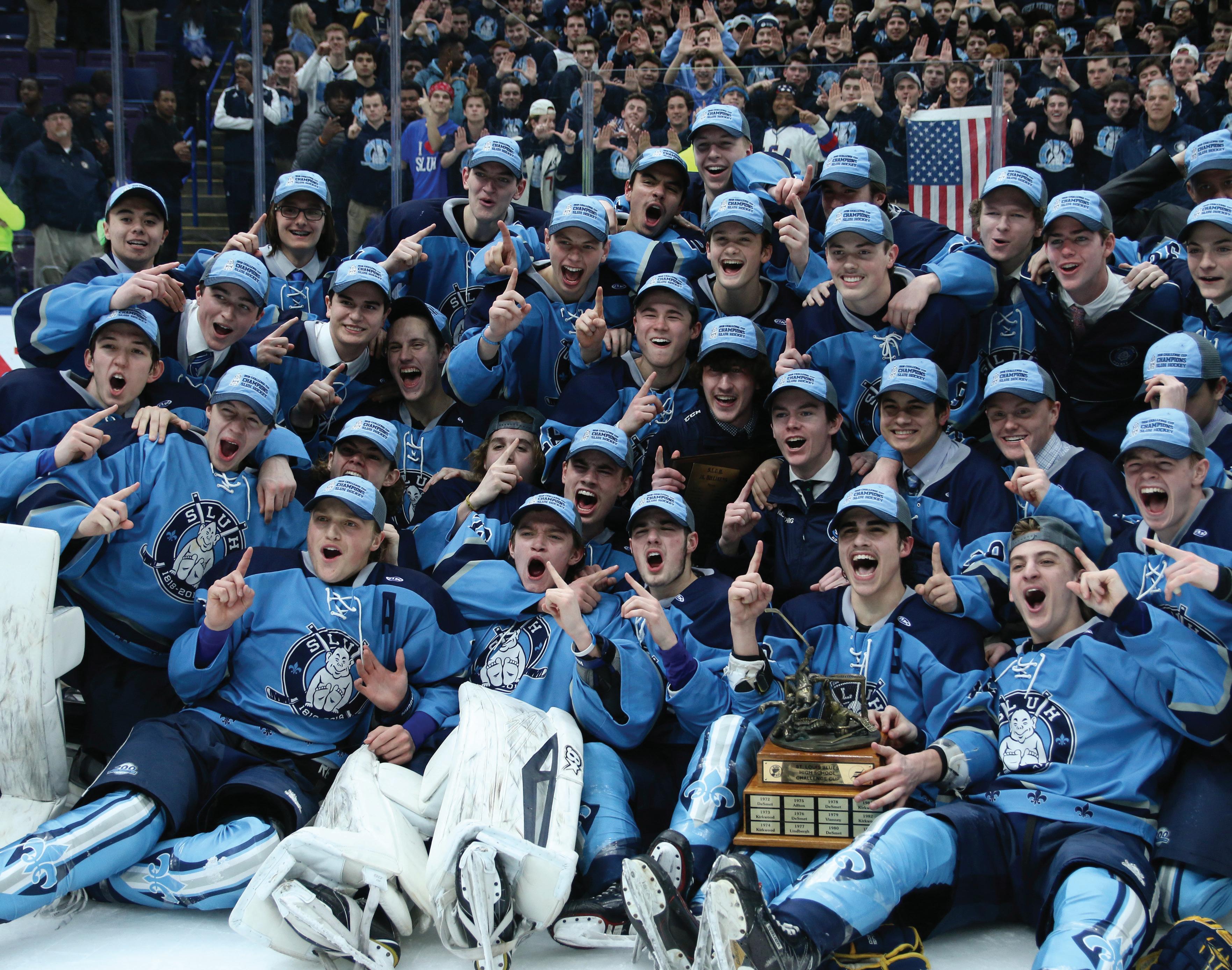
SLUH Sports: An Overview
 by SLUH
by SLUH
Athletics with special contributions by Joe Castellano ‘71 and Frank Pawloski ‘63
Joe Castellano ’71 was an award-winning journalist and Anheuser-Busch executive during his career. A Backer Awardee and past Chair of SLUH’s Board of Trustees and Cashbah auction, Castellano was a member of SLUH’s 1970 football state championship team. He wrote Bull in the Ring: Football and Faith: Refuge in a Troubled Time, which was SLUH’s 2018 all-school summer reading book.
Frank Pawloski ’63 was an executive sports producer at KMOX during his career. A recipient of SLUH’s Rev. John J. Divine, SJ Alumni Service Award, he was recognized with the Distinguished Service Award by the Missouri Interscholastic Athletic Administrators Association (MIAAA) in 2018. Pawloski has generously dedicated more than fifty years to SLUH sports as a statistician and record-keeper.
SLUH has a tradition of performance excellence on the fields, courts, tracks, pools, mats, rinks, and courses of our community, with formal inter-school competition dating back more than one hundred years. The list of state and national championship teams (p. 129) is a worthy accounting of the school’s success. Beyond the list, of course, is a rich heritage of characters and character-building, of celebrating victory and learning from defeat, of camaraderie and spirit and sportsmanship and lifelong friendships forged during those days of earnest play. Embedded in the SLUH mission is a call to assist in the intellectual, aesthetic, social, and physical formation of our students. Athletics have been a vital part of this over the years, both for those playing and for their classmates supporting them.
SLUH has been blessed with talented and devoted coaches over the years, some of whom are featured in the Legendary Teacher-Coaches section on pages 93-95.
The Football and Basketball programs began inter-school play in 1916. Paul Martel and Gary Kornfeld each coached football twentynine years; each had a team play in the Missouri state championship game, Martel in 1970, Kornfeld in 1991. The ’70 Junior Bills won the school’s only state title. In 1966, SLUH and archrival CBC played in Busch Stadium, drawing the largest crowd ever to watch a high school football game in Missouri. Six Junior Bills teams went undefeated. Henry Jones, Class of 1986, became an All-American at the University of Illinois, then a first-round draft choice of the Buffalo Bills, for whom he was an All-Pro safety and three-time Super Bowl finalist.
George Hasser (1946) and Henry Raymonds (1952) coached the basketball team to state titles, then Emmet Hanick did that twice, in 1958 and 1961, during a streak of five straight state tournament semifinals appearances from 1957–61. Erwin Claggett coached the Junior Bills to the semifinals in consecutive seasons, 2014–15 and
SLUH SPORTS: AN OVERVIEW 131
2015–16. Ed Macauley was an All-American at St. Louis University and a seven-time NBA All-Star.
In Soccer, the teams of coaches Ebbie Dunn and Charlie Martel each won more than five hundred games, and each coach was recognized as National Soccer Coach of the Year. Dunn’s teams won state titles in 1973 and 1990; Martel’s won in 2003. Dunn and alumni Bob Kehoe and Pat McBride are in the National Soccer Hall of Fame; Art (Buzz) Demling and Joe Hamm played on the 1972 U.S. Olympic team; Ty Keough was on the roster for the Olympic team and played for the World Cup team and twelve seasons as a pro; Jeff Cacciatore played in the Major Indoor Soccer League; Taylor Twellman was named National Player of the Year and played for the Major League Soccer’s New England Revolution; Tommy Meyer was a twotime All-American who played for the MLS champion Los Angeles Galaxy.
Steve Nicollerat’s teams have won more than 600 Baseball games, including a school-record twenty-four straight in 2011. Among the SLUH star alumni are Major League Baseball players Joe Schultz, Del Wilber, George Werley and Ken Sanders.
Track and Field coaches Dominic Calacci and Jim Linhares developed several individual state champions. Linhares led the team to its team state title in 2006, led by sprinter Paul Chaney, who won the 100- and 200-meter dashes. Linhares coached the Cross-country team for twenty-five years, and his teams won five of SLUH’s six state championships.
The school’s Water Polo, Racquetball, and Volleyball programs have produced championships consistently. Primarily under coaches Charlie Busenhart and Paul Baudendistel, twenty water polo teams have won state championships, and Dr. Joseph Koestner’s racquetball teams have won four
state and twelve national championships. The volleyball teams of coaches Paul Scovill and Jeff Cheak have won nine state titles, including the 2007 team that featured Murphy Troy, who played for the 2016 U.S. Olympic bronze medal team.
Another team that was difficult to beat in its day was the Junior Bills’ Rifle team, which won five national titles under Rev. Martin Hagan, SJ from 1959–64, then a sixth under coach William Bresnahan in 2004.
The Swimming team won Missouri championships in 1956 and 2003, and featured Jeff Commings, Class of 1991, who went on to become AllAmerican at the University of Texas. The Golf team won the 1952 state title, and produced professional tour player Jay Delsing. Other sports producing titles include the Tennis team, which won state championships in 1970, 1981 and 2006; the Lacrosse team that won state in 2009 under Coach Ron Kelam and in 2012 under Coach Mark Seyer; the Ice Hockey team, built by coach Charlie Busenhart from 1976–2012, which won titles under Coach Kevin Fitzpatrick in 2013 and 2018; and the Inline Hockey team, which won in 2011 and 2018.
The Wrestling program sent numerous athletes to the state tournament, with more than a dozen advancing to the semifinals and two finishing second: Craig Bayes at 127 pounds in 1963 and Bill Drury at 185 pounds in 1972.
These teams, coaches, and athletes are just a fraction of those that have worn the Blue and White over the years, linked indelibly to a tradition of sportsmanship and excellence more than a century in the making. It is a proud tradition. A tradition that continues. A tradition that never graduates.
TO GOD, WITH GRATITUDE | 200 YEARS OF SLUH 132
Rev.











of athletics, sitting on the sideline during the first SLUH-CBC football game at Busch Stadium on Nov. 6, 1966. The game drew a crowd reported at more than 31,500---the largest crowd ever to watch a high school football game in the state of Missouri.
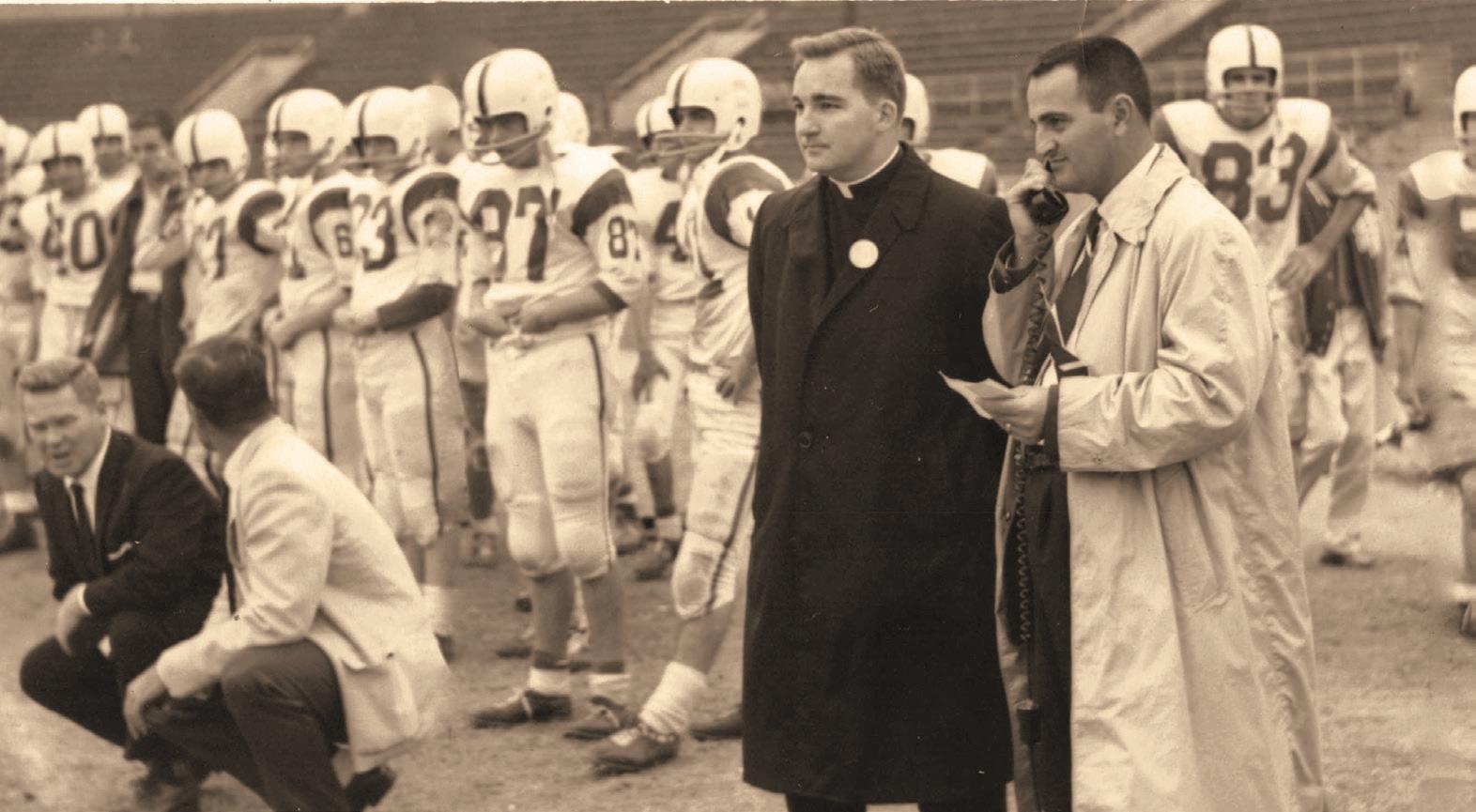



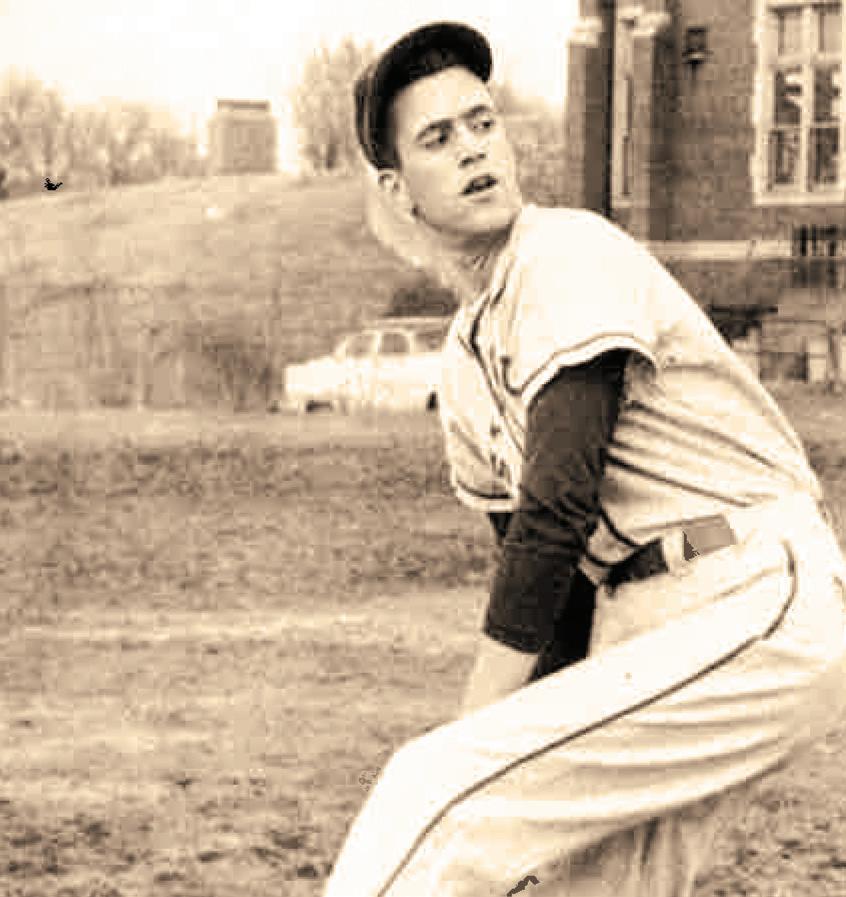
 Coaches Ebbie Dunn and Paul Martel (both kneeling), Father Ralph Houlihan, and Coach Joe Vitale.
Pete Wetzel, pitcher for Saint Louis University High team.
Philip Kellett SJ, long-time moderator
Cross Country coach Mr. Passarelli with Jerry and Larry Dirnberger.
Coaches Ebbie Dunn and Paul Martel (both kneeling), Father Ralph Houlihan, and Coach Joe Vitale.
Pete Wetzel, pitcher for Saint Louis University High team.
Philip Kellett SJ, long-time moderator
Cross Country coach Mr. Passarelli with Jerry and Larry Dirnberger.
133
McLaughlin, senior first baseman. SLUH SPORTS: AN OVERVIEW
The SLUH Wrestling program has sent several athletes to the state tournament.

Jeff Commings ‘91, an AllAmerican at the University of Texas and a record-setting Masters swimmer, is perhaps the most successful athlete to emerge from the SLUH Swimming and Diving program, which has brought home two state titles.










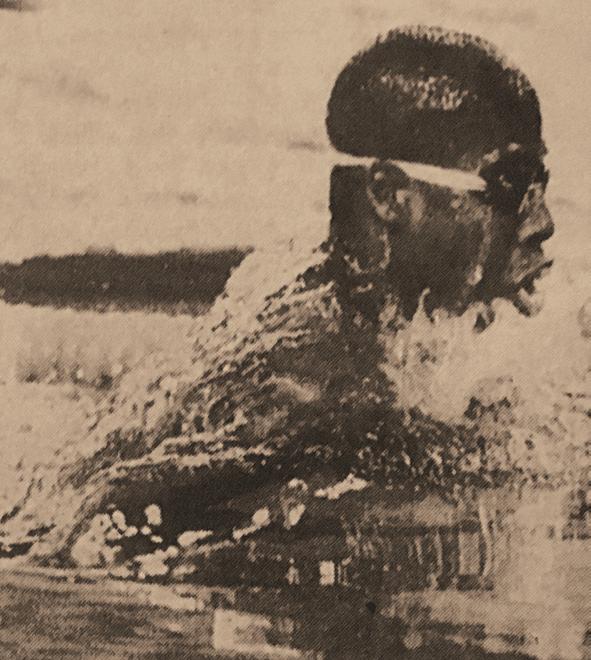

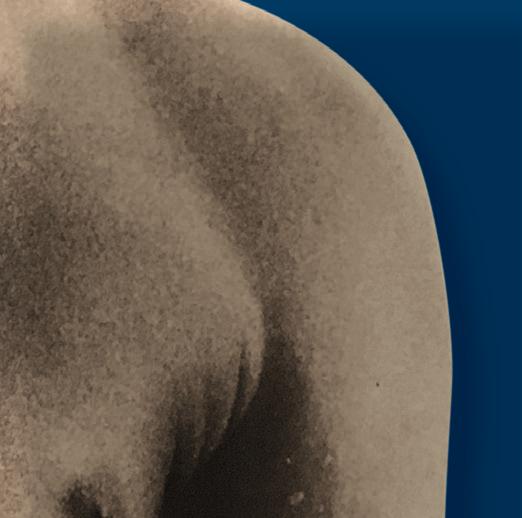



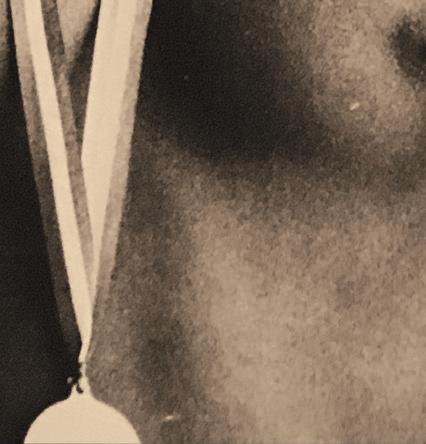



















The SLUH Golf team won the state title in 1952. The team was also the first at SLUH to be coached by a woman, college counselor Bonnie Vega.
The SLUH Rifle team won five national titles under Coach Martin Hagan, S.J., and a sixth in 2004 under Coach William Bresnahan.



 Jr. Bills celebrate after scoring a goal in the state championship game of the 1972-73 season. They defeated Rosary 2-1 to win the state title.
Jr. Bills celebrate after scoring a goal in the state championship game of the 1972-73 season. They defeated Rosary 2-1 to win the state title.
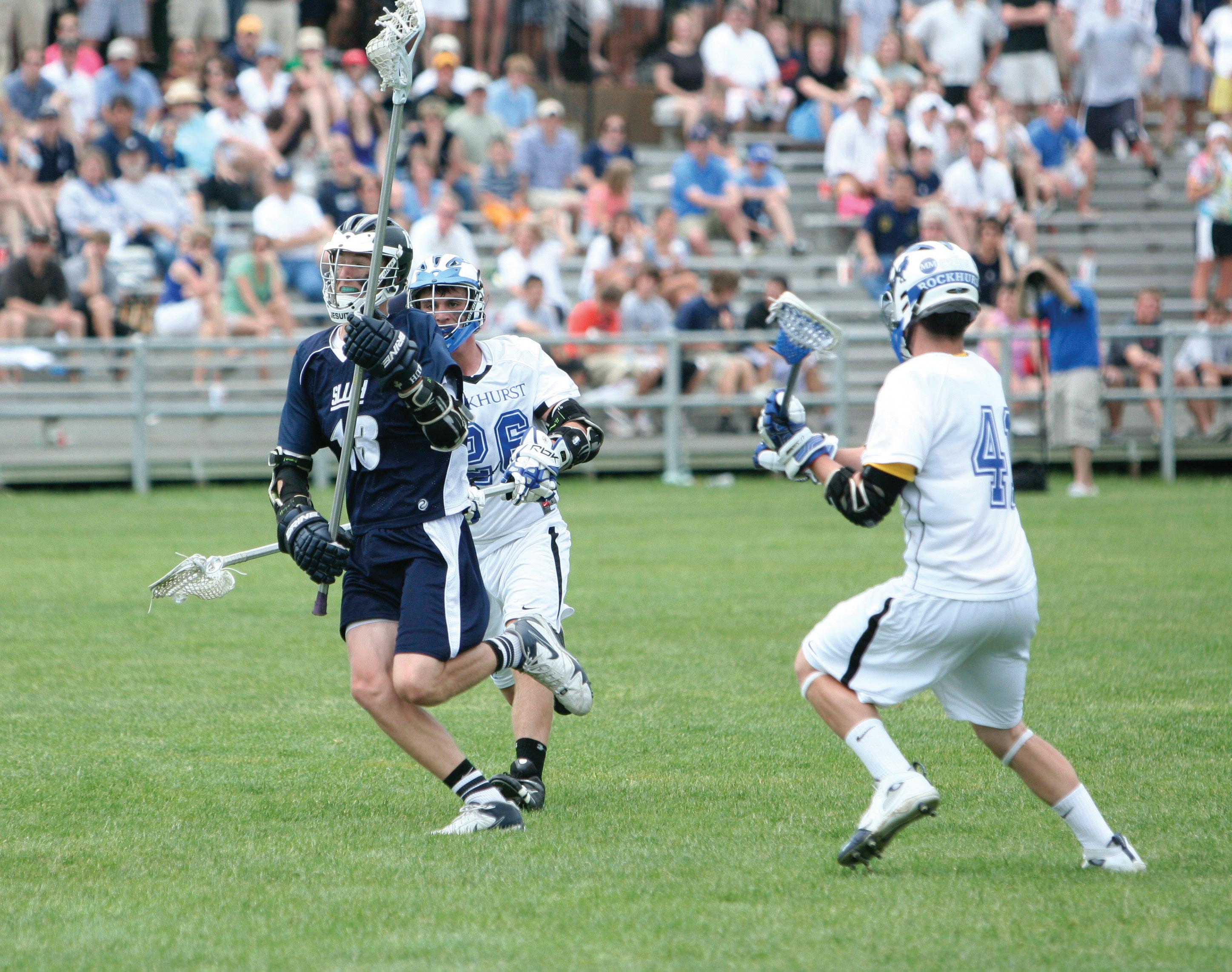
 The 2009 lacrosse team under Coach Ron Kelam earned a 20-3 record and a state championship. (pictured: Game versus Rockhurst on May 23, 2009.)
The 2009 lacrosse team under Coach Ron Kelam earned a 20-3 record and a state championship. (pictured: Game versus Rockhurst on May 23, 2009.)
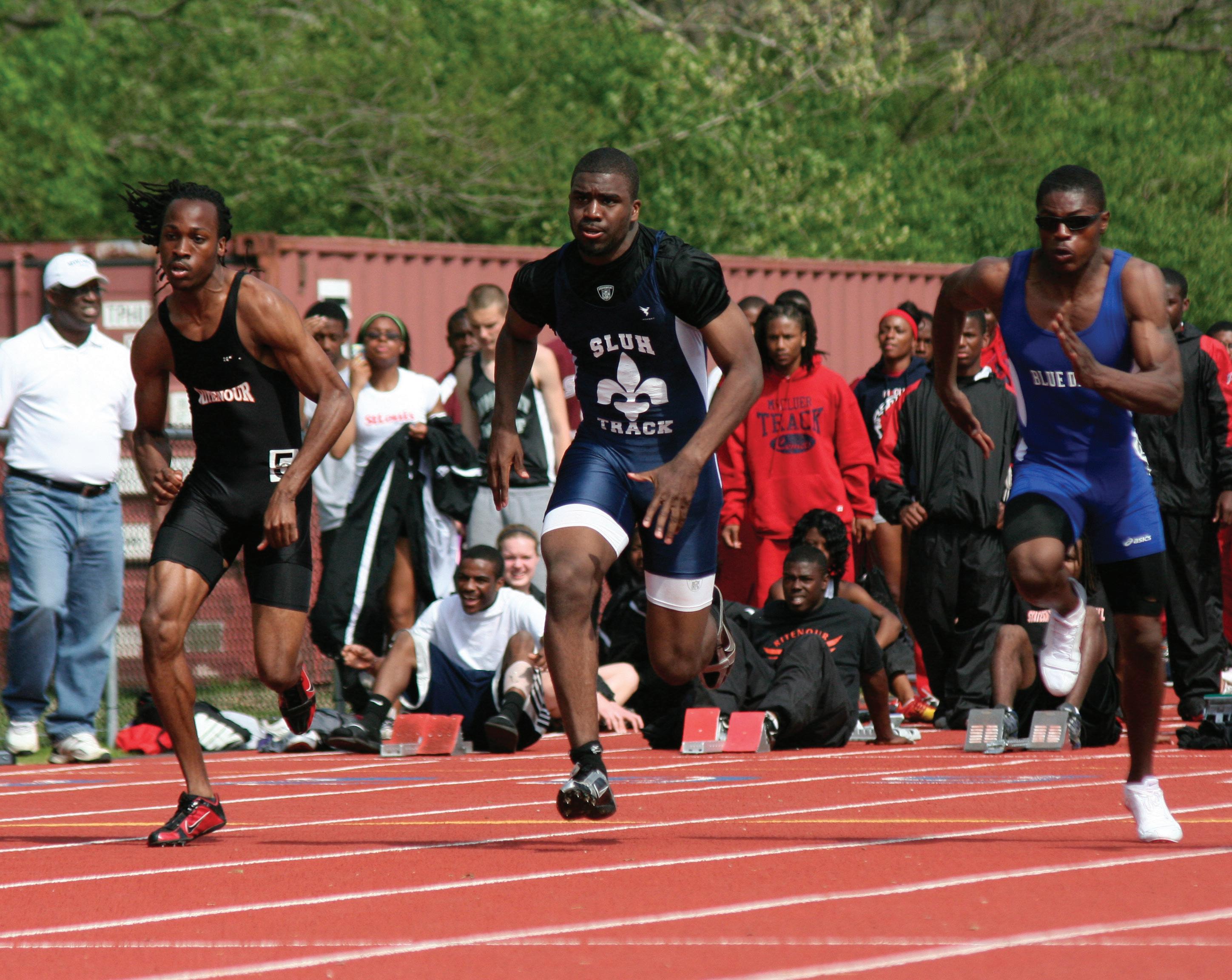
 Ronnie Wingo ‘09 was the state champion in both the 100-m and 200-m dashes in 2009. (pictured: Wingo, in middle, at the Ladue Invitational on April 25, 2009).
Ronnie Wingo ‘09 was the state champion in both the 100-m and 200-m dashes in 2009. (pictured: Wingo, in middle, at the Ladue Invitational on April 25, 2009).

 The 2007 volleyball team under Coach Paul Scovill was nearly perfect, earning a 29-1-1 record and a state championship. (pictured: Game versus Parkway Central on April 4, 2007.)
The 2007 volleyball team under Coach Paul Scovill was nearly perfect, earning a 29-1-1 record and a state championship. (pictured: Game versus Parkway Central on April 4, 2007.)
In 2013, SLUH earned its 35

 district championship. Brian Howard ‘13 (pictured in 2013 game versus Webster Groves), a dominating pitcher at SLUH and at TCU, was selected in the 8th round of the 2017 MLB draft by the Oakland Athletics.
district championship. Brian Howard ‘13 (pictured in 2013 game versus Webster Groves), a dominating pitcher at SLUH and at TCU, was selected in the 8th round of the 2017 MLB draft by the Oakland Athletics.
In 2017, SLUH’s basketball team clinched the Metro Catholic Conference championship and finished fourth in state. Brandon McKissic ‘17 (pictured versus Webster Groves on January 27, 2017) was the first Jr. Bill to be named all-state three times (2015, 2016, 2017).


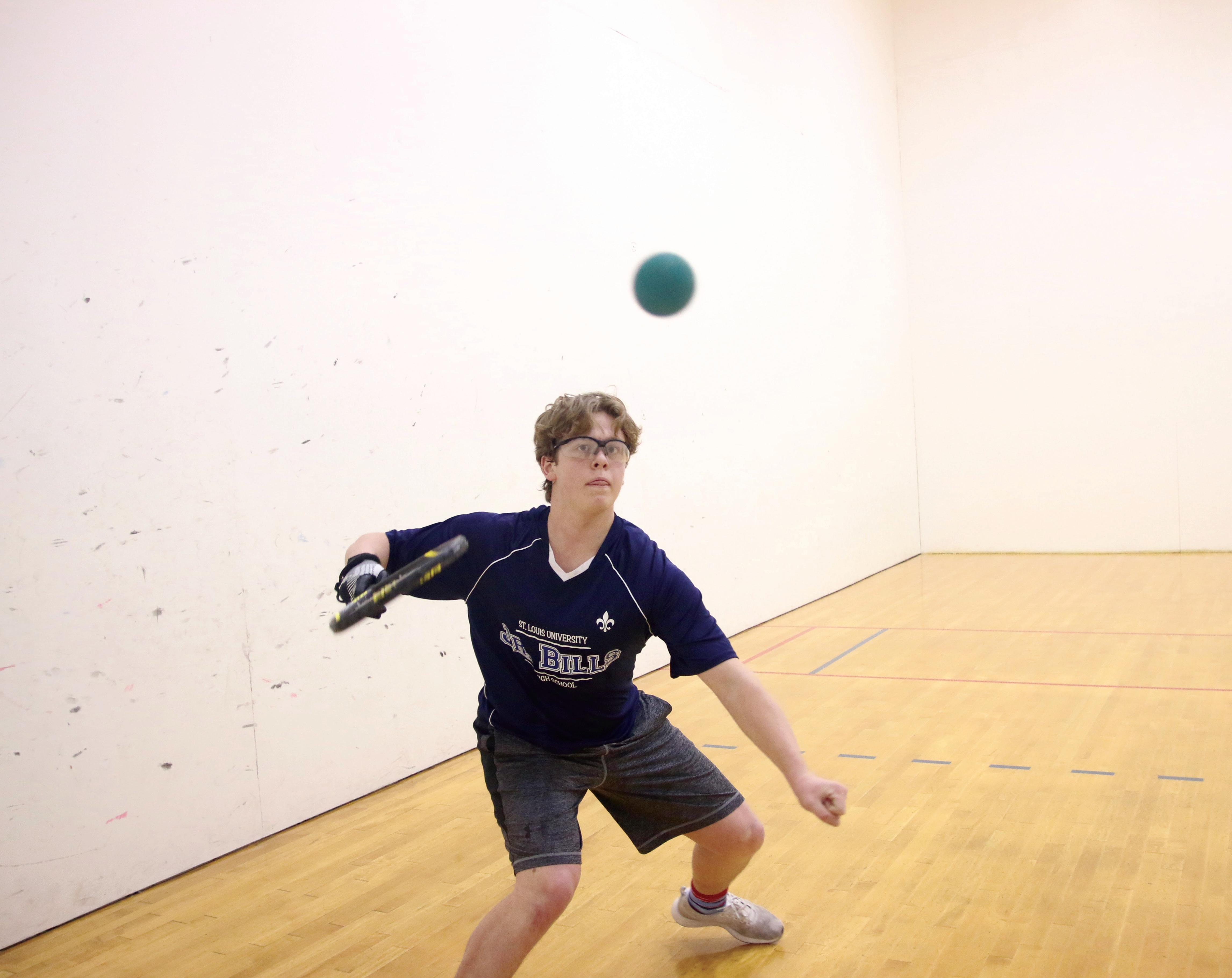
 The racquetball team has earned 18 state championships and 12 national titles. (pictured: Match versus CBC and Lafayette on January 30, 2018. Later that season the team won a national title.)
The racquetball team has earned 18 state championships and 12 national titles. (pictured: Match versus CBC and Lafayette on January 30, 2018. Later that season the team won a national title.)

 SLUH rugby finished their 2018 season as the state runner-up. (pictured: game versus Brother Rice on February 24, 2018.)
SLUH rugby finished their 2018 season as the state runner-up. (pictured: game versus Brother Rice on February 24, 2018.)
The SLUH athletic program has continued to expand, adding new sports like Ultimate Frisbee. (pictured:

earned its first state
 Joe Lux ’18, playing Ultimate Frisbee vs. Chaminade on April 7, 2018.)
SLUH’s inline hockey program
championship in 2011. (pictured: Championship game on May 6, 2011.)
Joe Lux ’18, playing Ultimate Frisbee vs. Chaminade on April 7, 2018.)
SLUH’s inline hockey program
championship in 2011. (pictured: Championship game on May 6, 2011.)
SLUH earned one of its 20 state titles in 2015.

 (pictured: Game versus Lindbergh on May 14, 2015.)
Coach Paul Baudendistel ‘90, a physics teacher at SLUH, earned ten state championships as varsity head coach of the water polo team from 2003-18. He was inducted into the Missouri Water Polo Hall of Fame in 2018.
(pictured: Game versus Lindbergh on May 14, 2015.)
Coach Paul Baudendistel ‘90, a physics teacher at SLUH, earned ten state championships as varsity head coach of the water polo team from 2003-18. He was inducted into the Missouri Water Polo Hall of Fame in 2018.
Africa, 80
African-American, 46-47, 54, 66, 88, 96, 98, 100
African-American Catholic Youth Bible, 89
Agniel, Sean, 123
Alumni Park, 50, 72, 75
Alumni Service Award, 42, 127
Alvarez, Eugenie, 4-5, 58, 111
Alyward, Steve, 74
Anheuser-Busch, 21
anti-Catholic feeling, 16
Arlington National Cemetery, 92 Associated Press, The, 48
Association for Cultural Enrichment, 98-99
Backer, Anna, 2, 30-33, 36-38, 40, 76, 108, 126
Backer Award, 47, 126
Backer Endowment, 84
Backer, George, 2, 30, 32, 126
Backer Gymnasium, 73
Backer, Matthias H., 126
Backer Memorial, 35-36, 43-45, 58, 61, 6870, 73, 96, 101, 105, 111, 114
Baker, James H., 124
Bailey, Richard, 72, 77, 79, 124-125
Baltz, David P., 126
Bannister, Del L., 126
Bannister, Joseph P., 127
Bannister, Robert, 64, 78, 125-126
Barnidge, Robert, 126
Barry, James T., 127
baseball, 62, 73, 84, 93-94
Index
bashball, 60
basketball, 25, 48, 58, 60-62, 73, 129
Becvar, Dan, 104
Becvar, Sarah, 104
Becvar, Tom, 76, 104
Belgian, 7, 90
Bender, John, 25
Benoit, Francis G., 36
Berra, Thomas P., 128
Biddle, Thomas, 8
Billikens, 25, 48
Biondi, Lawrence H., 128
Black Tuesday, 43
Blackside, Inc., 66
Blasé, James G., 127
Blassie, Michael, 92
bookstore, 50-51
Boston Celtics, 48
Bouhasin, John D., 126
Bowdern, William S., 125 Bowling Club, 104
Brennan, William, 96
British, 16
Brotherhood for African-American Advancement, 98
Brown, Polly (Molly), 7, 13
Brown, Thomas, 7, 12-13
Brown v. Board of Education, 54
Bruno, J. Michael, 127
Burgett, Paul J., 126
Burrowes, Alexander J., 124
Burshek, James J., 128
Busch Stadium, 43
Busenhart, Charlie, 79, 93
Bush, George H.W., 66
Bushart, Leopold, 124
Byrd, Dee, 101
Byrnes, Dolores, 123
Cahill, Richard A., 124
Calacci, Dominic, 58, 60-61
Calhoun, John C., 6
Callahan, George G., 127
Calvary Cemetery, 12
Cambodian, 92
Camp Jackson, 20
Camus, Albert, 86
Canadian, 21, 25
Carrell, George, 124
Carruthers, Alan, 124, 128
Carter, John, 47, 54
Casey, Cathlin, 77
Cashbah, 50, 72, 76, 84
Castellano, Joseph P., 126
Catholic, 22, 33, 126
Catholic Church, v, 3, 5, 48, 109
Catholic immigrants, 16
Catholic newspapers, 47
Catholic schools, 48, 54, 77, 100, 105
Catholicism, 16
CBS News, 92
Charbonneau, Jean Baptiste, 4-5
Charbonneau, Toussaint, 4

Chen, Yining, 76
Chicago, 14, 77
Chicago White Sox, 84
Chickey, Robert F., 127
Chinese, 64, 76, 90
cholera, 18
Choppesky, John C., 124
Christ, Jesus, v, vii, x, 15, 47, 70, 112
Christian, x-xi, 6, 10, 47, 94
Christmas, 80
Circus Club, 52
civil rights, 29, 43, 66-67
Civil War, 2, 12, 18, 20-22
Clark, Charles W., 70
Clark, Eric, 88-89, 98, 100
Clark, Henry, 88
Clark, William, 4, 10-11
Cleeland, Chris, 76
Cleeland, Patricia, 76
Cleeland, Sawyer, 76
Cleveland Indians, 62
Cloud, C.H., 37
Cold War, 66-67
Computer Club, 102
computers, 49, 93-94
Confederate States Army, 21
Conway, Charlie, 74-75
Coosemans, Ferdinand, 124
Corrigan, James B., 125
Costello, Robert, 73, 124
Cotter, Jan, 101
Coyle, Irene, 76-77
Creighton University, 105
Cummings, Thomas, 72, 84, 87, 124
INDEX 145
Cummins, Dennis, 79
Curdt, Tim, 106
Danis Field House, 48, 73, 105
Dauphin Players, 52
Dauphin Yearbook, 42, 74, 77, 96, 114
de Andreis, Felix, 4
De Smet Jesuit High School, 64
De Smet, Peter J., 7, 20-21, 64
DeBaun, Michael R., 126
Defense Department, 92
Dickmann, Bernard F., 43
Dickmann, Jonathan, 102
Digman, Thom, 105
Direction Days, 106
Dismas House, 70
Distler, Paul, 63
Divine, John J., vii, 42, 45, 81, 127
Donohue, Terry, vii, 123, 127
Dooley, Tom, 66-67, 126
Doran, William T., 124
Doxie, 50
Doyle, William, 68-69
draft, 20, 46, 79
Dressel, Leo, 87, 98, 124, 125
Drone, Tim, 68-69, 126-127
Druyts, John Baptist, 15, 124
DuBourg, Louis W.V., 3-7, 12, 90
Dubuque, Theodore J., Jr., 126
Duchesne, Rose Philippine, 11
DuMont, Ben, 123
Dunn, Edward “Ebbie”, 60-61
Durso, Michael H., 125
Eads Mansion, 24
Eichhorn, David G., 128
Elet, John, 14-15, 124
English, 14, 54, 57, 68, 77-79, 82-83, 86, 88, 91, 94, 96
Eyes on the Prize, 66
Faherty, William, 114, 126
Fathers Club, 49, 84, 128
Ferrara, Francis A., 127
Filippine, Edward L., 126
Finan, John A., 127
fire, xii, 18
Fleming, David, 126
Florissant, 6-8, 10, 13
Fogerty, Timothy R., 128
Fordyce, Harriet Frost, 21
football, 25, 54, 58, 60-61, 63, 68-69, 7273, 79, 93-95, 104, 106-107, 129
French, 2-3, 14, 52, 62, 74-75, 77, 86, 90-91
Frieden, John Pierre, 124
Frost, Daniel Morgan, 20-21
Ganss, George E., 126
Gantner, George E., Jr., 126
Garraghan, Gilbert, 7, 114
Gateway Arch, 43
George, Bill, 86, 91
Georgetown University, 79
German, 16
Gibbons, Ian, xi, 87, 125, 128
Gleeson, Edward, 124
Glennon, John, 33
Go Forth campaign, 78, 105 golf, 129
Gonzaga Hall, 24
Grana, Joseph M., 127
Granich-Kovarik, Lisa, 123
Grant, Terry, 79
Great Depression, 42
Greek, 77-78, 86, 111
Grimmelsman, Joseph, 124
Gund, Robert L., 127
Gunn, Donald J., 126-127
Gunn, J. Donald, 126
Hagan, Martin “Marty”, 49, 56-57, 74, 79, 106
Haiti, 3
Hampton, Henry, 66-67, 126
Hanick, Emmet, 58, 60
Harrington, Michael, 66
Harrison, Danielle, 88-89
Harrison, Jeff, 78, 123
Hawaii, 92
Heithaus, Claude, 46-47, 54, 126
Hellman, Theodore W., 126
TO GOD, WITH GRATITUDE | 200 YEARS OF SLUH
Hellmuth, George F., 126
Hilliard, David A., 126
Hiroshima, 46
hockey, 93, 95, 129
Hoeffer, James F.X., 124
Hogan, James G., 125
Holloran, Robert X., 127
Honduras, 80, 90-91
Hoodlum Priest, The, 70
Horst, Ron, vii, 123, 127
Houlihan, Ralph, 64, 123, 125-126
Hurley, Daniel P., 127
Hutchison, Stephen E., 126-127
Hyland, Robert F., 126
Imagining 18, 105, 108
immigrants, 16
Indiana University, 77
Irish, 16, 90-91
Jackson, Billy Lee, 70
Jackson, Claiborne, 20
Jackson, Robert L., 126
Jacobsmeyer, Gregory H., 124
James, William F., 126
Jedlicka, Joseph J., 127-128
Jefferson Barracks National Cemetery, 92
Jefferson City, 63, 70
Jefferson, Thomas, 2-3
Jesuit, v, vii, xi-xii, 3, 6-8, 10-16, 18, 20, 22, 26, 29-33, 36-37, 40, 42, 44, 47, 49-50, 54, 56-58, 61-64, 66, 68, 72-74, 79, 87-88, 90-94, 100, 101, 105-106, 108-109, 126
Jesuit Archives and Research Center, 123
Jesuits of the Middle United States, The, 114 Jim Crow, 47
John J. Divine, S.J., Alumni Service Award, 127
Johnson, Andrew, 21
Johnson, Lyndon, 66 Jones, Darryl, 128
Jones, Melissa, 78, 128
Junior Billikens, vii, xi, 25, 52, 57, 90, 95, 106
Kansas, 13
Kansas City, 25, 105
Kavanaugh, John F., 126
Keefe, Richard, 62, 74-75
Keeline, Thomas J., 127
Keene, Jim, 102
Keller, Joseph, 124
Kellett, Phil, 62
Kelly, R. Emmet, 126
Kennedy, John F., 66
Kenrick, Francis Patrick, 13
Kenrick, Peter Richard, 12-13, 22
Kentucky, 13
Klenklen, Helen, 101
Knake, Ann, 123
Knobbe, Janet, 66
Know-Nothings, 16
Koestner, Joe, 94-95
Komos, Joseph P., 128
Kornfeld, Gary, 93-94
Kovarik, Frank, vii
Kramer, W. Joseph, 79
LaBarge, Mark J., 127
lacrosse, 129
Ladies of the Sacred Heart, 11
Lafayette Square, 24
Lally, Dan, 128
Laos, 66
Laughlin, David J., vii, 105, 123, 124
Lenin, Vladimir, 47
Lewis and Clark Expedition, 4
Linhares, James, 94-95, 123
Litteken, Aloys H., 128
Louisiana, 13-14
Louisiana Territory, 2-3
Loyola Academy, 24, 88, 100
Loyola Hall, 24, 33, 47
Ludovican, The, 86
Luepke, Henry F., 127
Lynch, Robert L., 127
Lyon, Nathaniel, 20-21
Macauley, Ed “Easy Ed”, 48, 126
Maplewood, 45
Martel, Paul, 60-61
Martini, Eilene, 77
Maryland, 6-7
Matecki, Paul L., 128
McAlpin, F. William, 126
McAuliffe, Daniel J., 126-128
McClellan, James S., 126
McConaghy, Mary Lee, 77-78
McManus, Neil P. 44, 125
McNamee, Patrick R., 128
McSherry, William, 12-13
Meconi, David V., 128
Mehan, Richard J., 126
Mehlville, 95
Merriott, Charles, 90-91
Messineo, Anthony I., 126
Metro Catholic Conference, 95
Mexican, 14
Mexican-American War, 14
Meyer, Rudolph, 124
Miller, Carl, 58, 60-61
Millman, Richard G., 127
Missey, Steve, 82
Missouri Gazette, 4-5
Moeller, Henry, 22, 124
Mohammed, 47
Moran, John, 125
Moran, Rich, 63, 86, 123
Morgan, Eldridge, 54
Morris, Eugene, 88
Morris, George, 90
Mothers Club, 38, 50, 84, 128
Murphy, James “Doc”, 60-61, 127
Murray, Don, 70
Murray, Leonard M., 124
Nagasaki, 46
Nanjing Foreign Language School, 76, 90
Napoleon, 2-3
National Basketball Association, 48
National Catholic Educational Association, 105
Native Americans, 6-7, 10-11, 56
Neale, Charles, 12
Nerinx Hall, 76, 78
“nickel”, 49, 56
Nicollerat, Steve, 93-94
Noonan, Bill, 86
Northcott, Barbara, 123
O’Brien, Marty, vii, 114, 123, 127
O’Connell, Tim, vii, 123, 127
O’Connor, Michael J., 30, 37
O’Neil, Thomas, 20-21, 124
Organization for Black Achievement, 96, 100 Other America, The, 66
Otting, Bernard J., 124
Overkamp, Bob, 102
Owens, Paul, 87, 125
Pacelli, Eugenio Maria Giuseppe Giovanni, See Pope Pius XII.
Pacific Ocean, 44
Padberg, John W., 126
Parry, William F., 125
Paschang, Adolph J., 126
Pawloski, Francis J., 127
Peace Corps, 66
Pearl Harbor, 44
Perl, Richard D., 126
Perryville, 6
Pohrer, Jack E., 127
Poirier, Robert L., 128
Pope Francis, 109
Pope Gregory XVI, 13-14
Pope Paul III, x
Pope Pius XII, 40
Pottinger, Jeff, 109
Presbyterian, 76
Pretz, Florence, 25
Price, Melvin C., 126 prom, 47
Purnell, Jason, 123, 128
Queen, Isaac and Succy, 7
Queen, Moses and Nancy, 7
racquetball, 94-95 129
Randolph, A. Philip, 66
Raterman, James, 82-83
rec room, 49-50, 56-57, 79
Reedy, Mary, 128
Reedy Press, 123
Reis, Carl J., 126, 128
Ribaudo, Martin J., 127
riflery, 49, 56-57, 129
Robinson, James, 84-85
Robinson Library, 67-68, 84-85
Robison, William F., 124
robotics, 93
Robotics Team, 49
Rockhurst High School, 105
Rodgers, Paul, 126
Rodgers, Tim, 123
Rogers, William Banks, 24, 124
Rooney, Richard R., 45, 124
Rosati, Joseph, 7-8, 14, 90
Rossow, Carl J., 126
Running of the Bills, 106-107
Russian, 64, 80, 90-91
Rustin, Bayard, 66
Ryan, William J., 125
Sacagewea, 4-5
St. Anthony’s Hospital, 76
Saint-Domingue, 3, 90
St. Ferdinand, 11
St. Francis Xavier (College) Church, 30, 38, 46-47
St. Henry’s Parish, 96
St. Ignatius of Loyola, x-xi, 14, 68-69
St. Louis Academy, 4, 24, 33
St. Louis Archdiocese, 12, 33, 47, 54, 88
St. Louis Arsenal, 20
St. Louis Cardinals, 84
St. Louis College, 4-8, 10, 14
St. Louis Diocese, 7
St. Louis Globe-Democrat, 70
St. Louis Hawks, 48
Saint Louis (person), 3
St. Mary’s Hospital, 76
St. Mary’s Press, 89
St. Peter’s Basilica, 109
St. Peter’s Square, 109
St. Regis Seminary, 10-11
St. Stanislaus, 6, 13
St. Vrain, Bob, vii, 123, 127
Salsich, Peter W., 126
Santel, Jim, 82
Santel, Tom, 82, 126, 128
Schaefer, John H., 128
Schenk, Ralph, 125
Schenkenberg, Mary, 78, 123, 125
Schlafly, Daniel L., 126
Schulte, Joseph, 52-53, 126
Sciuto, Matthew C., 127
segregation, 47
Senior Follies, 42, 62, 104
Senior Project, 75, 80, 82
Sheahan, Gerald, 64, 73, 101, 125
Sheehy, Thomas J., 124
Shenker, Morris, 70
Sheridan, Paul, 73, 124, 128
Sheridan Stadium, 73
Shilligo, Lee, vii, 123, 127
Shocklee, John A., 126
Si Commons, 73, 105
Sisyphus, 86
slavery, 3, 7, 10, 12-14, 20, 47
soccer, 48, 60-61, 73-74, 129
Society of Jesus, v, vii, x, xi, 6, 8, 14, 36, 112
South Dakota, 56
Spanish, 3-4, 14, 90-91
Staley, Martha, 128
Stevens, Josh, 123
Stowe Teacher’s College, 47, 54
Stunteback, Francis, 124
swimming, 129
Switzerland, 38
Tai, Ching-ling, 90
Theseus, 111
Thomas, Al G., 54
Thomas, Norm, vii, 123, 127
Thornton, Thomas, 50-51
Tomb of the Unknown Soldier, 92
tornado, 26, 35-36
track, 58, 61, 73, 129
Tucker, Raymond, 43
INDEX 147
Turner, Gene, 88
United States Army, 44, 79
United States Coast Guard, 45
United States Marines, 79
United States Navy, 44-45, 66
University News, 47
University of London, 47
University Prep News, 40, 42, 44-46, 52, 63, 66, 79-86, 93, 95, 102, 114
Upward Bound, 96-98
Van Ackeren, Maurice E., 125
Van de Velde, James, 124
Van Quickenborne, Charles Felix, 7-8, 10-11, 14, 47
Vatican, The, 109
Verdin, John, 124
Verhaegen, Peter J., 12-14, 124
Vietnam War, 79-80, 92
Vietnamese, 66, 79-80, 92
Vincentians, 4, 7, 12
Virgin Mary, 18
Vision 2000, 73
volleyball, 73, 104, 129
wallball, 49, 56
Walsh Stadium, 72
Walter Reed Hospital, 44
Walther, James A., 127
war, xii, 6, 21, 29, 46 War on Poverty, 66 Washington University, 43, 68
water polo, 93, 129
Watergate, 80 Watson, Erma, 89 Watson, Gertrude, 88, 96 Wayne, Dave, 80 Weber, Joseph A., 127 Webster Groves, 79 Wehner, Dick, 94-95 Weiand, John A., 124-125
Weiss, Robert F., 124, 126
Weller, John C., 127
White House, 42
Wild, Kenneth S., 126
Wildwood, 106
Wilhelm, Mark A., 126-128
Williams, John W., 127
women, 76-78, 90
World War II, 40, 44-46, 49, 84
Wunderlich, John D., 126-128
Zealand, Joseph, 124
Zimmerman, Frederick, 44, 125
TO GOD, WITH GRATITUDE | 200 YEARS OF SLUH 148








 BY FRANK KOVARIK ’94
BY FRANK KOVARIK ’94


















 Ian Gibbons, SJ Principal
AMDG
Ian Gibbons, SJ Principal
AMDG




















































































































































































































































































 An 1869 graduate of Saint Louis University, George Backer made his fortune as a miller of wheat and investor in mining. He died in 1919.
An 1869 graduate of Saint Louis University, George Backer made his fortune as a miller of wheat and investor in mining. He died in 1919.





























































































































 Joe Schulte ’54 with his children at a 2005 gala formally dedicating the SLUH theater in his name.
Joe Schulte ’54 with his children at a 2005 gala formally dedicating the SLUH theater in his name.




 John Carter, the first black student to attend SLUH, started as a sophomore in 1946.
John Carter, the first black student to attend SLUH, started as a sophomore in 1946.




















































































































 Two generations of the Prep News: pictured above are Tom Santel ’76 and his son Jim Santel ’08, both editors in chief of the newspaper, along with their respective moderators, Jim Raterman and Steve Missey ’88.
Senior Project has become an integral part of the SLUH student’s experience.
Created at the instigation of SLUH students in the classes of 1970 and 1971, the Senior Project constitutes a month-long experience of service.
Two generations of the Prep News: pictured above are Tom Santel ’76 and his son Jim Santel ’08, both editors in chief of the newspaper, along with their respective moderators, Jim Raterman and Steve Missey ’88.
Senior Project has become an integral part of the SLUH student’s experience.
Created at the instigation of SLUH students in the classes of 1970 and 1971, the Senior Project constitutes a month-long experience of service.
































































































 Members of the Association for Cultural Enrichment at SLUH (ACES) gather before leaving for their annual retreat.
Members of the Association for Cultural Enrichment at SLUH (ACES) gather before leaving for their annual retreat.




































































































































 by SLUH
by SLUH
















 Coaches Ebbie Dunn and Paul Martel (both kneeling), Father Ralph Houlihan, and Coach Joe Vitale.
Pete Wetzel, pitcher for Saint Louis University High team.
Philip Kellett SJ, long-time moderator
Cross Country coach Mr. Passarelli with Jerry and Larry Dirnberger.
Coaches Ebbie Dunn and Paul Martel (both kneeling), Father Ralph Houlihan, and Coach Joe Vitale.
Pete Wetzel, pitcher for Saint Louis University High team.
Philip Kellett SJ, long-time moderator
Cross Country coach Mr. Passarelli with Jerry and Larry Dirnberger.








































 Jr. Bills celebrate after scoring a goal in the state championship game of the 1972-73 season. They defeated Rosary 2-1 to win the state title.
Jr. Bills celebrate after scoring a goal in the state championship game of the 1972-73 season. They defeated Rosary 2-1 to win the state title.

 The 2009 lacrosse team under Coach Ron Kelam earned a 20-3 record and a state championship. (pictured: Game versus Rockhurst on May 23, 2009.)
The 2009 lacrosse team under Coach Ron Kelam earned a 20-3 record and a state championship. (pictured: Game versus Rockhurst on May 23, 2009.)

 Ronnie Wingo ‘09 was the state champion in both the 100-m and 200-m dashes in 2009. (pictured: Wingo, in middle, at the Ladue Invitational on April 25, 2009).
Ronnie Wingo ‘09 was the state champion in both the 100-m and 200-m dashes in 2009. (pictured: Wingo, in middle, at the Ladue Invitational on April 25, 2009).

 The 2007 volleyball team under Coach Paul Scovill was nearly perfect, earning a 29-1-1 record and a state championship. (pictured: Game versus Parkway Central on April 4, 2007.)
The 2007 volleyball team under Coach Paul Scovill was nearly perfect, earning a 29-1-1 record and a state championship. (pictured: Game versus Parkway Central on April 4, 2007.)

 district championship. Brian Howard ‘13 (pictured in 2013 game versus Webster Groves), a dominating pitcher at SLUH and at TCU, was selected in the 8th round of the 2017 MLB draft by the Oakland Athletics.
district championship. Brian Howard ‘13 (pictured in 2013 game versus Webster Groves), a dominating pitcher at SLUH and at TCU, was selected in the 8th round of the 2017 MLB draft by the Oakland Athletics.



 The racquetball team has earned 18 state championships and 12 national titles. (pictured: Match versus CBC and Lafayette on January 30, 2018. Later that season the team won a national title.)
The racquetball team has earned 18 state championships and 12 national titles. (pictured: Match versus CBC and Lafayette on January 30, 2018. Later that season the team won a national title.)

 SLUH rugby finished their 2018 season as the state runner-up. (pictured: game versus Brother Rice on February 24, 2018.)
SLUH rugby finished their 2018 season as the state runner-up. (pictured: game versus Brother Rice on February 24, 2018.)

 Joe Lux ’18, playing Ultimate Frisbee vs. Chaminade on April 7, 2018.)
SLUH’s inline hockey program
championship in 2011. (pictured: Championship game on May 6, 2011.)
Joe Lux ’18, playing Ultimate Frisbee vs. Chaminade on April 7, 2018.)
SLUH’s inline hockey program
championship in 2011. (pictured: Championship game on May 6, 2011.)

 (pictured: Game versus Lindbergh on May 14, 2015.)
Coach Paul Baudendistel ‘90, a physics teacher at SLUH, earned ten state championships as varsity head coach of the water polo team from 2003-18. He was inducted into the Missouri Water Polo Hall of Fame in 2018.
(pictured: Game versus Lindbergh on May 14, 2015.)
Coach Paul Baudendistel ‘90, a physics teacher at SLUH, earned ten state championships as varsity head coach of the water polo team from 2003-18. He was inducted into the Missouri Water Polo Hall of Fame in 2018.